NORTH SAILS BLOG
Alle
Events
Guides
News
People
Podcast
Sustainability
Tech & Innovation
Travel & Adventure
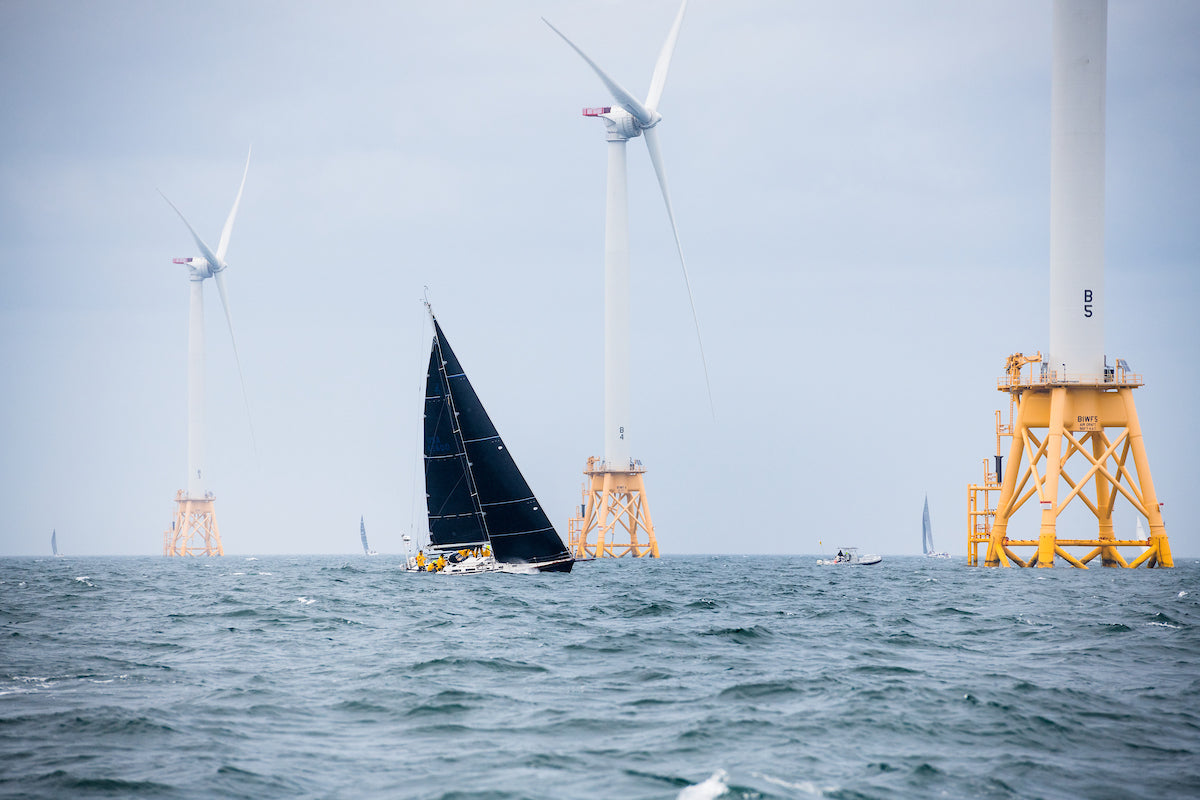
A SURGE IN THE ATMOSPHERE AT BLOCK ISLAND RACE WEEK
ONE FOR THE BOOKS
A Surge In The Atmosphere At Block Island Race Week
© Cate Brown
There was a distinct shift in the vibe at Block Island Race Week this year. The new title sponsor Margaritaville injected the 28th edition of the weeklong regatta with a new energy, impressive onshore activities, and—last but not least—a surprise closing gig by the legendary Jimmy Buffett.
As a returning partner, North’s involvement with Block Island Race Week this year included live coaching and daily debriefs, complimentary weather forecasting, the pop-up sail repair loft, and hosting the Lowell North Memorial Lay Day 5K.
Over 20 North Sails experts from five lofts were on the island to support all competitors, including Northeast Sales Manager, Kimo Worthington—one of only three Americans who’s won both the America’s Cup and The Ocean Race. Kimo helped Chuck Allen coach the performance cruising fleets, offering the complimentary coaching program to all boats. By providing photography and video from the race course, Kimo and Chuck were able to help teams improve boat handling and sail trim to perform better in their next race.
© Cate Brown
122 boats dealt with a variety of conditions throughout the week. Monday saw 8-12 knots and sunshine. Tuesday’s Around the Island Race lived up to its reputation of delivering a wide range conditions: rain and wind throughout the race, capped by thunderstorms and torrential rain; the North Service loft was kept busy with repairs that night.
Sailing around the wind farm kept navigators and tacticians on their toes during the Around-The-Island Race.
The newly resurrected Lay Day was embraced by crews and families with the introduction of The Storm TRYathalon. First thing in the morning, North Sails hosted the inaugural 5k, bringing over 100 runners out to start the day. Ben Quatromoni, pitman aboard Interlodge IV, was the overall winner with a superb time of 19 minutes, 55 seconds. Quatromoni got out to a fast start and left his lone competitor behind during the long uphill climb along Ocean and Beach avenues. The Newport, Rhode Island resident was one of three Interlodge IV entrants along with headsail trimmer Dave Armitage and navigator Geoff Ewenson. The afternoon brought more competition, with Trivia presented by Margaritaville followed by a New England Ropes Tug-O-War. Wednesday was also the lightest air day, perfect for some quality time on shore to enjoy New England's summer hotspot.
© Cate Brown
© Cate Brown
© Cate Brown
© Cate Brown
Thursday and Friday saw winds averaging around 10-12 knots. Fog was an added challenge on Thursday, but the race committee was able to fit in two great races. Friday cleared up nicely for a beautiful, warm, sunny finale to a great week of sailing in New England.
North’s client victories included Kevin McNeil and his Farr-30 team on Seabiscuit, which won four of the seven races for a low score of 19 points in this evenly matched class. The performance cruising Spinnaker division was won by Reef Points, owned by Gurdon Wattles from Little Compton, RI. Thomas Lee and the crew of Jammy, a Gunboat 55, took home first place in the Multihull fleet, scoring two bullets out of three races.
Wings, owned by Mike Bruno of Armonk, New York, dominated the J/88 class. Wings added a fresh inventory of North Sails 3Di this year, and so far the team has won the J/88 Midwinter Championship, Charleston Race Week, and the American Yacht Club Spring Series. “Our amazing racing season continues!” Mike Bruno said, “Thanks to my amazing tactician, my excellent crew, a well-prepared boat, and North’s 3Di sails.”
According to host Storm Trysail Club, almost 50 percent of the 2019 fleet were newcomers. With the Margaritaville effect from this year, event organizers and partners are looking forward to what 2021 will bring.
“We are very pleased about the number of first timers. We think it points to a brighter future for the event, and a renaissance of folks bringing their boats back to the race course for competition and fun.” Ed Cesare - Regatta Chairman
© Cate Brown
© Cate Brown
© Cate Brown
© Cate Brown
© Cate Brown
© Cate Brown
READ MORE
READ MORE
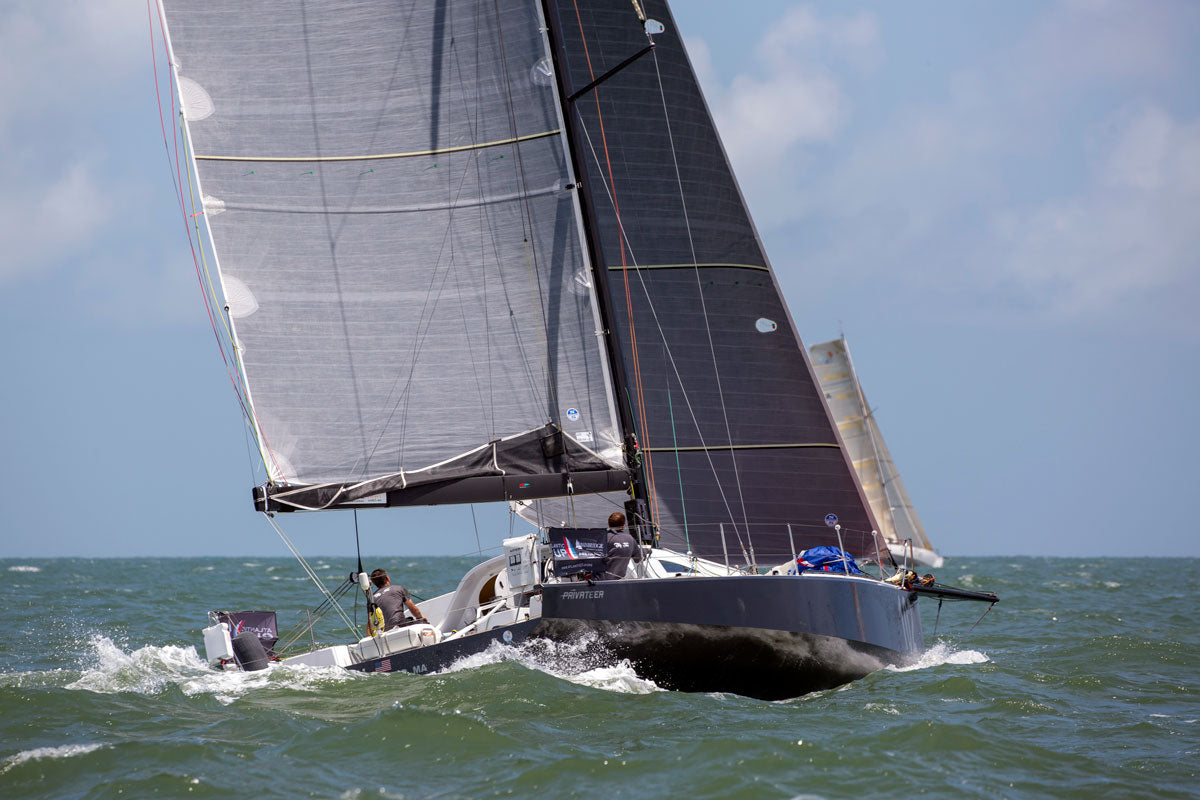
CLASS 40 PRIVATEER TAKES OVERALL BERMUDA 1-2 VICTORY
CLASS 40 PRIVATEER TAKES OVERALL BERMUDA ONE-TWO VICTORY
Owner credits North Sails for great sail design and durability
Photo: Billy Black
One week after finishing the second leg of the Bermuda 1-2, Jonathan Green, owner of the Class 40 Privateer, is still grinning. The unique race takes a fleet of singlehanded sailors across the Gulf Stream to Bermuda, 635 miles away. A week later, the boats race back to Newport doublehanded. Elapsed times for the two legs are combined to find an overall winner.
Racing was tight among the Class 40s, and on Leg 1, Privateer was only able to manage a fourth place finish. “First, I had some equipment failures that hindered my competitiveness in less than 15 knots,” Jonathan admits. “Second, I had some strategy missteps that ate away at my initial lead and allowed my competitors to walk on by.”
For leg 2, Jonathan was joined by co-skipper Jeff MacFarlane. “Jeff always amazes me with his attitude, drive, and determination—a true competitor. We did some racing together on Privateer last summer so were well familiar with each others’ sailing style, and knew we had a good shot at the title.”
At the restart off Bermuda on June 20, Privateer hit the line first and quickly gained 15 miles on the other Class 40s. Jonathan gives a lot of credit to their Solent sail. “Some of the conditions far exceeded the design specs, but it held together beautifully and allowed us to extend a big lead on the competition over the first 50 hours of the second leg. Most of our competitors were probably sailing their J3. It was a risk, because if the Solent blew up, we’d be far less competitive later in the race, but it persevered and put us in a fantastic position over the fleet.”
After finishing on 23 June at 1507, Privateer more than made up the time deficit from Leg 1 to take the overall win.
Conditions for leg 2 included thunderstorms and 35 knots from the northeast. Asked if there were any scary moments, Jonathan says, “We were definitely on the edge of our seats reaching in wind gusting over 35 knots, with big walls of water thrown up against the Solent. If we were sailing conservatively, we’d have dropped it at 25 knots, but with the monumental gains we were making, it was too tempting to press on and hope North built it strong. Sure enough, the sail held together and allowed us to post enormous gains.”
Working with the North Sails team on sail design, testing, and refinement has allowed Privateer to become more and more competitive over time, Jonathan concludes. “With North’s help, I think we can continue to climb the ladder among the Class 40 fleet. Next year’s Atlantic Cup will be a true test of our program, as we set out to score wins against US and European programs with very experienced teams. Tune in June 10, 2020 for some exciting Class 40 racing!”
READ MORE
READ MORE

NOT YOUR AVERAGE START LINE
NOT YOUR AVERAGE STARTING LINE
Wednesday Night Series at Mimico Cruising Club Reflects Dedication and Commitment to Weeknight Racing
Every Wednesday boats from Mimico Cruising Club gather to race on the lake. Boats big and small get together for friendly competition, week after week, and the hype is stronger than ever. Over 20 boats compete in both Spring and Summer series racing, and take advantage of the bragging rights.
What makes MCC race nights different from other clubs on the lake is the size of their starting line and consistency in participation each week. In addition to their own boats, MCC has partnered with neighbor club Etobicoke Yacht Club to allow sailors to co-mingle for racing during the week – at no extra cost. Members from EYC can race at MCC on Wednesdays and MCC members can race at EYC on Thursdays, providing two great opportunities for the clubs to race with eachother frequently. The reciprocal racing rights not only foster the local sailing/racing community but also enable sailors to hone their skills and get out on the water more; which most sailors on the Great Lakes want since the season is so short compared to other areas that can race all year round.
Not only do boats big and small come out for racing at MCC but also sailors from all ages show in numbers. A great number of youth sailors and young adults are crew on members boats – a fantastic occurrence that we love at North Sails. Ways for clubs to help youth sailors grow and transition from junior sail to keelboat racing/sailing is amazing; a feat that a lot of other clubs, and the sport in general, are struggling with.
READ MORE
READ MORE
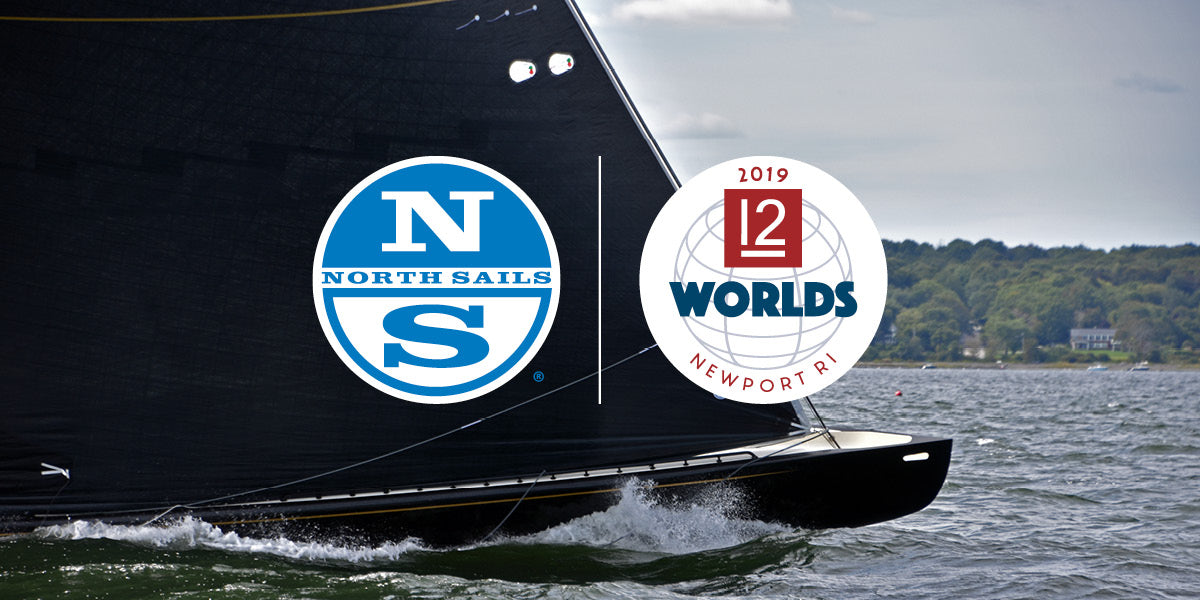
NORTH SAILS IS OFFICIAL SAILMAKER OF THE 12 METRE WORLD CHAMPIONSHIP
NORTH SAILS IS OFFICIAL SAILMAKER OF THE 12 METRE WORLD CHAMPIONSHIP
The World’s Leading Sailmaker Joins The Celebration Of This Iconic Class
© SallyAnne Santos | WindlassCreative.com
Lowell North founded North Sails in 1957, one year before the America’s Cup ushered in 30 years of storied racing in the 12 Metre Class, creating some of the most memorable moments in sailing history. 60 years of innovation and development kept North Sails at the heart of America’s Cup victories, and now the world’s leading sailmaker will be on hand to provide world-class service and support when the 12 Metre World Championship is raced off Newport, R.I. from July 8-13th.
The World Championship will be the largest-ever gathering of 12 Metre yachts in the United States, featuring 21 boats from six countries. North Sails will be offering its signature Regatta Repair service to ensure the sails on every boat are optimized for the expected tight racing in this fiercely competitive fleet.
The 12 Metre has always been at the forefront of sailing development. Today the class combines the sleek lines of historic hulls with cutting edge technology above deck, offering both nostalgia and world-class racing. North Sails has worked closely with many owners and the class association itself, to understand more about the needs and challenges faced in developing modern sails for these boats. Both North inventories and North experts will be onboard many of the boats to help the teams meet their goal of being the next World Champion.
“We have a shared history of success and pioneering development, and we are privileged to be able to be a part of this event and help keep these boats performing to the highest level.” -Ken Read
The President of North Sails will be racing on Challenge XII in the Modern Division. “The 12 Metre class is unique in every way,” Ken Read continued. “There is nothing else like it in the world, and it’s a testament to the owners, crews, class association, and suppliers that the fleet remains so competitive and we are able to get 21 of the 12 Metres to Newport for this amazing event. What better place to be watching these boats go head-to-head than Newport, the site of so many memorable America’s Cup battles. North Sails prides itself on finding the best sail solutions for any client, from the smallest to the biggest, and these amazing boats have to rate as one of the most iconic.”
Peter Gerard, Vice President of the International Twelve Metre Association’s (ITMA) America’s Fleet added: “Without the best partners to help us deliver optimum performance, we would not be able to put on such an ambitious event as this. Whilst the boats are historic and look beautiful, the loads that they carry and the equipment that they use is cutting edge. and for this, we need the world’s leading suppliers to help keep everyone race-ready. We are delighted that North Sails has partnered with us and are greatly looking forward to working with them.”
READ MORE
READ MORE
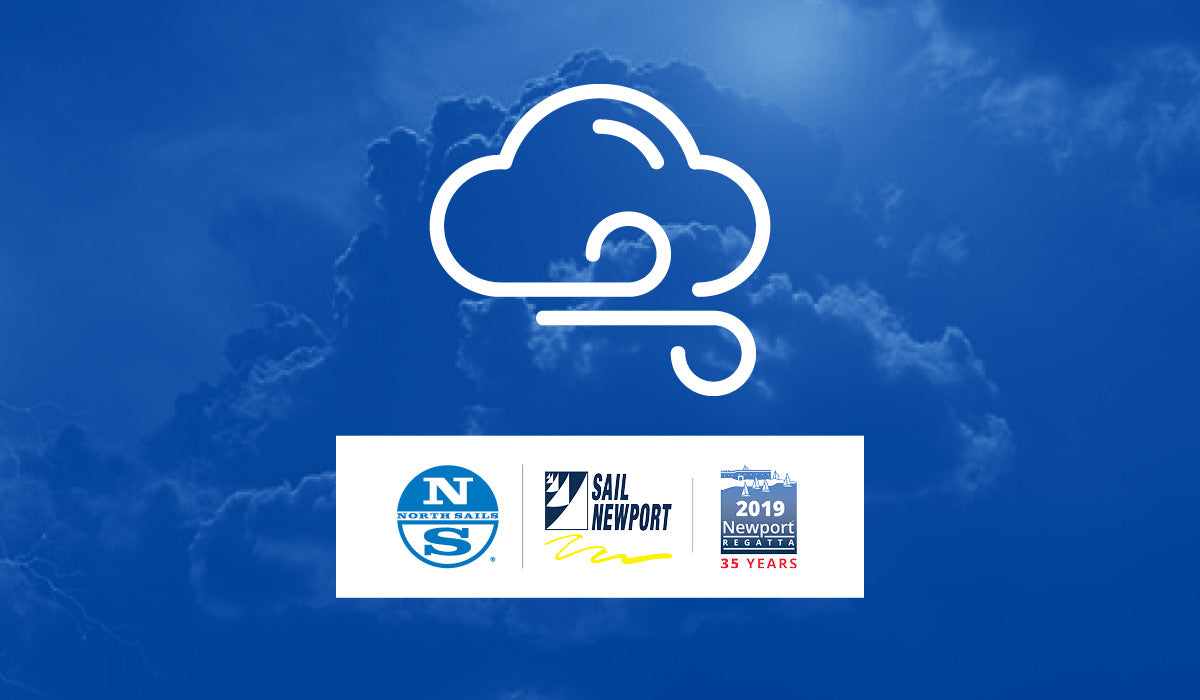
GET THE WEATHER FOR THE 2019 NEWPORT REGATTA
BE PREPARED
Get Your Complimentary Forecasts Provided By Sailing Weather Service
READ MORE
READ MORE
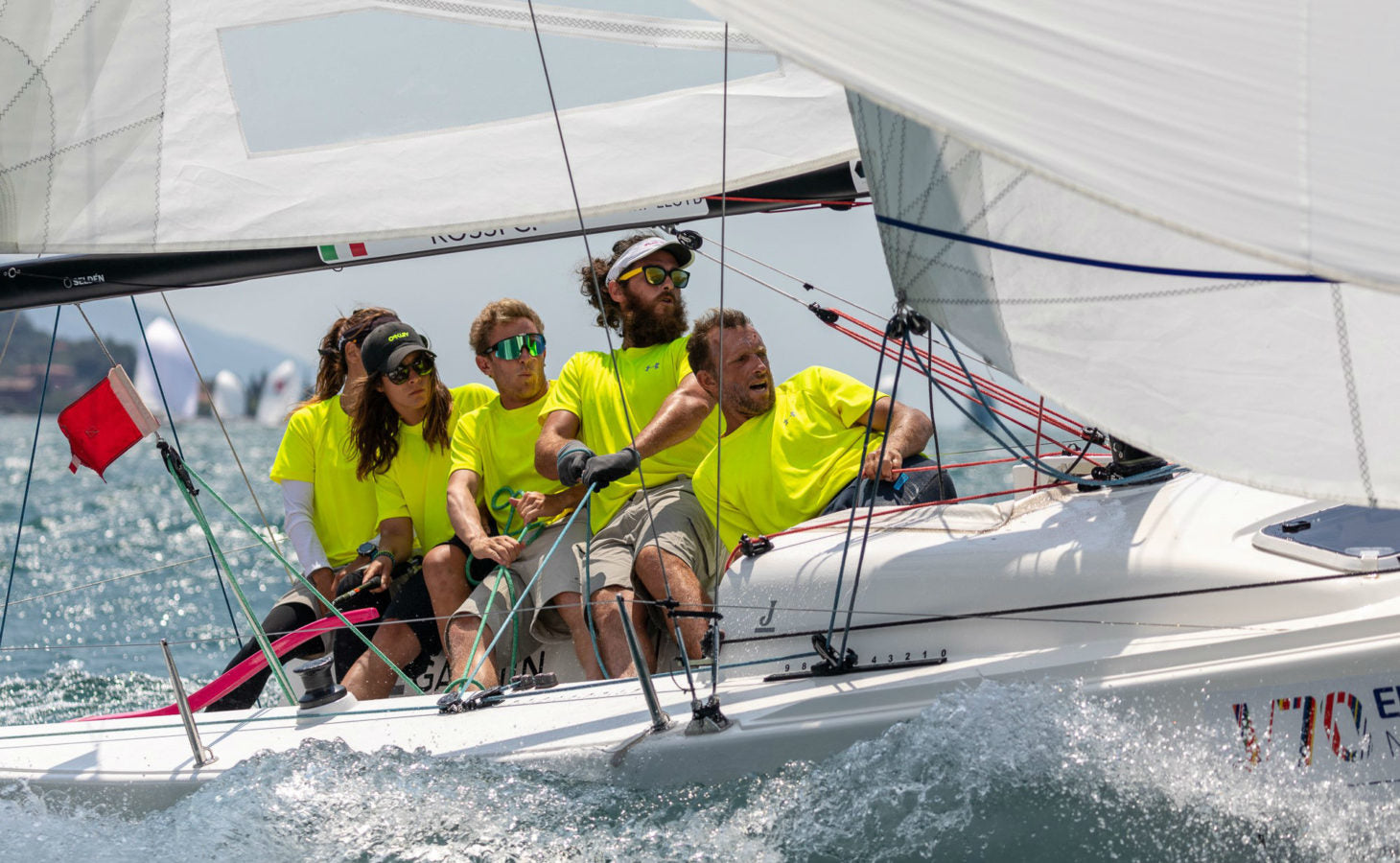
ITALIAN TEAM WINS J/70 EUROPEAN TITLE
ITALIAN TEAM WINS J/70 EUROPEAN TITLE
We Talk To Giulio Desiderato, Main Trimmer And North Class Expert Onboard
J/70 European Champions 2019, Petite Terrible 📸 Zerogradinord
After a tough battle at the J/70 European Championships in Malcesine, Lake Garda, the North powered Petite Terrible won the European title. With Italian Class Expert Giulio Desiderato sailing onboard as Main Trimmer, he gives us the low-down on how the team came to be at the top of the podium in the largest and arguably most competitive One Design class.
Amazingly, this victory is not unusual for the Rossi family. Helm of Petite Terrible, Claudia Rossi, won the Europeans in both Kiel and Hamble after Claudia’s father won the Europeans with his team in Vigo last year, all with North Sails inventories.
Claudia Rossi gives us her account of the regatta: “I have been sailing in J/70 class for four years and after trying various sails, I am happiest with North Sails. The boat is fast and easy to drive which is also helped by having Giulio Desiderato onboard. He knows the sails very well and can therefore ensure we trim them in the right way. Of course, having a fast boat makes things easier, but I think the key to our success was our team. We were always united, we believed in it until the end and when we needed to push, we all gave 110% resulting in an exciting and well deserved victory, an incredible experience!”
“I have been sailing in J/70 class for four years and after trying various sails, I am happiest with North Sails. The boat is fast and easy to drive which is also helped by having Giulio Desiderato onboard. He knows the sails very well and can therefore ensure we trim them in the right way.”
The regatta brought a fantastic mix of wind strengths, with some very light days proving testing for the healthy fleet of 124 boats. We asked Giulio how the sails handled in these tricky race conditions: “The regatta has been difficult and intense with some conditions as light as 5-6 knots. However, luckily the Championship finished with a nice 15-17 knot wind blowing from the south. We found the right way to tune the mast and trim our sails properly and as a result, have been leading the fleet most of the time, no matter what the conditions. This consistency is the key to our success.”
The team are very familiar with Malcesine and Lake Garda, but the Europeans brought unusual conditions. For most of the regatta, although all races were sailed, it was too hot for the well-known Ora wind to develop.
“The XCS-2 Mainsail we raced with had been used at two previous major events which says it all! We are very impressed with the sail quality and shape. We also used the North Sails J-2 High Clew Jib and AP-1 Spinnaker.”
Petite Terrible 📸 Zerogradinord
Petite Terrible started racing together in 2015. Giulio first became involved as a coach, helping to prepare the crew for the World Championship in San Francisco. This season, they chose to work together have him as part of the team as Main Trimmer.
“The last race is one that I will never forget,” says Giulio. “All the races before this, we fought with the other boats in the top of the fleet to win the title. In the final race, we decided to sail our own race by not making it too complicated and just pushing hard until the end. We had a great start close to the pin end, sailed fast passing various opponents and when we got close to rocks we tacked onto port crossing in front of the whole fleet!”
“The last race is one that I will never forget. We decided to sail our own race by not making it too complicated and just pushing hard until the end. We had a great start close to the pin end, sailed fast passing various opponents and when we got close to rocks we tacked onto port crossing in front of the whole fleet!”
We wish the team good luck at their next event in August, the World Championships in Torquay, UK.
Talk to Class Expert, Giulio Desiderato, and browse the J/70 Shop Inventory.
“I would like to thank my team – Claudia, Michele and Matteo e Ross. Also, a huge thank you to our team mates onboard Enfant Terrible and all the people that support us during the season and the fantastic week. Big thanks to Alberto Rossi that made it possible. Finally, a big hug to Simone Spangaro, the previous Petite Terrible Main Trimmer. He is the team’s number one supporter and never stops helping us.”
Congratulations to North clients who won all three podium positions 📸 Zerogradinord
📸 Zerogradinord
Arttube 📸 Zerogradinord
Petite Terrible 📸 Zerogradinord
📸 Zerogradinord
READ MORE
READ MORE
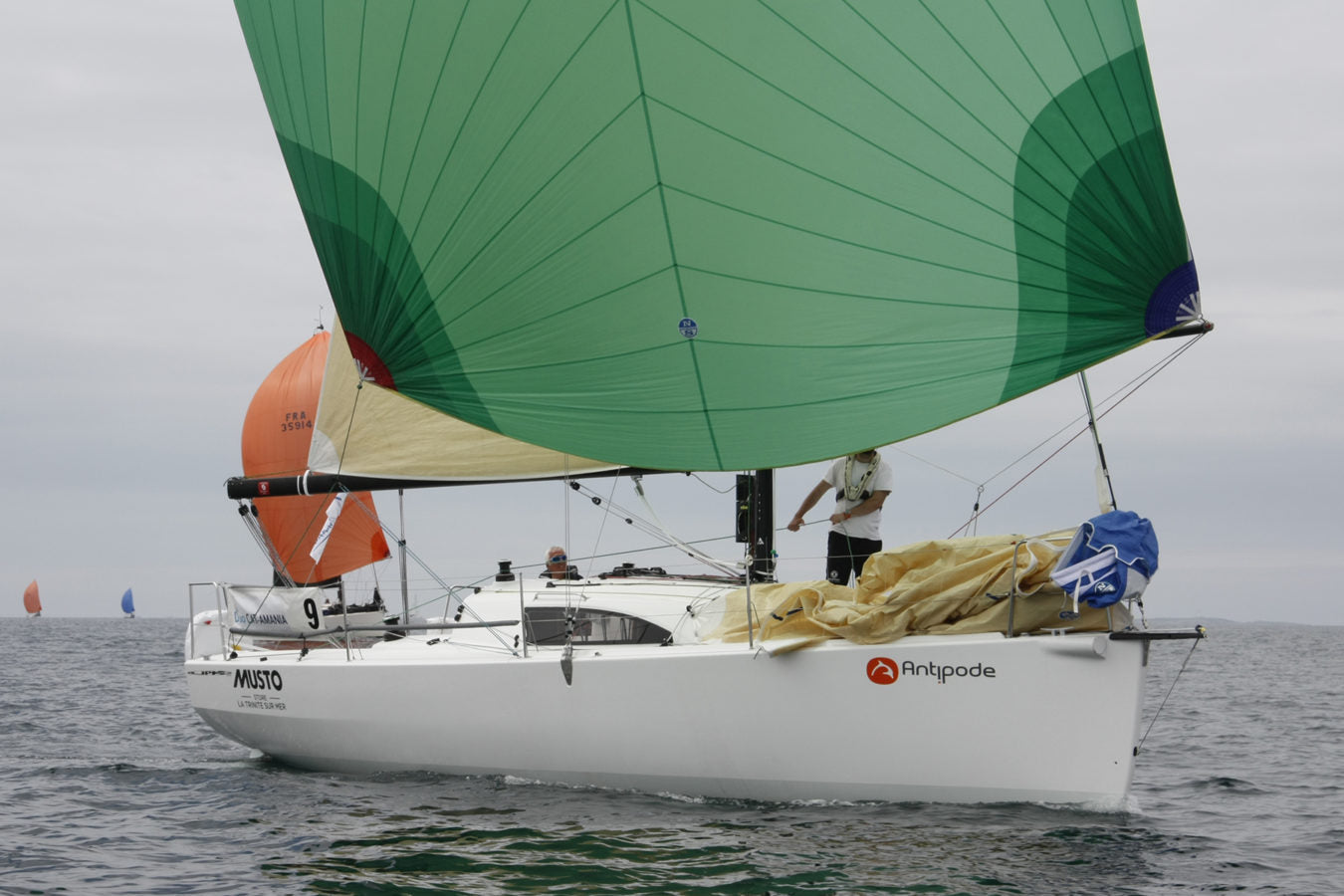
UNE DUO CAT-AMANIA SPORTIVE ET CONVIVIALE
Une Duo Cat-Amania sportive et conviviale
20 équipages aux couleurs de North Sails, partenaire de l’événement
📸 Sylvain Huet
La Duo Cat-Amania s’est clôturée vendredi 21 juin après six jours de régates en double le long des côtes bretonnes (une boucle de Crouesty à Crouesty en passant par Quiberon, Lorient, Locmiquélic, Concarneau et la Trinité-sur-mer). 50 équipages dont près de 20 bateaux North Sails ont participé à cette compétition amateur de haut niveau qui allie sport, professionnalisme et convivialité. Et pour la quatrième année consécutive, North Sails sponsorise l’événement à travers la distribution de nombreux lots.
« Cette grande classique est un moment fort du calendrier nautique, commente Laurent Tilleau, commercial IRC à North Sails et régatier par passion. La plupart des navigants sont des amateurs aguerris et exigeants, toujours à la quête de conseils, et avec Thibaut Agaugue, responsable service voile à North Sails, nous avons assisté les coureurs North Sails après chaque régate le soir venu pour toute question technique concernant les voiles. » Navigants le jour et experts voile le soir, les deux hommes faisaient partie des 100 marins présents sur l’épreuve.
Antony Durand, Président de l’amicale des coureurs, remercie North Sails pour sa contribution à « la belle course qui est la Duo CAT-AMANIA. Course qui associe technicité, compétition et convivialité ! Une semaine de joie et de plaisir qui reste dans les souvenirs de l'année. »
READ MORE
READ MORE
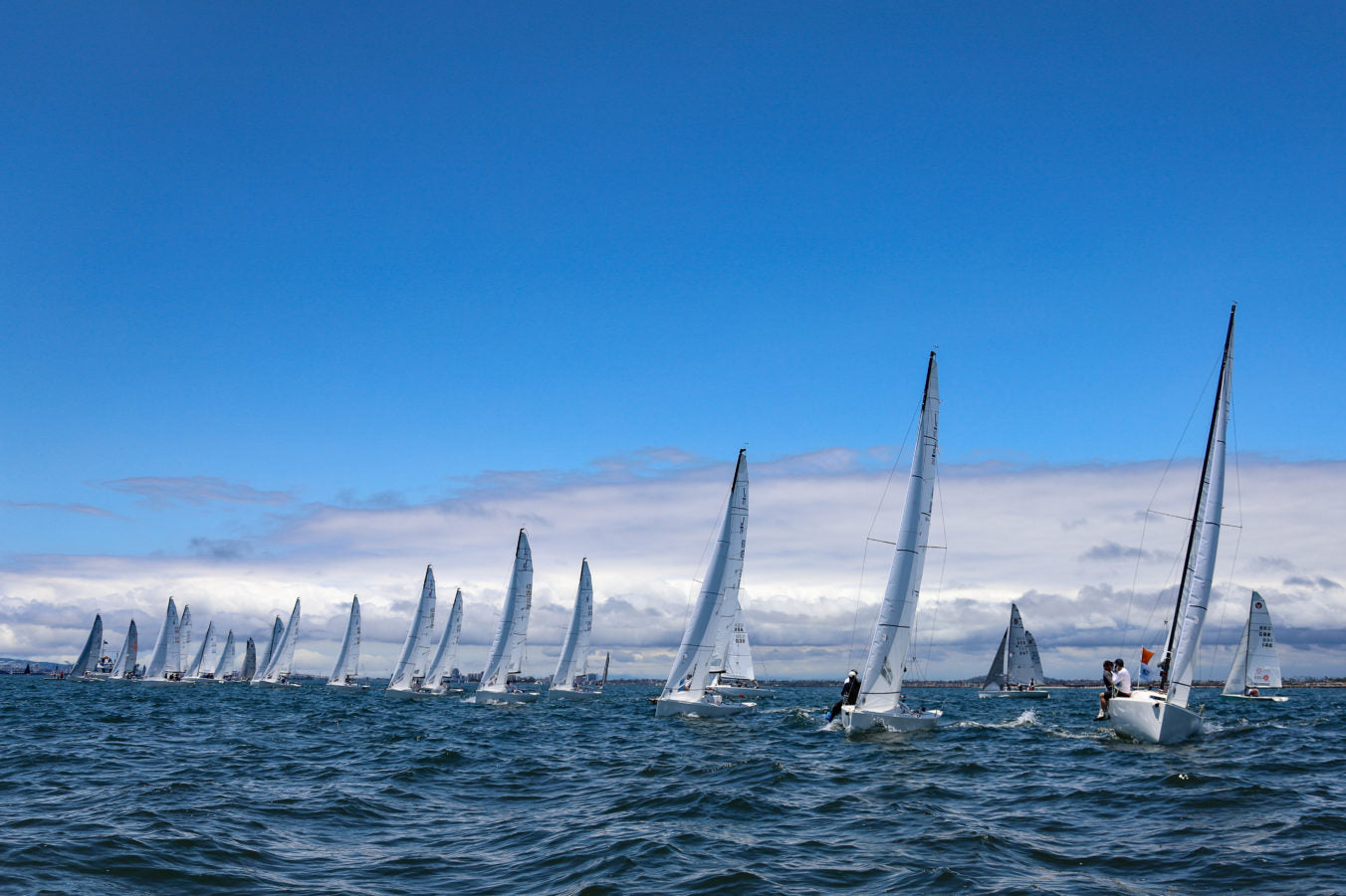
J/70 UPWIND TRIM TIPS
J/70 UPWIND TRIM TIPS
Finding Your Groove In Building Pressure
📸 Bronny Daniels / Joysailing.com
North Sails expert Zeke Horowitz shares important J/70 upwind sail trim takeaways from his recent experience in California, USA at Long Beach Race Week. Zeke sailed with Jeff Janov on Minor Threat, and they tied for first place with just 18 points in the seven race regatta.
Less than 10 Knots
When the breeze is under 10 knots and you are looking for power, be sure to get up to speed by “pressing” on the jib before trying to grab any height. In these underpowered conditions, height comes from achieving flow over the keel, NOT from simply trying to point the boat higher. By pressing on the jib, you will power up the sail plan and allow your crew the chance to pressurize the weather rail. This helps achieve max flow on the keel, and your boat will start lifting.
Your leeward jib tell tale should be “nervous” most of the time and you should not sail any higher than tell tales straight back. It’s imperative to get your rig loose enough to help the headstay sag. You can always snug up the headstay by tightening the backstay if you get a little puff. Two turns off the cap shrouds and two turns off the lowers from base is probably about as loose as you should need to go (4-7 kts)*.
Trim the main so you have a nice open leech (tell tales streaming) until you are able to get weight on the rail. Once the weight is up, you can trim the main hard enough to begin seeing stall on the leech tell tales.
*The exact number of turns depends on your rig.
📸 Bronny Daniels / Joysailing.com
Above 15 Knots
When sailing in over 15 knots and chop, be decisive about your “modes” upwind. Take note of the wave angle on each tack and decide which mode you want to try on each board. For example, if one tack has the wave direction more on the bow, you may want to try a “bow down mode” to keep the speed from crashing when you hit a hard set of waves.
Bow-Down Mode
In “bow-down” mode, try centering the traveler car, pulling the backstay hard enough to just see inversion wrinkles in the middle of the main, and pulling the vang hard enough to see some inversion wrinkles down low. Play the mainsheet a lot to maintain a steady heel angle, with the jib tell tales straight back or the inside one just lifting. The name of the game here is speed, so set a target speed number and don’t let the bow come up until you’ve hit your target.
📸 Bronny Daniels / Joysailing.com
Higher Mode With Flat Boat
If the waves are more side-to, you can try a higher mode with a flatter boat. Bring the traveler car 1/3 – 1/2 of the way up. You’ll have the backstay tight, but not so tight that you see any inversion, and the vang will also be snug, but not so tight that you get low main inversion. The mainsheet will be eased a little more overall to help keep the boat flat. In this mode, you keep some power in the main with the higher traveler and fuller main, but you’ve got more twist in the leech which spills some power to keep you flatter.
It’s imperative to get the boat up to speed before trying to point, but with this mode, you can achieve more keel flow by keeping the boat flatter. At times, the driver may feel a touch of lee helm that they must push against, until the main trimmer ‘catches up’ by bringing the mainsheet in slightly. This mode is not as ‘forgiving’ but it can be lethal when the boat is up to speed in open water.
*With this second mode, you might need to try a little less inhauler to help keep the headstay straighter, since your backstay and main sheet are not trimmed quite as hard.
Learn more about North J/70 products
📸 Bronny Daniels / Joysailing.com
READ MORE
READ MORE
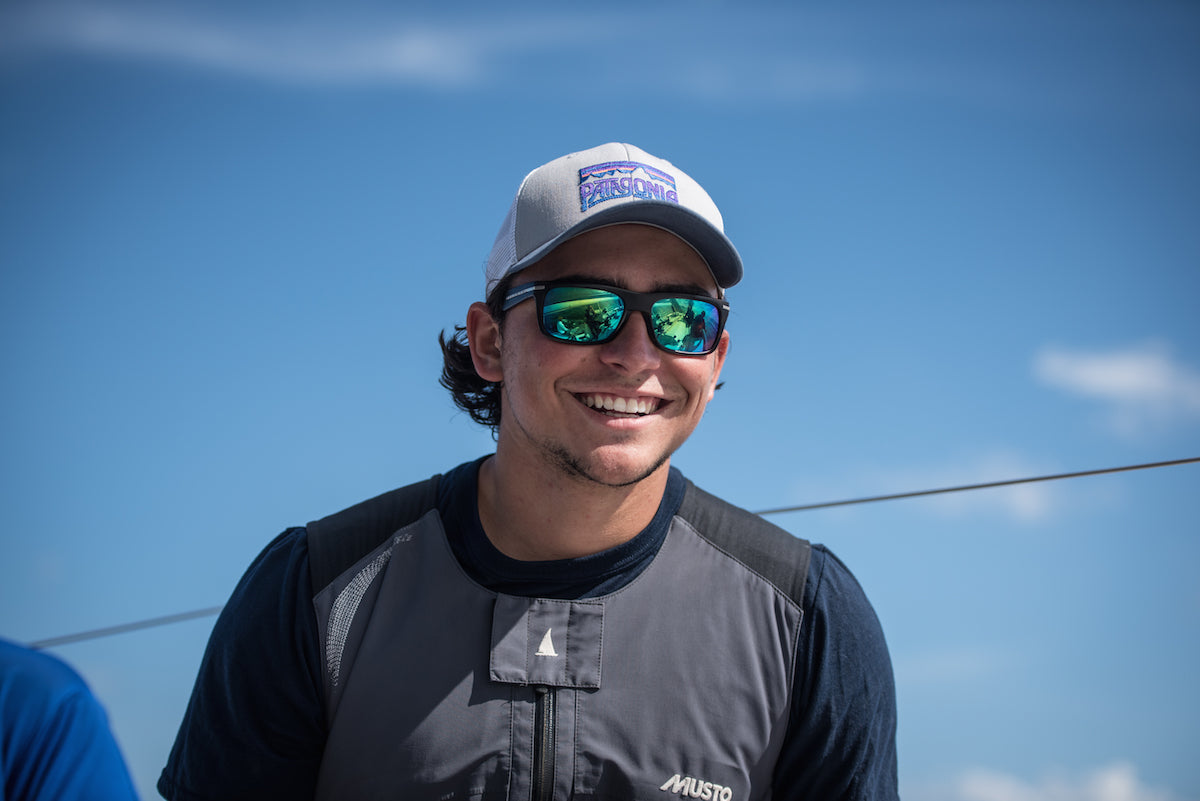
WHO WE ARE: CHRISTIAN KOULES
WHO WE ARE: CHRISTIAN KOULES
Get To Know Your Local Service Team
Tell us about yourself.
I am a rising senior at the University of South Florida. I am an active member of the schools sailing team, which consistently ranks in the top 20 programs in the country. I prefer racing on one design sport boats like the J70 or RS21, but I primarily race 420’s and FJ’s during the school year. I also actively race PHRF and other long distance racing. I recently raced from Saint Petersburg, Florida to Havana, Cuba on a J112e. This summer I am looking forward to the Chicago Mackinac race, it will be my fifth Mac race.
How long have you been sailing and/or involved in the marine world?
A long time, as far back as I can remember, but I really started actively racing when I was seven or eight.
What are you most looking forward to about working at North Sails?
Expanding my knowledge about sail shaping, design, costumer service and developing customer relations.
What’s your favourite part about Summer?
Sailing.
What’s your earliest memory of being on the water?
Driving my fathers thirteen foot Whaler Super Sport. I was maybe three years old.
Get to know more of the Chicago team from North Sails.
READ MORE
READ MORE
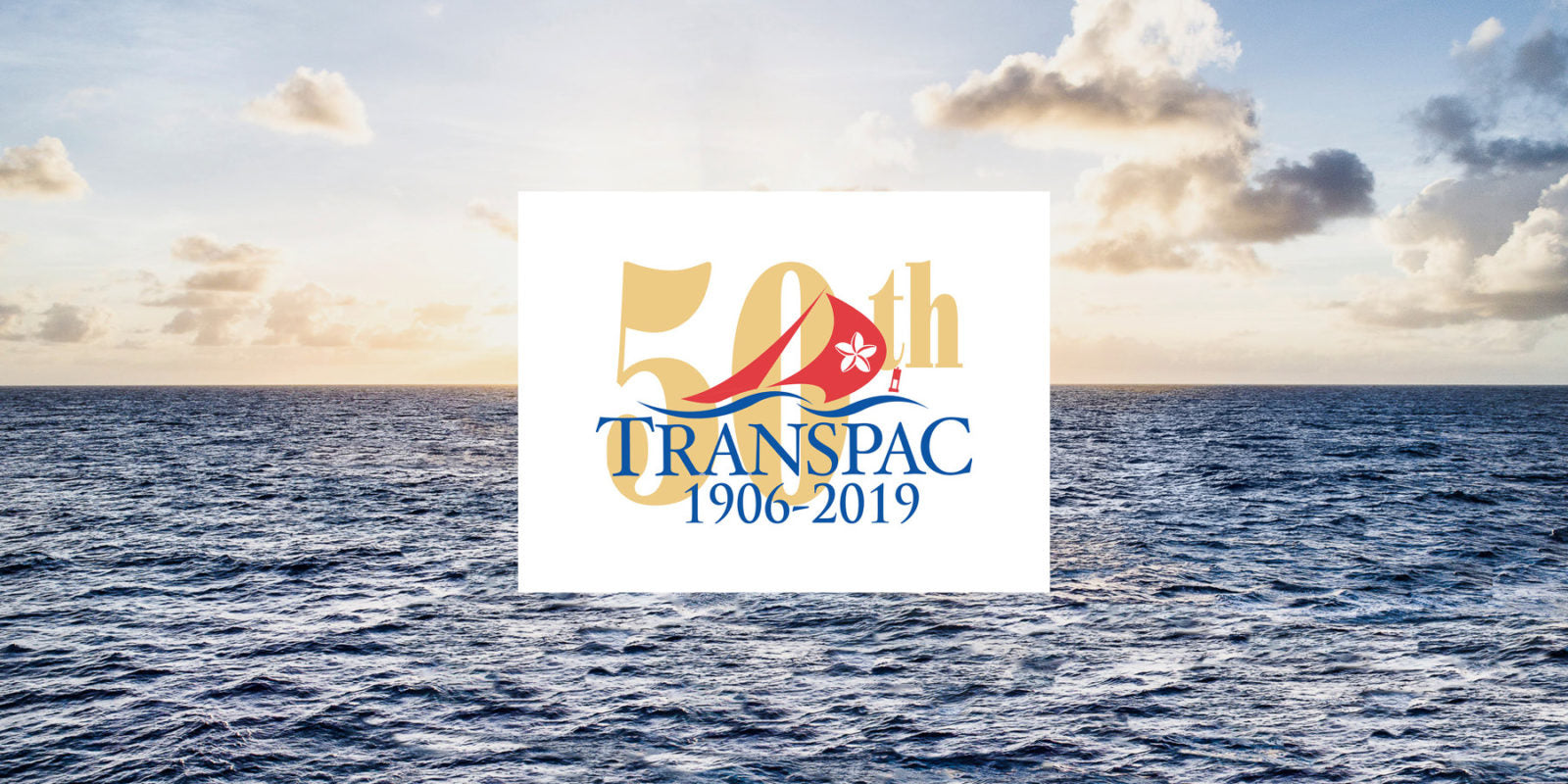
50TH TRANSPAC: THREE NORTH SAILS VETERANS LOOK BACK
50TH TRANSPAC: THREE NORTH SAILS VETERANS LOOK BACK
Iconic Ocean Race From LA To Honolulu Is A Rich Part Of North History
The very first Transpac was run in 1906, had three entries, and took the winner twelve days to complete. In 2017, North Sails helped several boats set new course records, including the supermaxi Comanche, skippered by North Sails President Ken Read. For 2019’s 50th edition, almost a hundred boats are entered, and 3Di will be proving its offshore abilities in several divisions.
North Sails has been helping Transpac racers achieve their goals since the company’s early years. Past president Gary Weisman sailed his first race in 1967 and is now tied for the most races sailed with Roy Disney, Jr.; both men will sail the 2019 edition on Disney’s Pyewacket. Gary confirms the record, though he’s less sure of the exact number. “I’m actually vague about some of the years, because I started really young. But Roy and I reckon that after this year, we’ll be tied at 23, and I don’t think anybody else has done that many.”
Robbie Haines, another Pyewacket team member who first started working for North Sails in 1973, scored his first ride to Hawaii at age 25. “That’s a little late in life to have your first Transpac,” he says. “The lucky ones like Gary start in their teens.” Robbie did have a great excuse for such a delay, though; “I was involved in a lot of Olympic sailing,” which eventually rewarded him with a gold medal. 2019 will be “only” his 18th or 19th Transpac.
Fuzz Foster from North Sails Hawaii has completed three Transpacs. In 2003, he was part of the team that won overall. This year, he’ll be greeting sailors after they finish, and definitely joining the arrival party because it’s part of what makes this race so special—along with the last 100 miles of racing, “which makes you forget the first 2300.”
What’s Changed
Boats
Gary sailed his first three Transpacs on a Cal 40, back when they were the best ride going. “They had a spade rudder so they were steerable down waves, when most of the boats still had the rudder attached to the back end of the keel and they’d kind of rock and roll their way to Hawaii. Really scary,” he adds. “In the last third of the race you can have 20 to 25 knots. Then a squall hits, and you get another 10 knots of wind with a full-sized kite up. You didn’t want to round down with the pole way back, because you’d snap the pole off the mast, or you’d break the pole. Or if everything else was strong enough, you’d break the mast. I remember in ’77, the year Merlin won, seven boats lost their mast in one night. It was pretty wild.”
Communications and Navigation
Before GPS, navigation was by sextant and every boat was required to call in their position for the daily roll call. “There’d be an escort vessel that was handling the communications on Single Side Band radio,” Gary remembers, “and it was all broken and hard to understand. It would take an hour and a half with fifty or sixty boats. And there were a lot of games being played with that position reporting, too,” he continues, chuckling. “With celestial navigation, a smart navigator might say he had a bad sun sight to hide his position, if he thought he was in a spot in the ocean that was particularly good. And nobody could prove otherwise, unless they happen to run into you or visually spot you way out of position. Everybody did a little bit of that…fudging, you might call it.”
Sail Evolution
Sails have come a long way since bloopers and symmetrical spinnakers dominated the race. “The big difference is the material,” Robbie says. “Back then it was all Dacron.” As soon as laminates like 3DL, and later composite 3Di sails, were introduced, they dominated Transpac sail inventories. “All the sails are quite a bit lighter now than 30-40 years ago. And the sail shapes are more refined and better than they were back then.”
Gary points out the dramatic difference in downwind inventories. “In ’69, we put up a 1.5oz spinnaker at the start and took it down after finishing, and we won the race overall and set an all-time Cal 40 elapsed time record! Now, on a 70 footer, most of our spinnakers are half that weight. The boats go so much faster, they just don’t put the load on the sails that the old boats did. And the fast boats don’t even have spinnakers, they just have big genoas basically.”
What hasn’t changed
Best Ocean Race
“It’s without doubt the best ocean race I’ve ever been on,” Robbie says. “You’re on the wind at the start, and you round Catalina, which is the only mark of the course, and ease sheets a little bit. Your next mark is 2300 miles away. And it just gets warmer, and the water changes color, and the wind keeps going aft until you’re running the edge of high pressure.”
Gary adds that it’s a strategic challenge to sail the course well. “The simplistic view is that you sail over to the right side of the race course, jibe when you’re eight or nine hundred miles away from Hawaii, and lay the island. But you rarely do that, for fear of much lighter wind too close to the high pressure.”
In 2003, Fuzz’s team on Bill Turpin’s Alta Vita took the overall trophy by diving south early on, a “navigational gamble that took four days to pay off.” It’s one of his best Transpac memories, though he adds that sailing with good friends is always fun. “And I got to sail with my oldest son on the 2009 and 2017 Race. Every parent should get a chance to sail with their kids; it’s priceless.”
Gary confirms that winning usually requires risk. “People get all nervous about getting anywhere near the layline, but if a guy bangs the corner hard, and he does it exactly right, it’s a huge advantage. I remember one year, we ended up south of the Big Island in ten knots more wind, which is just incredible. We had to sail north to get to the finish line! And honestly, if we’d gone further south, we would have won.” Instead Pyewacket finished second to the classic yacht Dorade, another North Sails customer.
The Finish
Regardless of results, all three men agree that there’s something quite special about Diamond Head. “Sailing the Molokai Channel in normal tradewinds is hard to beat,” Fuzz says. Robbie adds, “You finish in the most beautiful place in the world, at a red buoy that’s been there forever.”
Gary calls the finish “really romantic. These islands loom up out of the ocean, and when you get close, you can smell the plumeria. And hopefully you’ve got somebody waiting for you on the dock. I defy anybody not to get a little emotional finishing that race.”
North Sails Service
Once the boats arrive in Honolulu, the North Sails Hawaii team is there to help. “People need to get sails repaired to deliver the boat home, so they do that,” Gary says. “Plus they receive delivery sails, and they ship home racing sails. North is there, helping people in the race with all their sail needs.” Fuzz adds that “Hawaii is the best place on the planet to sail—just ask anybody that ever sailed in a Kenwood Cup or Clipper Cup. I’m very lucky to call it home.”
As one of the larger yachts in this 50th edition, Pyewacket will be part of the last fleet to start on Saturday, July 13. As for results, Robbie says they certainly have the experience and equipment to do well. “We’ve got a very mature crew on Pyewacket, with 100 races between us, and great sails. But it’s a very difficult race to win overall.” Which is something else that hasn’t changed since the very first Transpac back in 1906.
Transpac 2017 record breaker Comanche arriving into the finish. 📸 Sharon Green / Ultimate Sailing
READ MORE
READ MORE
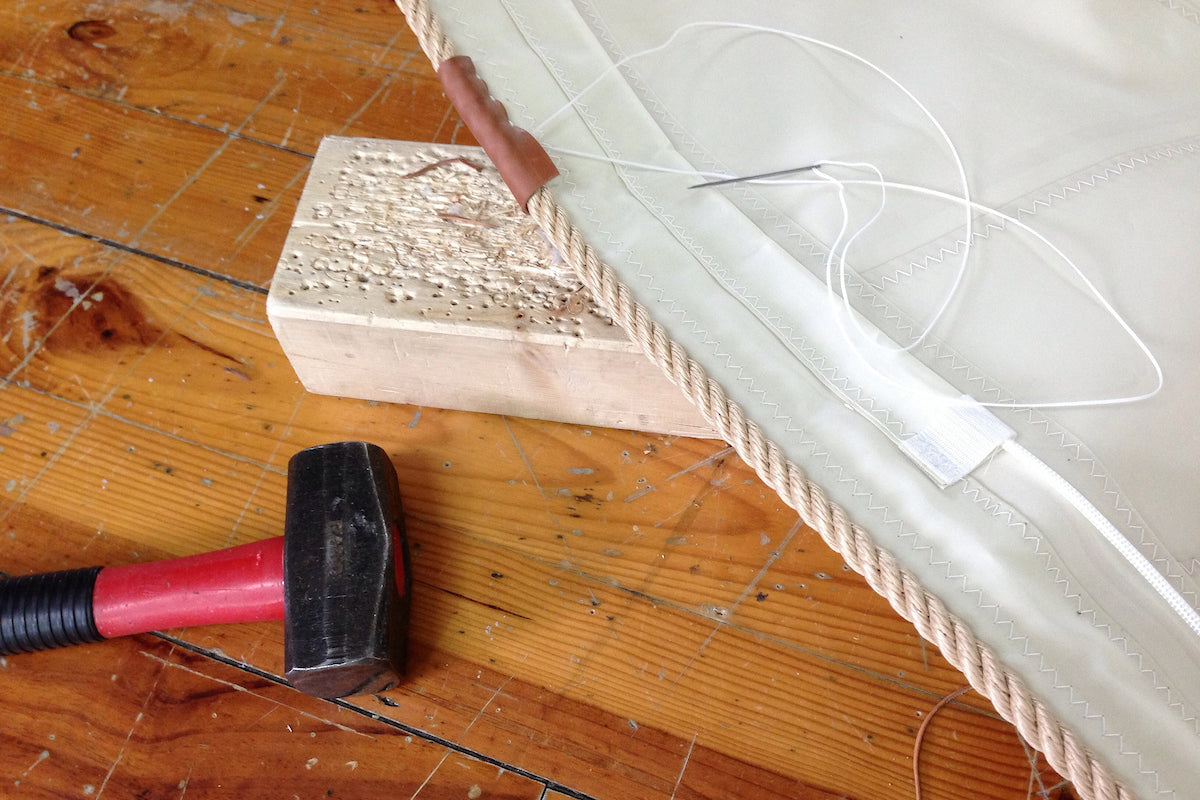
Consejo North Sails
CONSEJO NORTH SAILS
Aunque la evolución en diseño y tecnología es la base de nuestro trabajo, en North Sails no olvidamos los orígenes de la navegación.
Nuestros expertos en barcos clásicos trabajan para preservar la historia con el máximo respeto al diseño y los materiales originales, apoyándose en herramientas como el North Design Suite para crear modelos 3D de los barcos para los que fabricaremos las velas. Se trata de trabajos a medida y con alto componente artesanal realizados por personal especializado como el que trabaja en las velerías de Cuntis (Pontevedra) y Milford (Estados Unidos), que estudia, diseña y produce velas para barcos clásicos de todo el mundo utilizando materiales como el poliéster o el nylon.
READ MORE
READ MORE
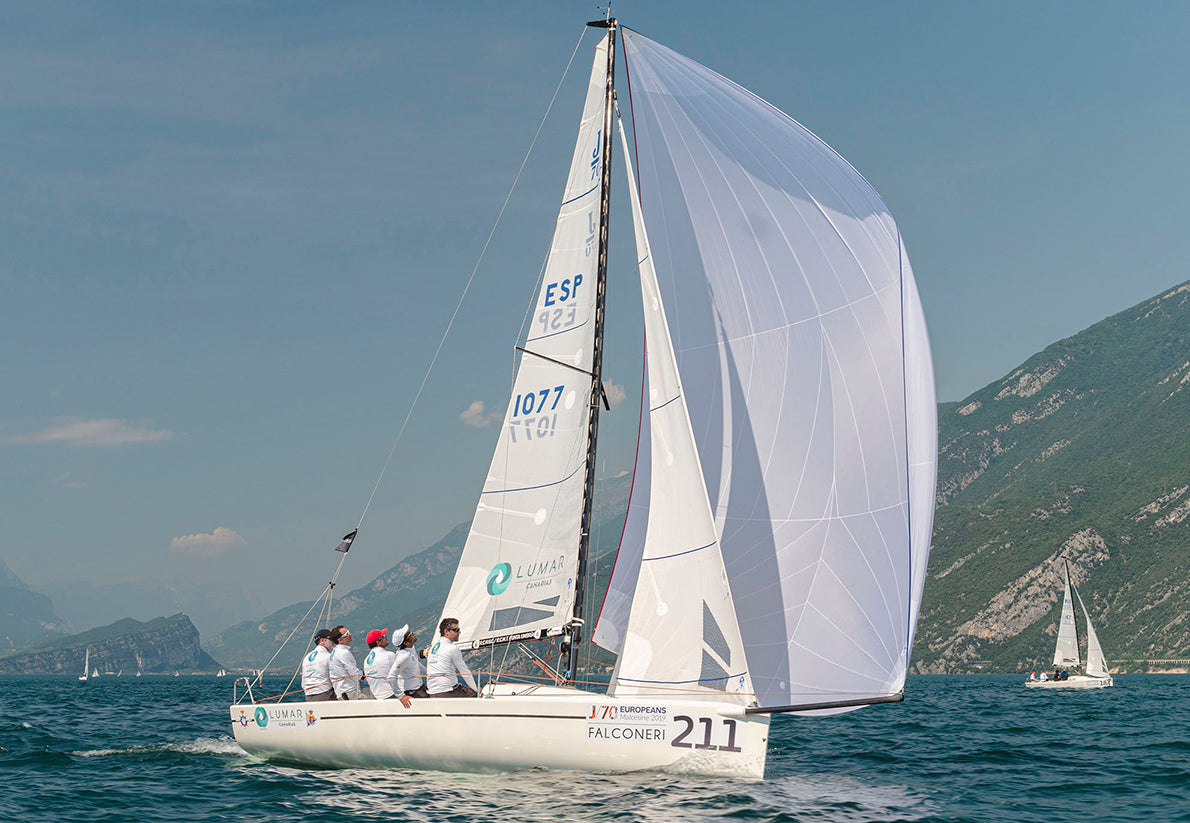
CAMPEONATA DE EUROPA DE J70
La localidad italiana de Malescine, en el lago de Garda, acoge el campeonato de Europa de clase J70 del 21 al 29 de junio con una impresionante parrilla formada por cerca de 130 equipos.
READ MORE
READ MORE

EXCELENTES RESULTADOS EN EL TROFEO CONDE DE GODÓ
El 46º Trofeo de Vela Caixabank Conde de Godó finalizó con excelentes resultados para North Sails.
READ MORE
READ MORE
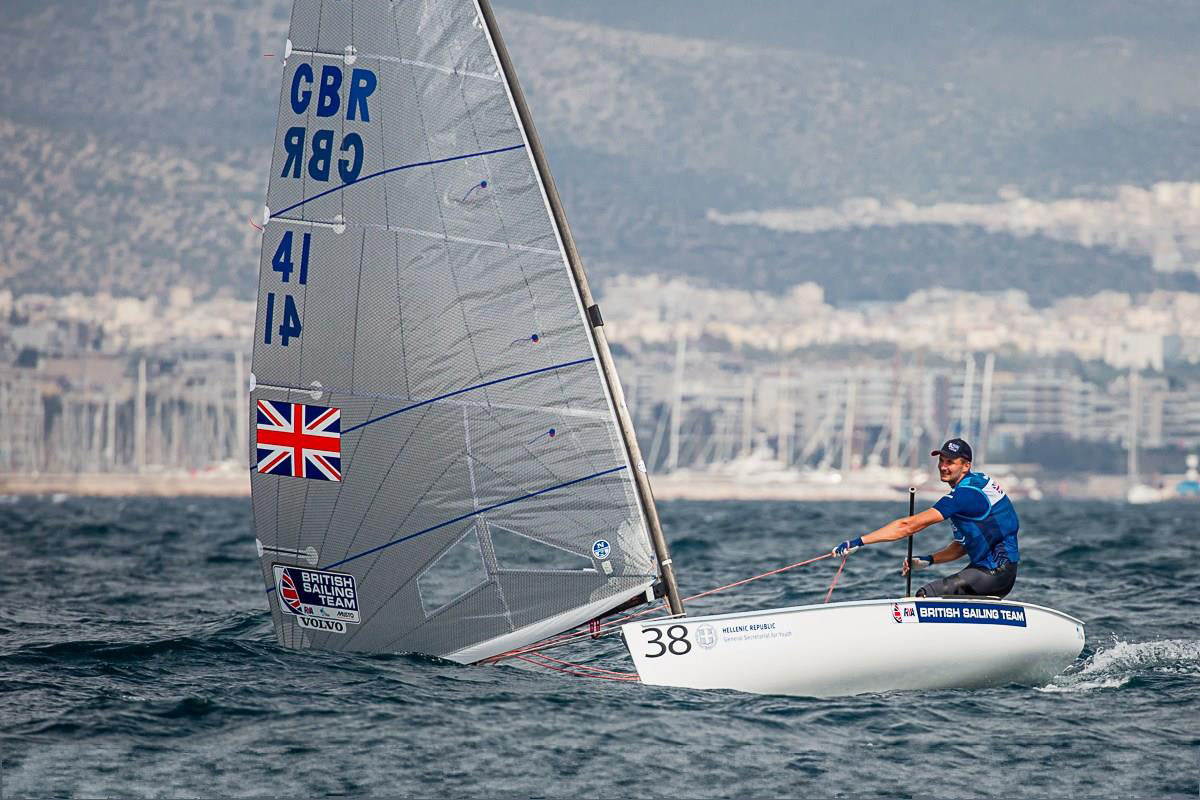
DOMINIO EN EL EUROPEO DE FINN
DOMINIO EN EL EUROPEO DE FINN
North Sails fue el claro dominador del campeonato de Europa de clase Finn, disputado en Atenas (Grecia) del 10 al 18 de mayo.
📸 Robert Deaves
Nueve de los diez primeros clasificados eligieron velas North Sails para disputar la corona continental, incluyendo al campeón absoluto, el británico Giles Scott. Desde North Sails España transmitimos nuestras felicitaciones a todos ellos y nuestro agradecimiento por confiar en North Sails.
READ MORE
READ MORE
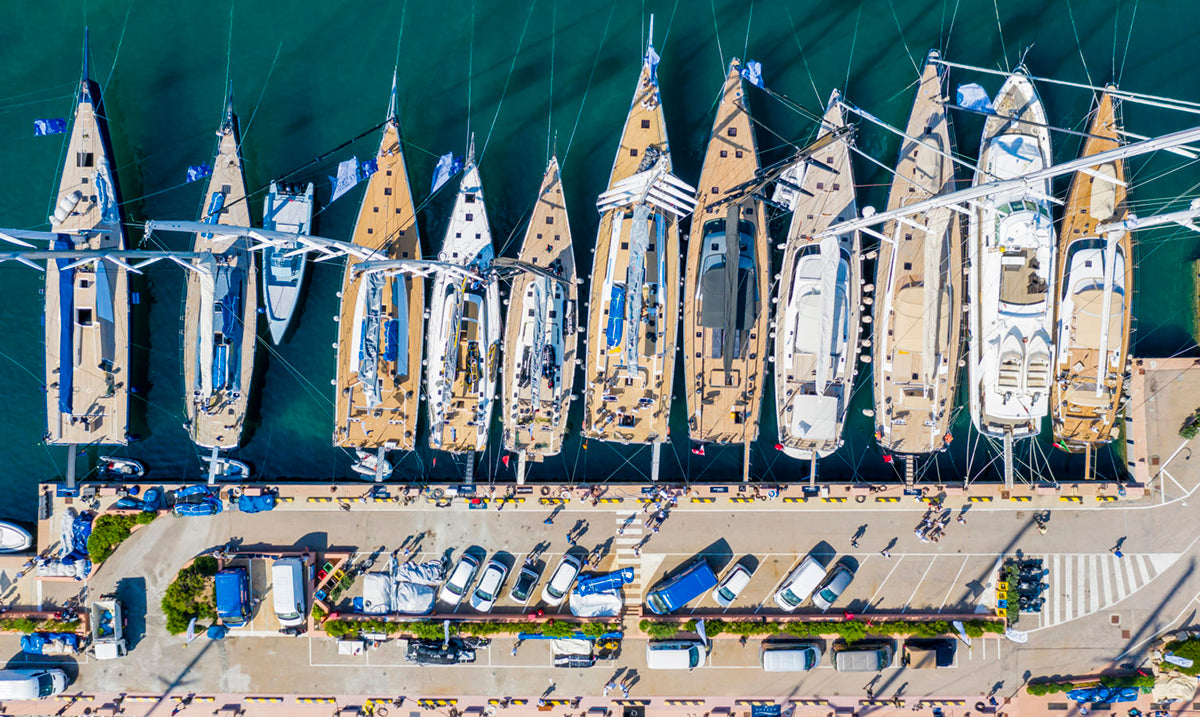
LORO PIANA SUPERYACHT REGATTA, TERRITORIO NORTH SAILS
LORO PIANA SUPERYACHT REGATTA, TERRITORIO NORTH SAILS
Clientes North Sails coparon las plazas de podio en las tres categorías de la Loro Piana Superyacht Regatta 2019, la prueba de superyates disputada en la localidad sarda de Porto Cervo entre el 3 y el 8 de junio.
📸 Carlo Borlenghi
Los ganadores fueron el Wallycento Magic Carpet Cubed en Performance Class, el Silencio en Cruising Class y el Grande Orazio en Southern Wind Shipyard Class. Un nuevo éxito para la gama North Sails especializada en grandes esloras.
Performance Class 📸 Carlo Borlenghi
Southern Wind Shipyard Class 📸 Carlo Borlenghi
Cruising Class 📸 Carlo Borlenghi
READ MORE
READ MORE
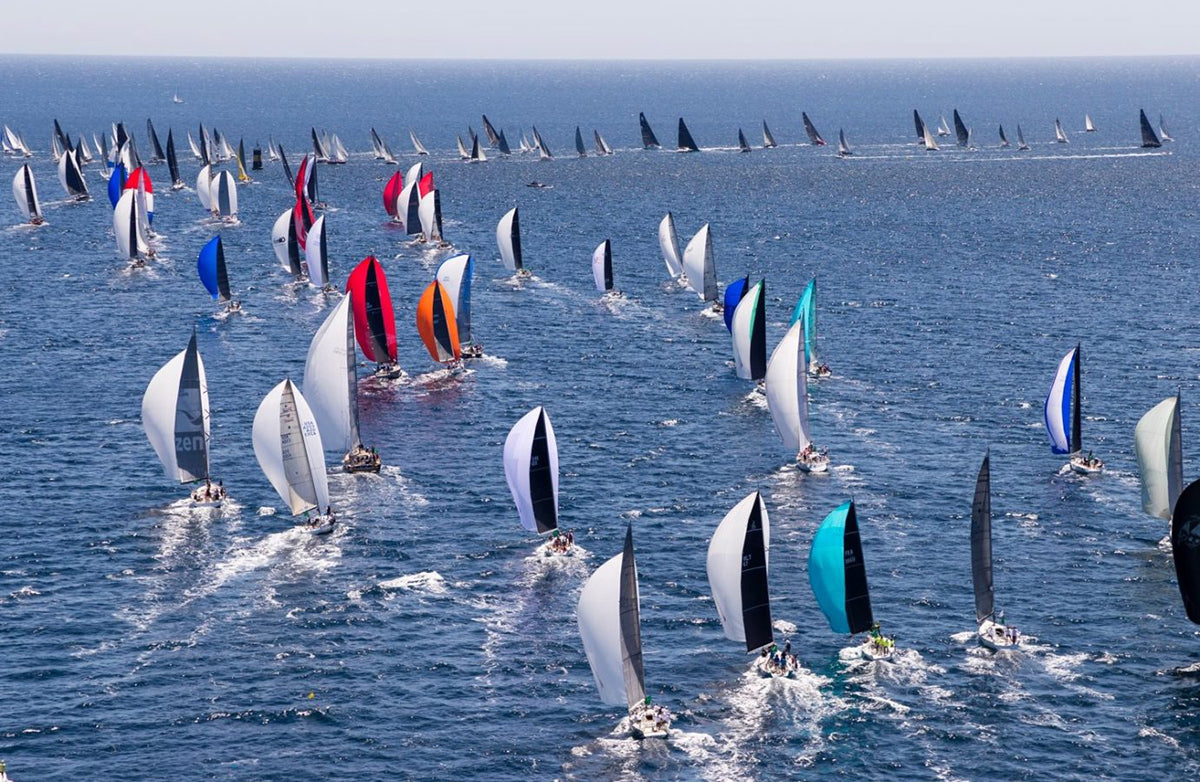
ÉXITO OCEÁNICO EN LA ROLEX GIRAGLIA
ÉXITO OCEÁNICO EN LA ROLEX GIRAGLIA
La 67ª edición de la Rolex Giraglia finalizó con excelentes noticias para North Sails, que equipó a los ganadores de diferentes categorías, incluyendo al campeón absoluto, el Caol Ila R de Alex Schaerer.
📸 Carlo Borlenghi
El Maxi 72 suizo fue uno de los muchos barcos que apostaron por la nueva 3Di Helix para afrontar la regata oceánica de 241 millas náuticas entre Saint-Tropez (Francia) y Montecarlo (Mónaco) vía la mítica roca Giraglia, en el extremo septentrional de Córcega. También eligió velas North Sails el ganador en tiempo real, el Rambler del estadounidense George David.
READ MORE
READ MORE
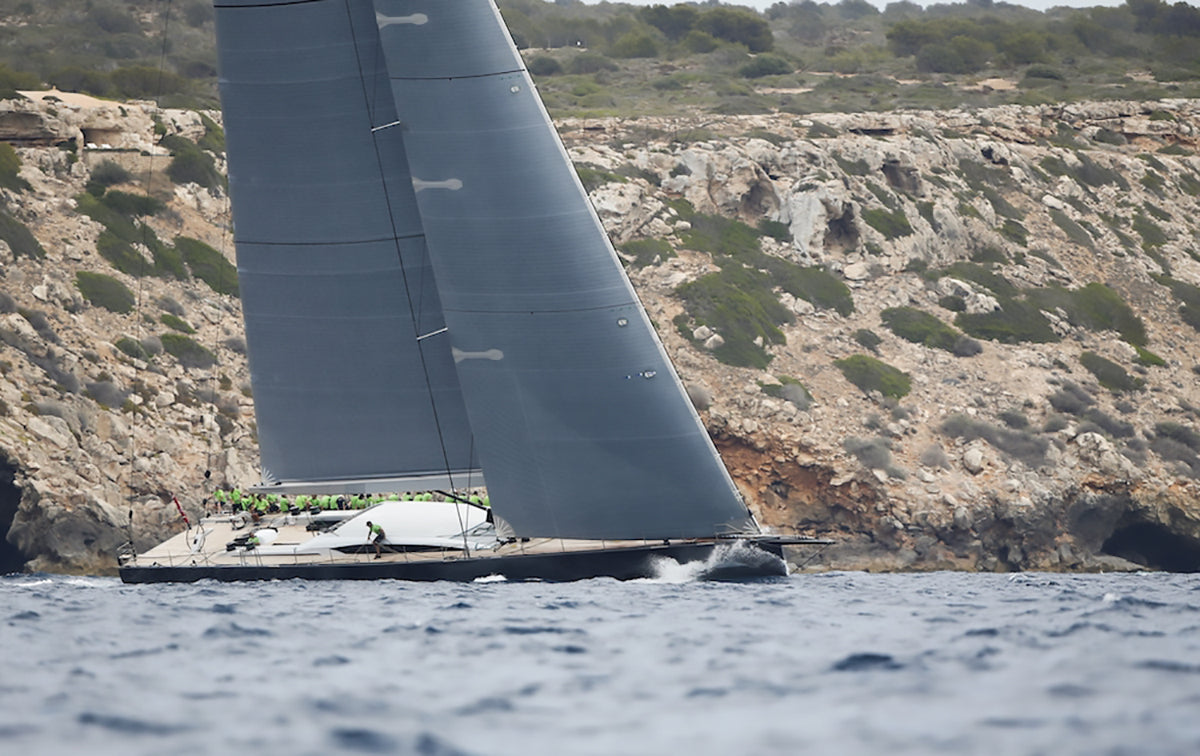
NORTH SAILS, PROTAGONISTA EN LA SUPERYACHT CUP
NORTH SAILS, PROTAGONISTA EN LA SUPERYACHT CUP
North Sails ha vuelto a dominar la Superyacht Cup Palma (19-22 de junio), la regata de superyates más antigua de Europa, y los 13 barcos que compitieron por la edición 2019 equiparon velas 3Di.
📸 Sailing Energy
El ganador absoluto fue el 33 metros WinWin diseñado por el español Javier Jáudenes, que se impuso en las tres pruebas disputadas, llevándose además la victoria en Clase A. El vencedor en Clase B fue el 42,7 metros Topaz y en Clase C el 30 metros Becquia. El 40 metros Huckleberry recibió el premio North Sails Boat of the Day Award como barco con mejores resultados en la jornada del viernes, 21 de junio. Creado este año, el trofeo estuvo dedicado a la memoria del fundador de North Sails, Lowell North, y fue entregado por Tom Whidden (director general de North Technology Group) y Quinny Houry (director de North Sails Palma). El equipo de North Sails Palma prestó servicio de puesta a punto y reparación en sus dos velerías de la isla, el mayor centro del mundo especializado en superyates.
READ MORE
READ MORE
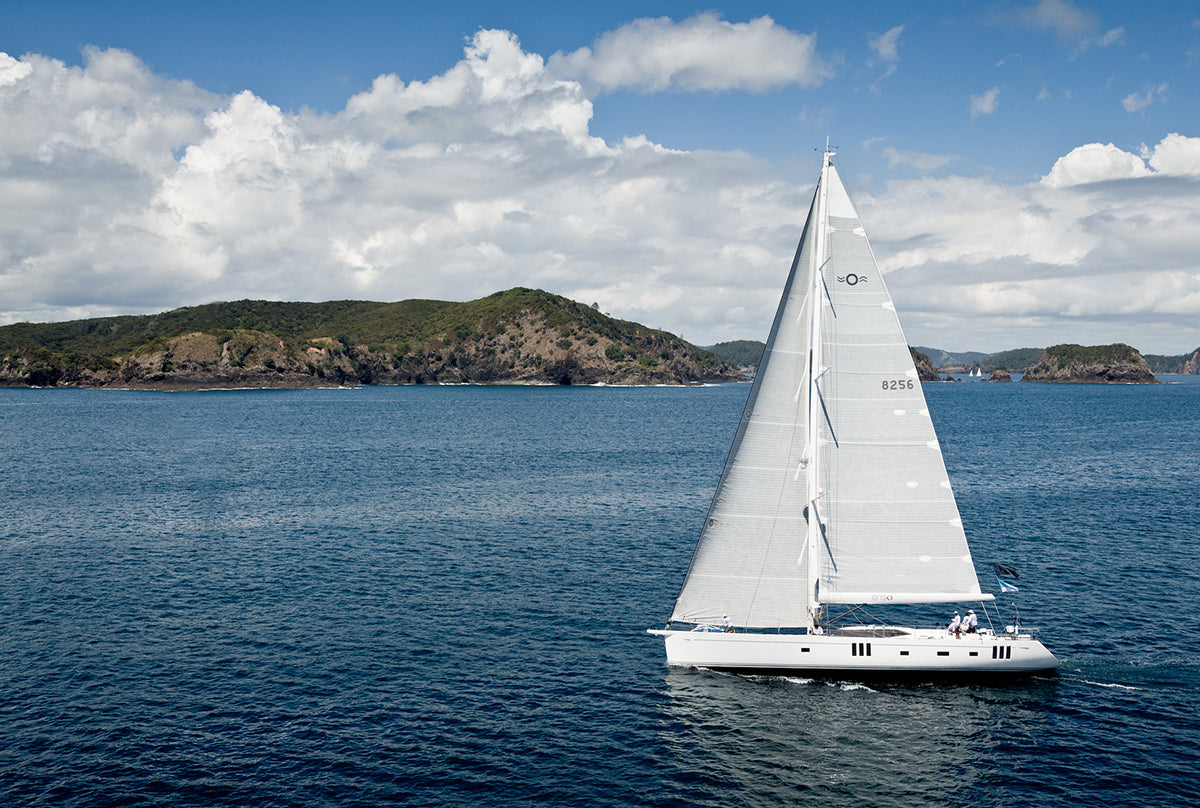
3Di OCEAN, LA VELA PARA CRUCERO OCEÁNICO DE GRAN CALIBRE
3Di OCEAN, LA VELA PARA CRUCERO OCEÁNICO DE GRAN CALIBRE
La última incorporación al catálogo North Sails es una vela específica para superyates de crucero oceánico.
📸 Jeff Brown
Su eslogan “ultra fuerte, ultra refinada” desvela dos de las muchas virtudes de este producto específico para grandes esloras de armadores que priorizan la durabilidad sin renunciar a las prestaciones asociadas a la tecnología 3Di.
La nueva 3Di Ocean es la última incorporación a la gama North Sails 3Di, en la que comparte espacio con las conocidas NORDAC (3Di realizada en poliéster, ideal para crucero), RAW (indicada para competición), DOWNWIND (específica para velas de popa) y ENDURANCE (con especial rendimiento en durabilidad y conservación de la forma).
La 3Di OCEAN está diseñada específicamente para cumplir con los exigentes estándares de calidad asociados al crucero oceánico de superyates a partir de 60 pies de eslora (18,3 metros). Para su creación, el equipo de diseño North Sails ha aplicado el conocimiento adquirido en el desarrollo de las velas de competición oceánica equipadas por los IMOCA, los Volvo 65 y los trimaranes Ultime, toda una garantía de fiabilidad.
En su fabricación se utiliza la proporción más alta de Ultra PE de toda la gama 3Di, lo que le confiere una imbatible combinación entre facilidad de uso y manejo al reducir volumen, peso y rigidez, pero sin comprometer los altos niveles de robustez y fiabilidad característicos de las velas de composite moldeado 3Di. Ultra PE posee mayor grado de elasticidad que el carbono o la aramida, lo que se traduce en un mayor margen de seguridad frente al estrés.
Quinny Hourly, director de North Sails Palma y uno de los máximos expertos en velería de superyates, explica el origen y las características de la nueva 3Di OCEAN: “Identificamos la falta de un producto en el mercado que cubriera las necesidades de armadores de barcos de cierta eslora que buscaban una vela para crucero oceánico con un equilibrio entre prestaciones y estabilidad diferente a lo que ofrecíamos con el 3Di ENDURANCE, demasiado estable para cierto perfil de clientes. La idea con la 3Di OCEAN es proporcionar una vela de considerable durabilidad pero que proporcione un poco de elasticidad, sea más permisiva en su manejo y más fácil de trimar. Todavía ofrece la energía de una 3Di, pero la libera de una manera más gradual. No es un producto para alguien que antepone las prestaciones y realiza dos o tres regatas al año, sino para quien disfrute navegando de crucero por el Mediterráneo”.
En la fabricación de la 3Di OCEAN se utilizan protecciones exteriores con tapes de tafeta de poliéster tejido, una solución que se traduce en mayor resistencia y durabilidad que los recubrimientos sin tejido, ofreciendo protección extra frente a la flexión, las rozaduras, la abrasión y la degradación por radiación UV.
La gama North Sails 3Di OCEAN está disponible para mayores convencionales, de sables forzados, de cabeza cuadrada y enrollables, así como para velas de proa enrollables y no enrollables.
READ MORE
READ MORE
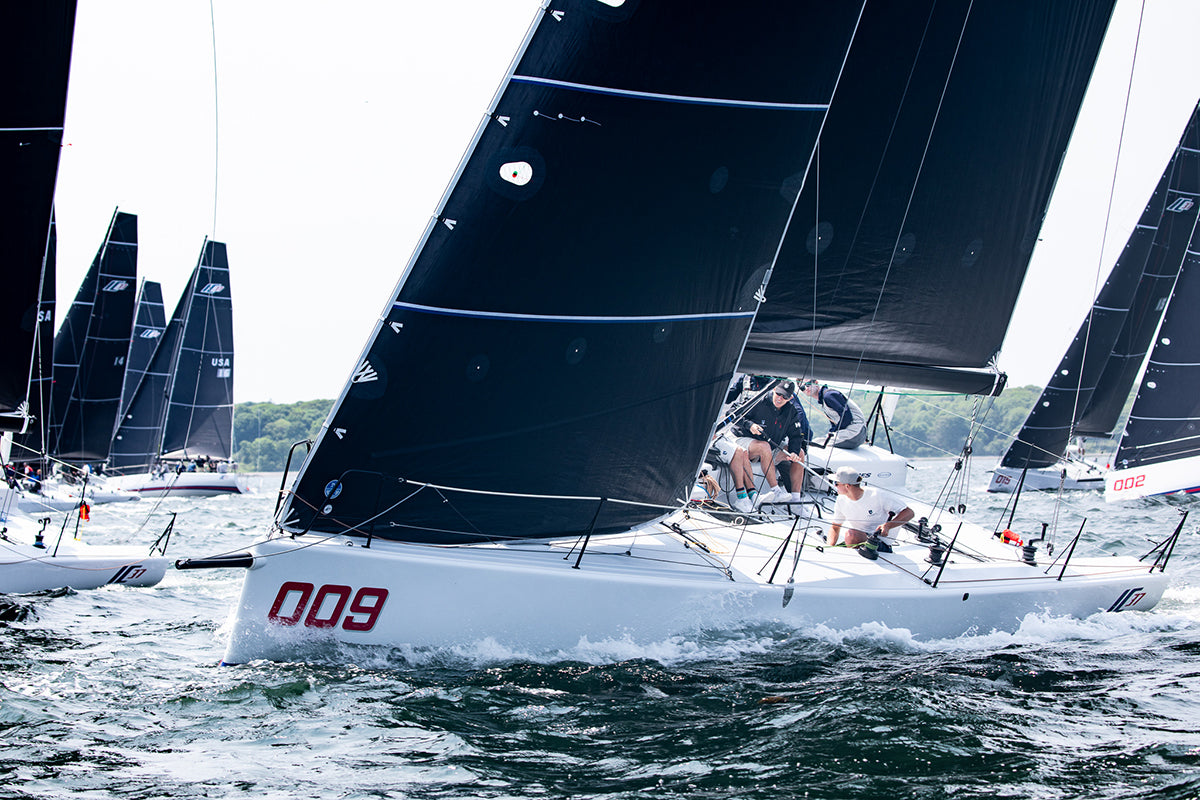
MELGES IC37 TIPS: VOLUME FOUR
MELGES IC37 TIPS: VOLUME FOUR
Expert Notes On IC37 Boathandling and Boat Trim
📸 Melges Performance Sailboats
North Sails experts have been busy figuring out the IC37 since the first boat became available in 2018. In Volume Four of our class tips, we suggest solutions to some common boat handling challenges.
See also: Experts Notes On IC37 Sails | What We Learned at The Leukemia Cup | Training Weekend Notes
Best Practices for One Winch from a Pro Pitman
Pro Pittman Aubie van Beuren shares his suggestions and best practices. At the start, have the jib halyard loaded on the winch with the handle in and the clutch open. That allows for quick tensioning and easing of the halyard in tacks, as conditions warrant.
On the offset leg, the pit person hikes as long as possible and then goes legs in to transfer the jib halyard from winch to clutch. Some halyard tension will be lost, but the luff should be softer for the offset and downwind legs. The winch is now available for the spinnaker hoist.
The kite halyard should live on the winch for the downwind leg. I will also wrap the tack line around the winch with a couple of “safety wraps” to prevent slipping. If the tack line needs to be adjusted, the spinnaker halyard can be temporarily transferred to the clutch.
At the bottom mark, use the winch to control the spinnaker halyard through the drop. Once the kite is under control, load the jib halyard onto the winch and tension as needed for the windward leg. Finally, open the clutch to allow for fine tuning upwind.
📸 Melges Performance Sailboats
Best Boat Trim
Crew weight on the IC37 needs to be as active side to side as it is fore and aft. Since the boat is very wedge-shaped, more heel makes the bow want to drive down into the water. To compensate, move the crew aft earlier up the wind range than expected.
There are two good rules of thumb for most conditions about where the crew should sit:
How much noise does the water make exiting the transom? If you hear a lot of bubbling/gurgling noises, your crew is too far aft.
The knuckle of the bow should always be about two inches underwater. If more than that is submerged, your crew is probably too far forward.
In very wavy conditions, we add a third rule of thumb: If you take three waves over the bow in quick succession, you are too far forward in the boat.
In very flat water, pressing farther forward than normal will help reduce wetted surface.
On the downwind legs, when there is enough pressure to be constantly planing, moving weight farther aft will help stabilize the boat. Getting more of the wide stern in the water and getting the bow out helps the boat track better and makes it easier to drive. If there is too much weather helm downwind, it could be because the crew weight is too far forward and the bow is digging in.
Visit and bookmark the IC37 Class page, your one stop for IC37 resources from North Sails.
📸 Melges Performance Sailboats
READ MORE
READ MORE
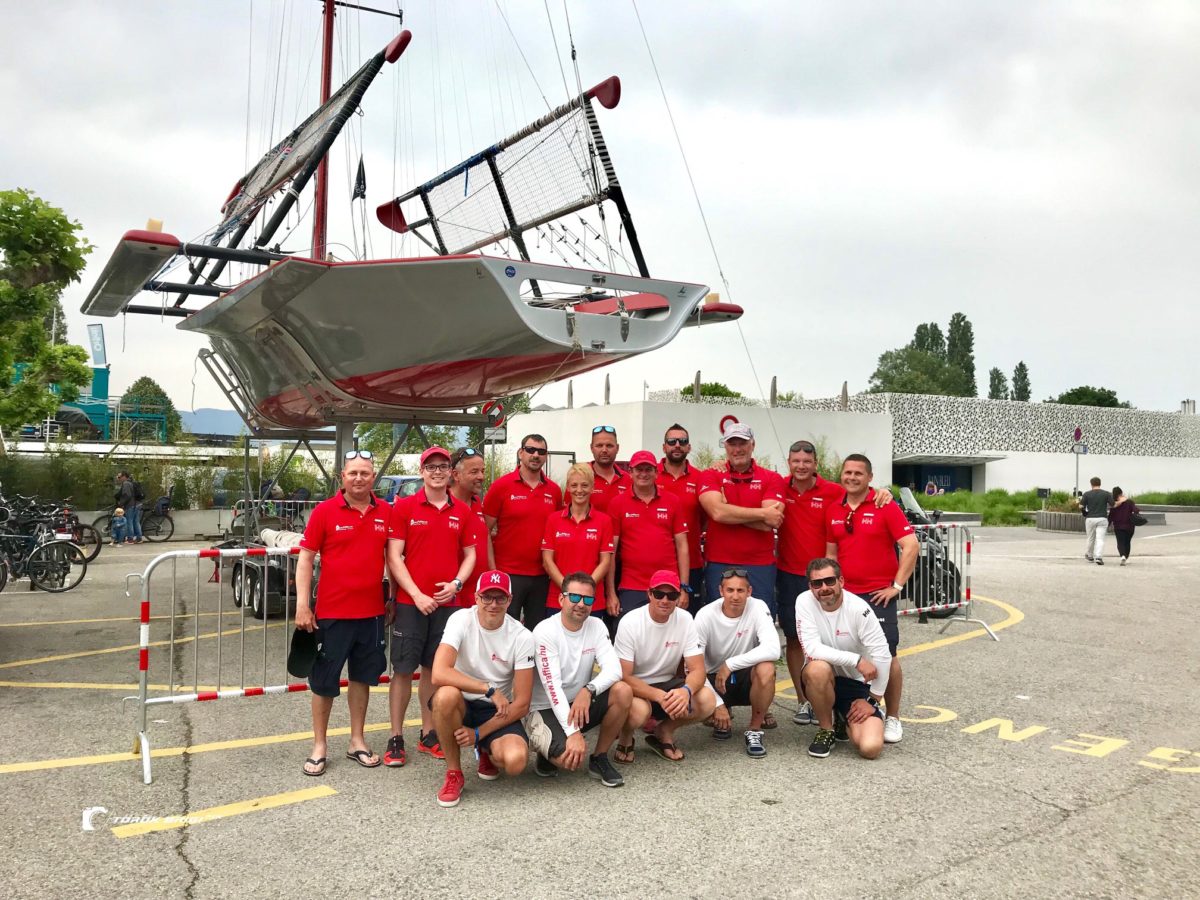
#NSVICTORYLIST RAFFICA SAILING TEAM
Bol d'Or és Rund Um győzelem
Gratulálunk a Raffica Sailing Team győzelméhez a Bol d'Or és a Rund Um versenyein. A kihívást jelentő megmérettetésen a kiemelkedő csapatmunkát a NORTH SAILS gyors és tartós vitorlái is segítették.
📸 Brigi Török @torokbrigiphotographer
READ MORE
READ MORE
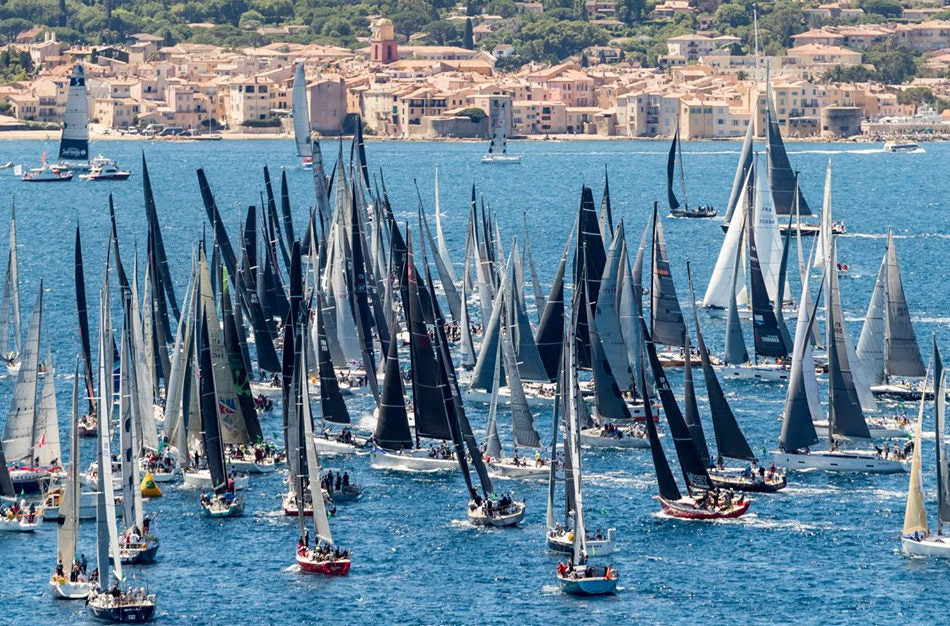
LES COUREURS NORTH SAILS S'IMPOSENT SUR LA ROLEX GIRAGLIA CUP
LES COUREURS NORTH SAILS S’IMPOSENT SUR LA ROLEX GIRAGLIA CUP
La voile Helix de North fait ses preuves sur cette 67e édition
📸 ROLEX/Carlo Borlenghi
Evénement incontournable de la saison estivale, la Rolex Giraglia Cup est devenue depuis sa création en 1953 une des plus grandes compétitions de voile en Méditerranée. L’édition 2019 qui s’est déroulée du 7 au 15 juin a regroupé 297 bateaux dont quelques-uns des plus beaux voiliers de la planète et près de 3000 marins professionnels et amateurs. La Rolex Giraglia Cup se dispute sur plusieurs jours comprenant une première régate de nuit au départ de San Remo pour rallier Saint-Tropez, une série de courses côtières à Saint-Tropez et enfin l’étape finale, point d’orgue de l’événement, « la Giraglia » ou Grande Course: une course au large de 241 miles entre Saint-Tropez et Monaco contournant le rocher de Giraglia situé au nord de la Corse. Lors de cette 67e édition, les coureurs North Sails se sont imposés une fois de plus sur le podium. Le Maxi 72 Carol Ila R d’Alex Schaerer, muni de voiles North Sails 3Di et de la nouvelle voile Helix, décroche le titre de champion de la Rolex Giraglia Cup 2019 (classement overall) en temps compensé. George David et son monocoque Rambler 88 (voiles 3Di et voile Helix) remportent en temps réel la Grande Course en 16 heures et 35 minutes dans des conditions météos musclées. Rambler 88 reçoit également la récompense ‘Beppe Croce’ pour avoir contourné le premier l’Îlot de Giraglia.
Carol Ila R remporte la Rolex Giraglia Cup en temps compensé. 📸 ROLEX/Carlo Borlenghi
D'autres bateaux North Sails ont également triomphé lors de cette grande fête nautique sponsorisée par Rolex depuis 1997. C’est le cas de Jethou, propriété de Sir Peter Ogden, qui arrive en tête de la classe IRC O Racer côtier. Le Maxi 72 Jethou est l'un des premiers bateaux à avoir adopté dès 2018 le concept Helix. La voile Helix, développée selon la technologie de répartition des charges ( Load Sharing Technology) propre à North Sails, est une voile d’avant à enrouleur sans câble qui permet une meilleure distribution des charges dans la voile ainsi qu’une stabilité accrue et une plage d’utilisation étendue. Résultat, on obtient une voile de reaching polyvalente et rapide. « La voile Helix est une arme redoutable au reaching, commente Joey Newton, régleur de voile à bord de Jethou. Cette voile permet un large éventail d’utilisations aux allures abattues. Historiquement, les Code Zéros étaient conçues comme des voiles de près petit temps, mais la voile Helix a l'avantage d'être bien plus polyvalente. La distribution des charges plus équilibrée dans la voile et la facilité de réglage via de petits ajustements de l'amure sont des atouts non négligeables. »
Stella Maris 📸 ROLEX/Carlo Borlenghi
Cette année, la Rolex Giraglia Cup a également accueilli plusieurs Swans dotés de voiles North (en catégorie Club 50, 45 et 42) qui ont devancé leurs concurrents pour s’offrir des places de podium. Ainsi, Stella Maris (ClubSwan 50) s’adjuge une première place en ORC overall, et empoche le très convoité ‘Nucci Novi Challenge Trophy’. Son propriétaire August Shram se félicite de cette victoire surprenante alors que lui et son équipage ont commencé à régater il y a moins d’un an en prenant part à la Copa del Rey MAPFRE. Parmi les autres gagnants North Sails, on notera la performance du TP52 @Robas 2 qui finit 3e toutes classes confondues sur la Grande Course de la Giraglia. Wallyno et Prototype Vera arrivent respectivement en 2e et 3e positions en RC 0 Cruiser-racer, Cannonball est classé 2e en IRC 0 racer. Imagine, Albator et @Robas 2 s’adjugent la 1e, 2e et 3e places en combiné IRC A Inshore & Offshore, Raging Bee finit 2e dans la catégorie Combiné IRC B Inshore & Offshore. Et dans la catégorie IRC A régate cotière, Freccia Rossa arrive en tête de classement.
Freccia Rossa 📸 ROLEX/Carlo Borlenghi
Enfin, on retiendra de cette édition 2019 de belles images sous spi lors de la descente depuis la bouée de Cavalaire jusqu’au rocher de la Giraglia dans 25-30 nœuds de vent où l’on pouvait observer une flotte de bateaux surfer sur le plan d’eau.
📸 ROLEX/Carlo Borlenghi
READ MORE
READ MORE
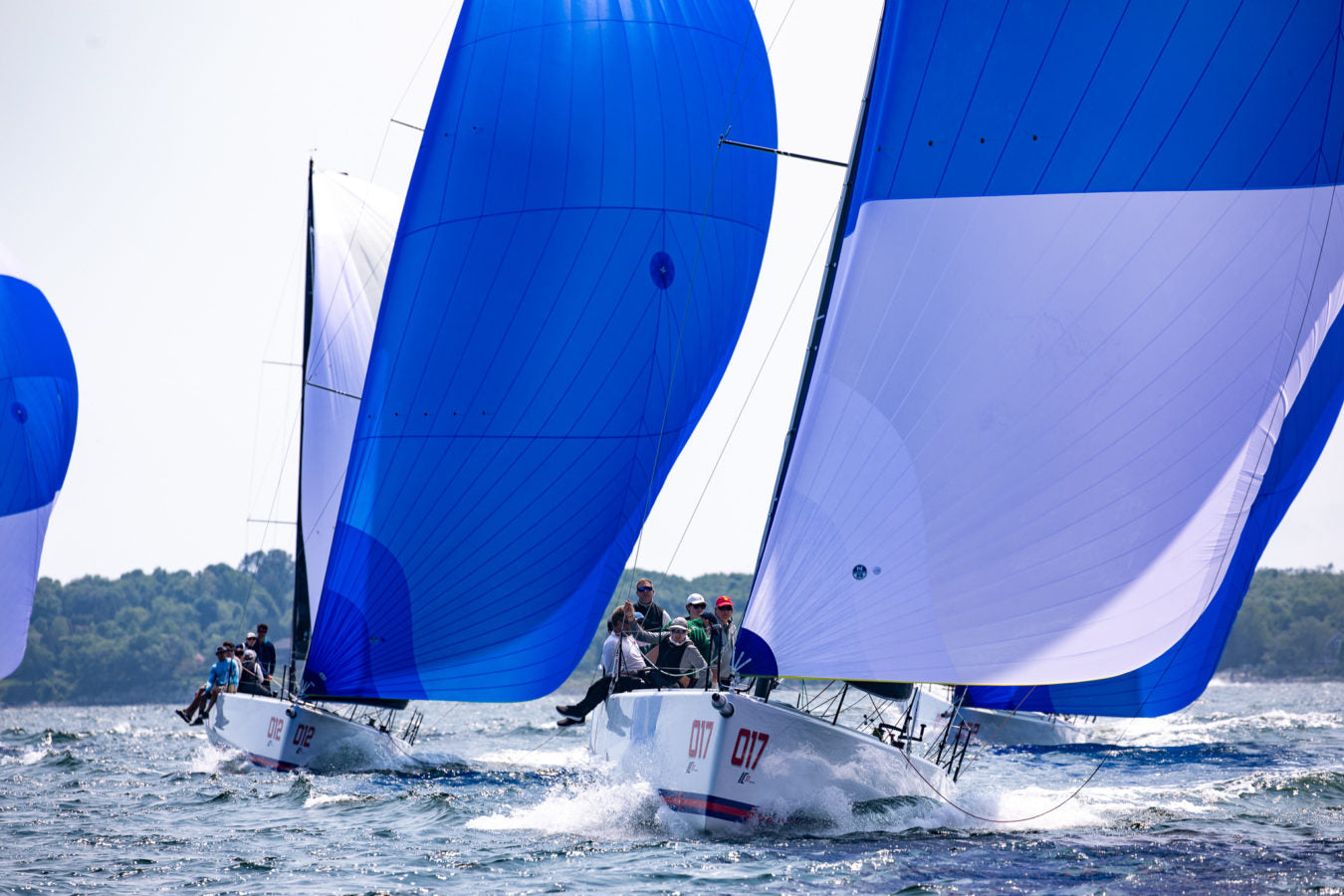
MELGES IC37 TIPS: VOLUME THREE
MELGES IC37 TIPS: VOLUME THREE
Expert Notes On IC37 Sails
📸 Melges Performance Sailboats
The North Sails IC37 class experts sailed the IC37 for most of the 2018 season and are now coaching the fleet during the first three events of 2019. In Volume Three of our class tips, North Sails designer Mike Marshall provides answers to common problems we’ve seen on sail setup and offers his insight to some of the sail decisions that were made during the charter fleet’s inaugural season.
Batten Box Stud Installation
The batten boxes are designed to have the studs screwed as far in as possible while still being only hand tight. The end of the stud attached to the slide might look like it is farther into the sail than the other bushings on the luff, but that is because the batten slides stick out of the mast farther than the intermediate slides.
This is important: don’t over-tighten the studs. They should be screwed in as far as possible by hand and then backed out half a turn. This allows the box to rotate on the stud and line up with the track when the main is hoisted. If the stud is in too far and the box can’t rotate to vertical easily, you risk bending the stud and breaking the batten box.
PIC 1: The stud is fully screwed in but not parallel to the luff. This is incorrect. It needs to be backed out half a turn to allow the box to settle vertically on the mast. PIC 2: The stud is parallel to the luff. This is correct.
Jib Buckles And Spinnaker Damage
The jib buckles have been specifically placed on the port side of the jib to minimize interference with the spinnaker. The spinnaker is most likely to come in contact with the luff side of the jib during a weather strip on port tack. The spinnaker will have minimal prolonged dragging contact with the jib luff during all other takedowns.
The most common way to rip the kite is if the spinnaker sheet doesn’t get eased enough through a jibe. When the boat turns down, the crew must aggressively ease the spinnaker sheet to get the sail away from the boat. If this doesn’t happen, the spinnaker will fold over itself, the old sheet, and the headstay, causing a pinch point where the kite can tear. We have witnessed this firsthand in a jibe where the jib was down and in the pulpit; the sheet wasn’t eased enough, and the spinnaker folded in on itself and tore about 3 meters above the pulpit.
Spinnaker Zipper
It was decided early on that the spinnakers would not have tack zippers. There were two reasons for this. First, with very close racing, sending someone down below is potentially around 10% of your crew weight off the rail. This could be very detrimental to a close cross at the next windward mark. Second, in the spirit of reimagining fun racing, sending someone down below to be banged around while repacking the kite didn’t seem like the right decision. All of this led to the conclusion that the zippers would only be used at the first windward mark of each race. At the second one, the crew will have to learn how to keep the kite in the boat without zippers anyway. Thus, the hassle of zippers was avoided and they were removed. Incidentally, this also prevents a lot of kite-tearing potential from zippers not being broken/opened properly or cars not being removed.
Gybulators
IC37 spinnakers do not come with gybulators for two reasons. In the initial trials of the boat with a shorter pole, we tested outside jibes and found them slower than inside jibes; the foot of the kite is so long that it is an incredibly large amount of sheet to pull in. Since inside jibes seemed to be easier, the pole length was increased to accommodate them. Second, with the pulpit setup and jib configuration, the stiff gybulator made it very difficult to get the tack of the sail past the forestay. At any angle other than vertical, the sail would be stuck on the leeward side of the jib behind the pulpit. If you want to do outside jibes, tape a batten to the bottom of the front of the pole to act as a bowsprit.
Visit and bookmark the IC37 Class page, your one stop for IC37 resources from North Sails.
📸 Melges Performance Sailboats
📸 Melges Performance Sailboats
READ MORE
READ MORE
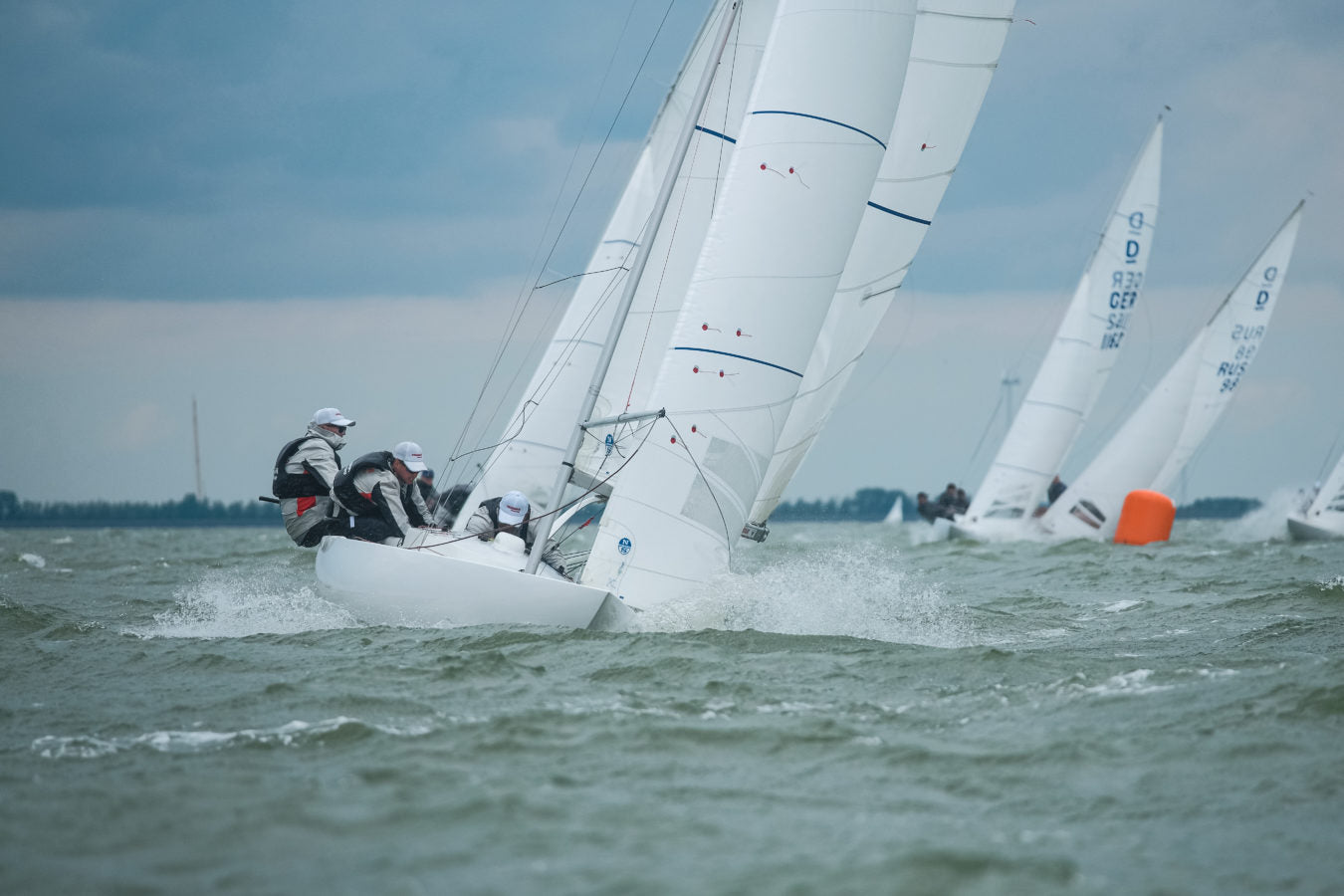
NORTH SAILS CONNECTS WITH YANMAR RACING
NORTH SAILS CONNECTS WITH YANMAR RACING
Impressive Podium Finish at the Dragon Gold Cup
Yanmar Racing, JPN 56 📸 Eric van den Bandt
Right after they won bronze at the prestigious Dragon Gold Cup 2019, we talked to North-powered Japanese-based team Yanmar Racing about their impressive result.
They’ve only sailed together in the Dragon class for one year, but the podium finish in Medemblik proves they have already clicked in the boat. The team consists of three sailors: boat owner and helmsman, Peter Gilmour, who lives in Perth, Australia; Yaji San who is based in Yokohama, Japan; and Sam Gilmour, who lives in Gothenburg, Sweden.
A major perk of the International Dragon Association (IDA) Championship Events and Grade 1 Grand Prix competitions is the friendships developed within the class. Coming from a match racing background and used to racing just one other boat, the team found it a big change being part of a fleet of 90 boats.
📸 Eric van den Bandt
Setting the mast to the mainsail has been a key mission for Yanmar Racing. “A stiffer mast section has allowed us to use a lower luff curve main, along with the standard North A-7+ . We used the North V-6L, V-6M and V-6H Genoa for light, medium and heavy wind respectively, and also used the R-5 Spinnaker.”
“The cloth quality is good for the Mainsail, Genoa and Spinnaker. They hold their shape well throughout the range specified.”
The Medemblik event was very well managed, Peter says. The starts were difficult with a 1 km line, but Danbuoys provided additional assistance along the line.
The sails handled the strong winds and choppy sea state well, Peter Gilmour says. “We typically change up our Genoa in slightly lower wind ranges than most specify, and this may cause us to get caught out below range with the heavy, for example. The sails seemed to handle these conditions fairly well and we were happy with the sail choices we made.
“Responding on board and changing gears to get the most out of the sail/mast combination as well as optimising course position is something that is evolving for us in each race and regatta we do.”
Race five was particularly exciting. With a steady 22 knots and gusting 28 knots, the team did not get off to their best start. However, after prioritizing boat speed until they found clear air, they reached the top mark in fourth. The downwind leg was fantastic, with some big windward rolls, nail-biting jibes, and a generous amount of fun.
Next up is the Dragon Grand Prix in Kuhlungsborn, Germany on the 2nd – 6th July. Good luck!
Talk to a Dragon Class Expert or browse the Shop Inventory.
Louise Racing, GBR 820 📸 Eric van den Bandt
My Way, DEN 266 📸 Eric van den Bandt
My Way, DEN 266 📸 Eric van den Bandt
📸 Eric van den Bandt
FRA 428 📸 Eric van den Bandt
READ MORE
READ MORE
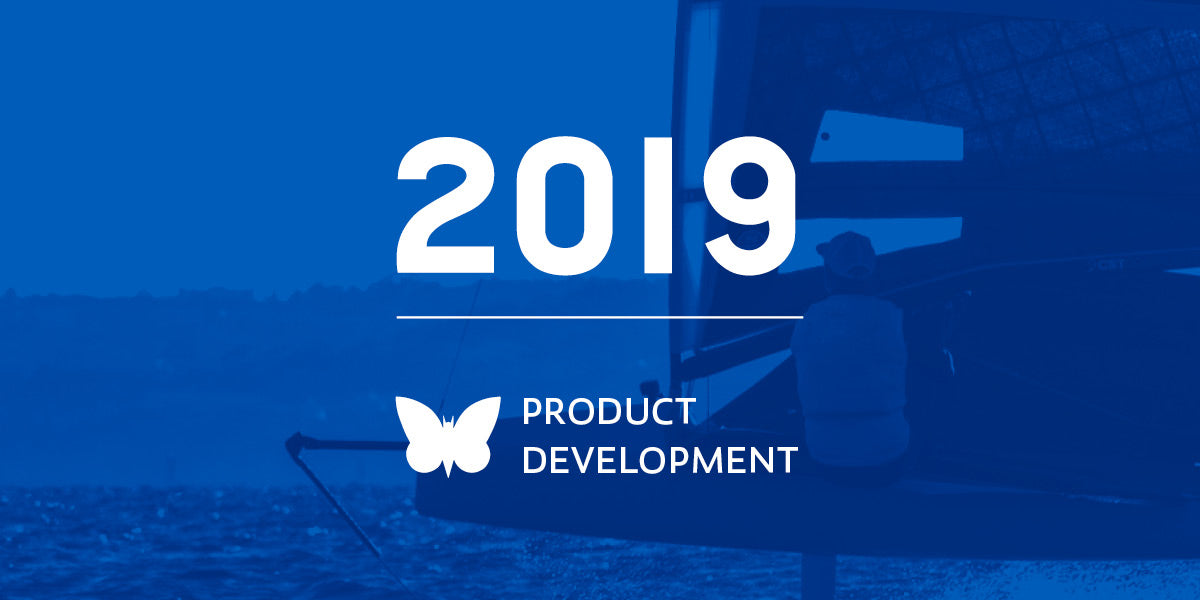
NORTH SAILS UNVEIL NEW 3Di SAILS FOR MOTH SAILORS
FOUR NEW 3Di SAILS FOR MOTH SAILORS
Adapted For Different Rig Sizes And Hull Designs
As the world leader in One Design sailmaking, North Sails continues to develop products tailored to meet the needs and goals of racers in any and all classes and categories. Under the leadership of new North Sails Class Leader for Moths, Rob Greenhalgh, four new high-performance 3Di mainsails are now available to enhance the Moth sailor’s enjoyment and results on the water.
The Vi-8 3Di Mainsail is an all purpose sail for the Moth, recommended for a mast length of 5270mm with standard rigging. The Vi-8LA 3Di Mainsail is an all-purpose low aspect sail for the Moth, recommended for a mast length of 5100mm; this sail has low centre of effort. The Vi-8DS Decksweeper 3Di Mainsail is an all purpose sail for the Moth, recommended for mast length 5100mm and 60mm Mast stumps. Finally, the Bi-8DS Decksweeper 3Di Mainsail is an all-purpose deck sweeping sail for the Bieker Moths, and a recommended mast length of 5000mm.
Commenting on the new North Sails mainsail products, former multiple National and European International Moth Champion Rob Greenhalgh concluded, “North has long been seen as one of the leaders in Moth sailing and the new mainsails continue to provide our clients with the best design and materials on the circuit. Careful distribution of shape and luff curve has produced easy-to-use mainsails for both upwind and downwind sailing. 3Di technology continues to offer unrivaled benefits, including rigidity, weight reduction, shape holding, durability, and performance. I am confident Moth sailors will reap the rewards on the race course.”
“North has long been seen as one of the leaders in Moth sailing and the new mainsails continue to provide our clients with the best design and materials.”
As standard, every North Sails Moth mainsail comes with the following: carbon battens, internal batten pockets for perfect symmetry between tacks, windows, painted class insignia, sail numbers, 3D printed camber inducers, tell tales, and a long roll bag available for kinked booms and straight booms.
Learn more about the new North designs for the International Moth.
READ MORE
READ MORE

TED KELLER WINS MC SCOW MASTERS
TED KELLER WINS THE MC SCOW MASTERS NATIONALS
North Clients Sweep The Podium
Masters champion Ted Keller and son Ben | Regatta Girl Photography
This past week the MC Scow sailing season kicked off with one of our major championships the MC Masters Nationals being sailed on Keuka Lake in New York. Here’s the recap by MC expert Eric Hood:
The Regatta
Next time you see Keuka on any regatta calendar and schedule you absolutely have to come. Plus bring family or friends. There is so much to do here, see and enjoy. The original wine country in the United States. Keuka is one of the famous Finger Lakes. It is one of the smaller ones and is still 20 miles long with a width of ½ to 1 mile wide. Check it out on the map. The club is a MC, E Scow club and also has some good junior sailing going on as well. The MC class brought in Chip Mann and Larry Krause to help the local Keuka crew run four great races for us. Winds for practice day Thursday were 12-17 mph out of the north. Friday day one of racing saw two races with winds 9-15 mph with wind direction of 0 degrees. Saturday was more wind with two more races. Wind speed was 15-22 mph wind direction 340. We raced those two races up in the north branch if you look at the map. Sunday we tried to go for two more morning races with a noon cutoff but the morning thermal died as we launched. No racing on Sunday. So our scheduled 7 race regatta turned into a four race series.
The Sailors
The 46 boat fleet had some of the best MC sailors in scow world and the MC Class. Former Lightning World Champ Matt Fisher, former MC National Champ Glen Walborn, two time winner Brett Hatton, Scott Harestad 2017 MC Masters Champ, 2018 Masters Champ Vince Driessen, Former ILYA and Masters Champ EHood, CScow legend Bruce Rosenheimer and really a bunch more great sailors. As we look through the roster and now look back at the results you had probably 20 sailors capable of winning a race and probably at least 10 capable of winning the event. What was really great was seeing how well the mid-pack and back-end groups were sailing. That was special. The Masters group is really doing well. 15 states and two countries represented (U.S. and Canada).
MC Masters Winners | Regatta Girl Photography
The Results
Only two teams survived with all top ten finishes. Double digit finishes were the game changer for the top 15 boats with 3rd through 15 all having a tough race. Not because of bad conditions. 18 of the 20 legs sailed were good, fair and steady legs. We had two legs of the 20 legs sailed where giant race changing shifts came through. Most of us who have sailed here before were surprised at actually how steady it was all week.
The new champion is Ted Keller a newcomer to the Masters fleet. Ted along with his son Ben won with a four race total of 15 points. Ted and Ben sail out of both Torch Lake, MI and Hoover in Columbus, OH. 2nd place former Lightning World Champ Matt Fisher sailed all four races with wife Lisa finishing with 17 points. The Fishers sail out of Hoover as well in Columbus, Ohio. The Keller and Fisher teams were out a ways on third place former Masters Champ Scott Harestad from Spring Lake who had a great regatta with 26 points.
Race winners were: Scott Harestad race 1, Bruce Rosenheimer race 2, Vince Driessen from Gull Lake race 3 , Ted Keller race 4
Top Old Salt – Phil Ecklund from Union, CO.
Top Mega Master – Allan Haeger from Lake Beulah, WI
Top Grand Master – Matt and Lisa Fisher from Hoover SC in Columbus, OH.
Top Woman – Katie Arvesen from Gull Lake, MN
North Clients finished 1,2,3,4,7,8,9 using the ZMax mainsail.
Lessons Learned
Certainly I think the biggest lesson learned was a good one that Ted Keller our new champion just shared with me. He was saying when things look like they might go sideways on you to make the bad less bad. His example was race three the biggest wind race for sure. Ted was caught without his crew and he knew it could be a 15-20-25 type finish real easy. Instead he gutted it out, hiked hard and was super focused to stay in top 10 no matter what. He finished 6th . Good lesson for sure. Other lessons not getting off to the edges on this lake. That really never worked. It was always center, center left or center right for 18 of the 20 legs raced. Downwind sailing with waves for the last two races was critical not to submarine. So vang on steer more by the lee with a good windward heel took care of that challenge. Race 4 was the most challenging race with velocity changes. One of our two challenging legs was the last leg where we went from 22mph down to 4mph in a matter of a couple of minutes . That was at the top near the shore and finish. So shifting gears was a big deal. Vang on , vang off. If you had a crew then smooth in and out moves so you as skipper could focus on being still with your body, looking forward with focus on the breeze coming on you. All in all a fun and challenging week. All conditions, lots of shifting gears.
Other Regatta News
The season is just getting started with some big events coming soon.
MC ILYA Invite at Gull Lake, MN, what a cool site if you have never been there. Then we have the Nationals at Minnetonka, MN. Then the ILYA Champs at Winnebago. I will be going to the 90th Western Michigan Yachting Association Championships on my old home lake which is White Lake, Michigan. All of these events will have big fleets for the MC. So lots of opportunities coming up. Stay tuned at www.mcscow.org , www.melges.com , www.wmya.org, www.ilya.org.
Big thanks to Mari Johnson with incredible photos, check out and download at Regatta Girl Photography at www.regattagirlphotography.com .
Ronnie Hull the MCSA Communications director has fantastic videos, interviews in lots of places. Facebook – MC Sailing Association, Instagram – @MCSailingAssociation, YouTube – MC Sailing Association.
Race 1 winner – Bruce Rosenheimer | Regatta Girl Photography
Vince Driessen, 2018 Masters Champ powered by North ZMax | Regatta Girl Photography
READ MORE
READ MORE

#NSVICTORYLIST: PALMA SUPERYACHT CUP
SUPERYACHT SUCCESS IN PALMA
North Sails and North 3Di Power The Superyacht Cup Palma
Win Win is the Overall Winner of the 2019 Palma Superyacht Cup, making this their third time collecting title. 📸 Sailing Energy
Another year has closed on The Superyacht Cup Palma, and North Sails were on every boat to have claimed a place on the podium. Beyond that, all boats sailing in the regatta had North 3Di onboard to power their superyacht performance.
Owners and crews alike look forward to this annual event for the competitive sailing and welcoming onshore atmosphere created by event organizer Kate Branagh and her expert team. The Palma based North Sails loft were busy helping the 13 yachts racing prepare for the 2019 edition of Europe’s oldest superyacht event as well as making time to check in with North colleagues who were also in town for the three days of racing. Sail deliveries in the morning, racing during the day, and sail pick in the afternoon, press repeat all week long.
Win Win had three wins across three races, making them the Overall Winner of the 2019 Palma Superyacht Cup and also placing them on top of the podium in Class A. Topaz, Velsheda and Missy each collected a bullet in one of the three races for class B, with Topaz ultimately winning their class overall. Bequia won two of three races in her class to be named the overall winner of Class C.
Win Win is the Overall Winner of the 2019 Palma Superyacht Cup, making this their third time collecting the title. 📸 Sailing Energy
Huckleberry was awarded ‘North Sails Boat of the Day’ by North Technology Group CEO Tom Whidden and Head of North Sails Palma Quinny Houry during the North Sails Happy Hour on Friday. In its inaugural year, the award is dedicated in memory of Lowell North who passed away in early June 2019. “Nobody cared more about performance than Lowell North and coming from a boat that hasn’t sailed a lot of regattas Huckleberry sailed beautifully,” explained Whidden. “The award wasn’t necessarily for the boat that’s going to win, it was for the boat that we felt did the best job with what they had to work with. They had their sails up at every mark rounding, and a lot of sails, they are sailing their boat hard and well. I think Lowell would really have liked it. He cared about winning but it wasn’t all about winning, he just wanted to do things as well as he possibly could.”
North Sails Boat of the Day winner Huckleberry, who was sailing with the new North 3Di Ocean superyacht product 📸 Sailing Energy
The Palma Superyacht Cup is the unofficial end of the superyacht racing season in Europe. 2019 was a successful and productive season for North Sails and our clients, and we look forward to the next superyacht meet up at Maxi Yacht Rolex Cup in September.
J Class Topaz wins Class B of the 2019 Palma Superyacht Cup 📸 Sailing Energy
Bequia wins Class C of The Superyacht Palma with a three-point advantage
📸 Sailing Energy
READ MORE
READ MORE

LA 6ÈME ÉDITION DE LA TIWAL CUP
LA 6ÈME ÉDITION DE LA TIWAL CUP
Compétition de dériveurs gonflables équipés de voiles North
📸 Christiane Nevo
Pour sa sixième édition, la Tiwal Cup a réuni le 8 juin dernier dans le golfe du Morbihan (grande plage de l’Île-aux-Moines) 48 dériveurs à coque gonflable dont deux Tiwals 2 (un Tiwal nouvelle génération), tous équipés d’une voile North Sails. Malgré la tempête Miguel la veille du départ, les 65 navigateurs en lice (répartis sur 31 solos et 17 doubles) ont régaté dans de belles conditions sous un beau soleil et un vent de 15 nœuds en moyenne avec quelques rafales à 20 nœuds. C’est le breton Pierre Le Clainche qui remporte toutes les manches et décroche la victoire au classement général à bord de son Tiwal 2 muni d’une voile jaune North Sails distinctive au milieu d’une flotte de Tiwals aux voiles noires.
D’année en année, la Tiwal Cup ne dément pas son succès et attire toujours de nombreux marins des quatre coins de la planète avec 9 nationalités représentées : Japon, USA, Royaume-Uni, Italie, Allemagne, Suisse, Espagne, Belgique, France.
La nouveauté de cette 6ème édition est incontestablement l’arrivée du Tiwal 2, un bateau plus compact et plus léger doté d’une voile North Sails en Dacron de 5, 60 m² de surface conçue sans bôme et lattée à trois endroits, sur sa bordure et sur sa chute notamment au niveau de la corne. La voile s’enroule autour du mât avec un matelotage simplifié et sa couleur jaune est facilement repérable sur le plan d’eau. À noter que ce Tiwal 2 tient dans deux sacs après démontage.
READ MORE
READ MORE

NEWPORT-BERMUDA RACE X NORTH SAILS
NORTH SAILS RETURNS AS PERFORMANCE PARTNER TO NEWPORT-BERMUDA RACE
Performance Seminars To Be Hosted In Newport, Annapolis, And Milford
The Bermuda Race Organizing Committee announces the North Sails return as the Official Performance Partner for the Newport Bermuda Race in 2020, which will include running a number of the hugely popular ‘Performance Seminars’ that were introduced before the 2018 edition of the race. As the world’s leading sailmaker, North Sails not only powers the podium but offers all competitors in the popular 635-mile offshore race the chance to optimize their sail inventories with seminars focused on weather, navigation, racing strategies and beyond.
The highly anticipated event, which always draws an international fleet of yachts of all sizes, opens for entry registrations on June 21, 2019. In advance of next year’s test of blue-water seamanship, North Sails will be hosting seminars along the East Coast in Newport RI, Annapolis MD, and Milford CT – dates and any additional locations will be announced over the course of the next 12 months.
“The Newport Bermuda Race will always deliver changeable and challenging conditions that require a flexible sail inventory, solid preparation and adaptable thinking on the water.”
“North Sails strong technology and personnel provide a great asset to the Newport Bermuda Race,” said Jay Gowell, Chairman of the Bermuda Race Organizing Committee, “and we welcome them back as Official Performance Partner for 2020. The pre-race seminars they stage for competitors align perfectly with our belief that preparation of crew and yacht is the most important ingredient to sailing a safe and successful race.”
Commenting on the continuing partnership, North Sails President Ken Read, who helmed Comanche to race record victory in 2016, concluded, “Personally I have fantastic memories of watching and competing in this blue water classic. And the feedback from our Performance Seminars in 2018 was so positive that we knew we wanted to grow and develop the partnership for 2020. The Newport Bermuda Race will always deliver changeable and challenging conditions that require a flexible sail inventory, solid preparation and adaptable thinking on the water. We’re looking forward to helping all the competitors in any way we can as the entry list grows and can’t wait to make sure the boats are as ready as they can be when the starting gun fires.”
North Sails has a long history with the Newport to Bermuda Race, powering Corinthian cruisers and 100 ft plus racing machines alike. North Sails clients have enjoyed a number of victories and race records over the years. North Sails has more offshore miles, around the world records and ocean racing victories than all other sailmakers combined and prides itself on offering the best sail solutions and services for all boats, no matter what their size or goals. Much of the North Sails offshore success can be attributed to their unique 3Di technology that delivers speed, durability, and reliability. North Sails are constantly refining, redeveloping and innovating their 3Di products so they fit the needs of cruiser-racers under 35 ft through to grand prix racers and super maxis.
First run in 1906, the Newport Bermuda Race is a biennial event, co-organized by the Cruising Club of America and the Royal Bermuda Yacht Club. It is managed by the Bermuda Race Organizing Committee, a joint working group which organizes and presents the race for up to 220 boats. Learn more.
READ MORE
READ MORE
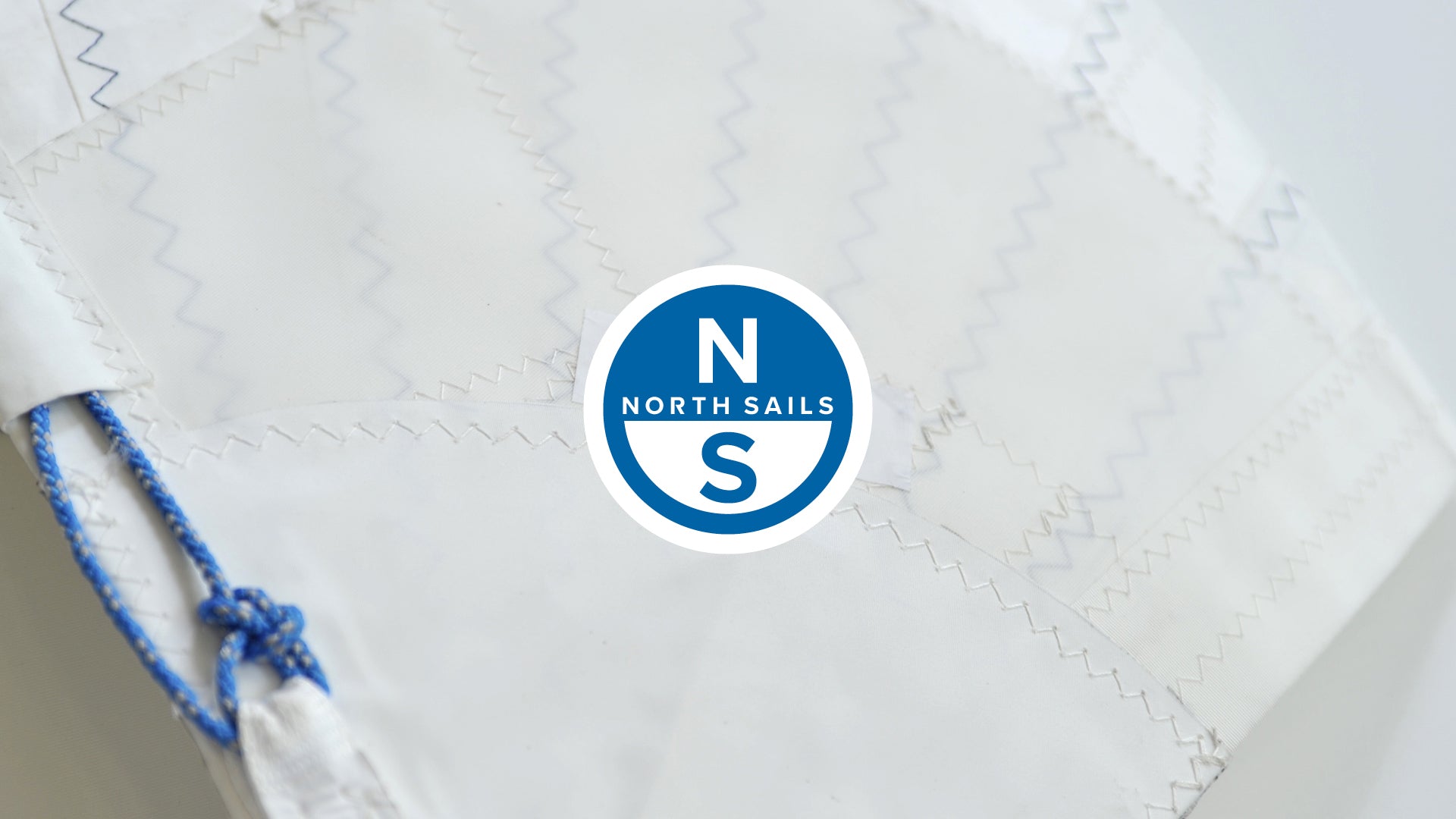
J109 SPEED GUIDE
North Sails class leader Jack Orr answers your J109 speed and boat handling questions.
Who sails a J109?
First built in 2004, the J109 had a successful production run of over 375 boats in North America and Europe. The boat was conceived as a 35-foot racer/cruiser in the tradition of the J35, updated with an IRC-friendly hull. Rigged with furling jibs and a sprit, the J109 is easy to sail and is comfortable for a family on a cruise or racing in a big one-design fleet. A good all around boat, the 109 rates well under most handicap rules and has an excellent race record worldwide. The first generation of owners jump-started class racing, but most boats raced handicap or cruised. In recent years, class racing has had a resurgence as second and third owners have bought the boats to race in a popular one-design class.
The J109 powers up quickly in light air, so it’s important to sail class regattas near max crew weight.
What’s involved in crewing?
Unlike the J/105 , even with a 105-percent class jib, the J109 is quick in light breeze and powers up quickly. To keep the boat on its lines, max crew weight is important for upwind speed.
The boat can be sailed with as few as five crew, but the class allows seven, plus an eighth if one person weighs under 132 pounds. In some major class events, there is a weight limit of 1,213 pounds excluding the driver. Although seven crew seems like plenty of hands, they are all busy!
Racing in class events, you can gain or lose boat lengths in a hurry so it’s important to fill the key positions with solid teammates. Start with a strong bowman who can muscle the chute around in jibes and takedowns. (It’s OK if they are big.) With the addition of inhaulers on the jib sheets, the jib trimmer needs to understand how jib trim affects pointing and mainsail trim. The mainsail trimmer controls the power to keep the boat on its lines; since everyone needs to be hiking, the main trimmer can also keep an eye on the racecourse.
All that being said, the boat is easy to sail and the basics can be learned quickly. Having one or two key crew with some pick-up crew is fine for most weeknight or weekend sailing.
What are three top tips for J109 speed?
Spend time in the boat with a committed core crew. Practice!
Learn proper sail trim and rig tune. It’s critical to keep the boat on its lines and at top speed. Having the crew weight and sails properly balanced wins races.
Prep the hull and rig, clean the bottom, and save your best sails for big events.
What should buyers know when choosing a J109?
Production of J109s ended several years ago. With the resurgence of class racing, used boats are in demand. Most boats are in the $120K - $150K price range.
The boats for North America were built by TPI; J/Boats France built for the rest of the world. Overall quality was good, and the boats are well built. Some of the TPI boats had issues with the keel sump, so make sure that’s been addressed when looking at a boat.
Many boats were used for cruising and have been modified accordingly over the years. Look for boats without extra winches or big modifications to deck layout or keel, as these won’t be class legal. Also, J/Boats built a number of shoal-draft J109s; for racing, you’ll definitely want to buy one with a deep-draft keel.
How many sails are required?
The J109 class allows you to sail with two jibs, two asymmetric spinnakers, and one main. Sails can be changed between races as conditions change. The Light/Medium Jib is generally used in 0 to 14 knots, and the Medium/Heavy has proven fast in as low as 10 knots true wind speed (TWS) in flat water. The A2 spinnaker is good up to 20 knots TWS. The heavier A4 works well in 18 knots and above.
Upwind sails have no limitation on materials and construction, but they do have a minimum weight limit. Spinnakers must be woven nylon and have a minimum cloth weight.
Because boats often come with a large inventory of used sails, many new owners buy a new main, spinnaker, and medium jib for class racing, using the older sails for handicap races or cruising.
Class sail purchases are limited. The first year, you can register two new mains, jibs, and spinnakers. After that, you are allowed one new sail of each type per year. Most owners expect their sails to be competitive for multiple seasons, so 3Di’s improved durability has become a big advantage. Here is a link to North Sails’ current J109 product offering.
J109 Tuning
Jib spreader marks help repeat trim settings.
What are the keys to rig set-up?
Maintaining headstay tension and matching mast bend to luff curve help keep the boat balanced and at the proper heel angle, so adjusting rig tension to match changing conditions is key to sailing fast.
The J109 is set up with a Harken furler as standard, and although it is adjustable, it’s not something you will ever change on the racecourse. Once set, in fact, the headstay is rarely adjusted. Instead adjust the cap shrouds (uppers or V1), diagonals (D1, D2), and backstay to match conditions.
Controlling headstay sag is critical to keeping the boat balanced, especially as the breeze strengthens.
The mast butt should be positioned all the way forward in the adjustment slot, so you only need to set that once.
The J109 Quick Tune Guide includes detailed measurements and shroud tensions for different wind strengths. Shroud tension affects headstay tension and how much the headstay sags under different loads, so it’s very important to get this right.
Jib sheet inhauler positions should be marked on the deck for repeatability.
What other control systems are important on the J109?
Setting up to cross-sheet the jib (and then practicing your tacks) is critical in windy conditions, as is having good leverage on the vang. Marks for setting the jib inhaulers are important. The mainsheet gross tune could use more purchase in heavy air, so make sure the fine-tune has plenty of line available.
J109 Upwind Sailing
How much heel is fast on a J109?
In general, sail the J109 with less than 20 degrees of heel by playing the traveler and feathering in puffs. A skilled driver can keep it flatter, but the most important goal is to maintain a constant heel angle while minimizing rudder movement. If you need more heel to maintain consistency, that’s OK.
Sailing flat is fast, but maintaining a consistent angle of heel and minimizing rudder movement are the top priorities.
Upwind, where does the crew sit?
The boats are a bit stern heavy, so we always work to keep people forward and out of the cockpit. In light air, locate one person forward of the shrouds; in heavier air, bring the forward-most person behind the shrouds to keep weight at max beam. The rest of the crew should sit close together at max beam.
When the wind lightens enough to take someone off the rail, send the jib trimmer to leeward first. When possible, move everyone a half a body width farther forward; the mainsail trimmer will scoot to the front of the cockpit.
A soft shackle easily attaches jib sheets to the clew, allowing sheets and inhaulers to stay rigged during sail changes.
How do you trim the J109 jib upwind?
A key move with the jib is to use just enough halyard tension to keep the draft positioned correctly. New 3Di jibs have the draft naturally forward, so less halyard is needed than with conventional sails. Mark the spreaders and the deck to help your trimmer repeat fast settings.
Tension the halyard just enough to place the draft correctly, and set the lead so that the tell tales break evenly from top to bottom.
As the inhauler pulls the clew inboard, sometimes it will appear that the foot looks too flat, this isn’t always the case. The lead should be set so the tell tales break evenly, these are your guide as to balancing the leech and foot tensions. Make sure the sail has some twist at the top. As the clew gets pulled inboard with the inhauler, it’s easy to oversheet the sail.
In 8-15 knots TWS, the jib is inhauled until the clew is inside the handrail.
Adjust the inhaulers for different wind conditions. In light to medium (8-15 knots TWS), the jib clew should be inhauled until it’s inside the metal handrail. As the wind increases, ease the clew so it trims outside the rail. In very light air , sail with the clew outside the rail as well.
How do you trim the J109 main upwind?
It’s hard to stall the top of the J109 mainsail because the sails are designed with a lot of twist so you can sheet on hard as it gets windier. Even in 8 knots, we recommend stalling the top tell tale 60 percent of the time. The extra leech tension has the added benefit of pulling the headstay tighter, too, minimizing headstay sag.
The J109 doesn’t like much heel. From 11 knots up, our team is fully hiked, and at 13 knots, we’re pulling on backstay and cunningham. The backstay flattens the main well and begins to twist open the sail again, minimizing heel and weather helm. That’s the real trick on this boat: tune the rig so your trim and your backstay work for both sails at the same time. If the headstay gets too saggy and the main gets too flat, you probably don’t have enough V1 and D2 tension.
Vang tension is critical in a breeze. In 8-10 knots, pull the vang snug. As the boat begins to get overpowered, pull it on firm. When using a lot of twist, it’s time for a two-handed pull, bracing feet against the cabin house. For the sake of your boom and mainsail, remember to ease both vang and cunningham at the weather mark.
Because the leech profile is so vertical, even a small change in jib lead location will make a big difference to the sail’s power.
How do you shift gears upwind?
Besides hiking harder when the wind increases, shifting gears begins with moving the jib lead aft to increase twist in the leech. Even a small change will make a big difference.
Other ways to depower: pull on max outhaul, apply backstay as needed, and begin easing your traveler down in the puffs. Don’t hesitate to add a lot of vang tension so you can ease mainsheet instead of traveler; the traveler car rarely moves lower or higher than the bench seats on either side of the cockpit.
Who says what when sailing upwind?
We like to have one person on the rail consistently calling the breeze so the main trimmer can be proactive in keeping the boat upright. Likewise, calling waves allows for better steering (and easing sheets in lighter air). Dialogue between the helm and main trimmer is critical, especially with wheel steering because it is harder for the driver to feel the pressure on the rudder.
When it’s windy, the conversation is usually about increasing or reducing twist in the sails. Is there too much helm and we’re slow? Twist open the leeches. Not enough height? Reduce twist by closing leeches. The best sailor on many J109s is often the main trimmer, because the position requires trimming for the best balance between height and boatspeed.
Adjusting leech twist on both sails is crucial to balancing height and speed.
J109 Downwind Sailing
Downwind, where are J109 crew located?
Keep weight forward, out of the cockpit. Many people stand up, but it’s faster to sit down and keep weight lower. On most boats, the main trimmer is at the companionway and the chute trimmer is at or ahead of the forward edge of the cockpit. All others move forward: in 0-8 knots true wind, put two crew forward of the shrouds; in 9-16 knots, they can move just aft of the mast.
The boat likes to be sailed fairly flat and, ideally, the helm goes neutral. If it’s light enough that you’re sailing VMG angles, move enough crew to leeward for a slight leeward heel.
In running conditions of 10-plus knots, move all crew to weather and sail the boat flat. Over 12, sail with a little weather heel. As soon as control becomes an issue (around 16 knots), slide the crew aft. In 20 knots and above, several crew will be sitting in the cockpit.
How do you trim the spinnaker downwind?
Ease the spinnaker sheet to rotate the sail out in front of the boat as much as you can without it collapsing. The main should be all the way out with the vang soft.
In lighter breeze when sailing tighter angles, the tack line should be all the way down. As the wind increases and you can sail lower angles, the tack will move up as high as the pulpit. This allows the luff to rotate around to weather and get more spinnaker area out from behind the mainsail.
The key to speed is conversation and coordination between helm and trimmer. In light air, we look for an angle where the boat feels good, with slight heel to leeward. One common mistake is to sail too high in lulls and soak too low in puffs. Yes, you do scallop your way down the course, but smooth it out and do it gently. The good guys gain a lot this way; for everyone else, this is one of the best areas to practice and improve.
When the tack moves to leeward of vertical, pull on tack line and sail higher angles.
How do you shift gears downwind?
The key transitions are in 9 to 11 knots, learning when you can sail deep and when to keep the boat sailing higher and faster. The tack line on the spinnaker is a good focal point: If the tack moves to leeward of vertical, pull the tack line toward the pole. If it moves to weather, ease it out up to three feet.
Another way to think of this is that in light air, when sailing VMG angles, the tack line is pulled towards the sprit and the main is trimmed for the angle. In medium air, when sailing deeper, the tack line is eased out. In heavy air, when control becomes an issue, the tack line is tightened again to keep the chute stable.
Another downwind tip is to “fraculate”—reduce headstay slack by trimming in the sheets on the rolled-up jib. This firms up the backstay and transfers the energy in the sails more directly to the hull.
To get to a leeward mark or finish line, you can also sail wing and wing, with the spinnaker on the opposite side from the mainsail. This takes practice and should be reserved for tactical situations, say the last five or six boatlengths of a leg. You can sail lower and just as fast, but don’t try it for extended periods; it’s hard to keep the chute full, and a collapse will lose you distance overall.
When sailing deep, ease the tack line off up to three feet for maximum projection and rotation.
J109 Boathandling
What are your top tips to starting well in a J109?
The J109 has a big keel and rudder, so you can sail pretty slowly before the start and not slide sideways much when you accelerate. However, the boat takes time to get up to speed. Practice accelerating from half speed to full speed before each race to learn how long it will take. Never let the boat stop completely or get too far from the line.
What are the keys to tacking a J109 well?
Tacking the jib is pretty easy because it’s not a big sail, so you only need two trimmers in the cockpit. The other crew members cross over the coach roof to keep their weight forward and give the helm more visibility.
How the trimmers coordinate depends on whether your jib sheet 1) leads to a footblock and a leeward winch, 2) to a footblock and a windward winch, or 3) directly to a cabintop winch.
In light air, the cabintop winch set-up can be handled by the jib trimmer and the next person forward, which has the advantage of keeping weight forward. However, those winches aren’t set up for breezy conditions.
We prefer cross-sheeting to the primaries and having the main trimmer handle the release. Going into the tack, the main trimmer eases the mainsheet fine tune a little, releases the jib, and pulls up the traveler. The jib trimmer is the next person off the rail and trims the new sheet, moving to windward right away rather than grinding away down to leeward. The main trimmer drops in the winch handle and does the final trim as the jib trimmer starts hiking.
Don’t bring the jib in all the way until after the boat accelerates up to full speed. Put multiple marks on the jib sheets to line up with the base of the windward winch (if cross-sheeting); after trimming to the first mark, the jib trimmer hits the rail and the final five inches of jib sheet are ground in by the main trimmer.
What are the keys to jibing a J109 well?
A good J109 jibe is a dance between the rate of turn and spinnaker sheet ease. As the boat bears away, the driver should watch the clew of the chute; when it gets to the headstay, turn more quickly as the new sheet is taken in. If you turn too fast without easing the sheet enough, or if you turn too slow, the chute ends up on the windward side of the headstay.
Especially in lighter-wind areas, many trimmers handle both spinnaker sheets. In more breeze, it’s common to have two sheet trimmers. Either way, it’s important for the bow person (and sometimes others) to actively help the new sheet around the headstay and aft to avoid a twist. Keeping crew weight on the old windward side before the jibe will help the boat turn; after the jibe, move quickly to the new high side to help flatten the boat so it can accelerate.
After a jibe, cross quickly to the high side to flatten the boat and help it accelerate.
In light-air jibes, don’t turn the boat too fast and jibe the spinnaker first. Then the mainsail trimmer grabs all parts of mainsheet and “pops” the main through to keep the upper leech from hanging up on the backstay.
In heavy air, get the main across as quickly as possible, while the boat is at full speed. Otherwise you may have to turn the boat too far, which may lead to a round up as you finish the jibe. Easing the vang a little bit will help.
How do you make a fast spinnaker set?
There are two rules to remember on J109 spinnaker sets: First, the boat’s bow must be at the windward mark before the bow person extends the sprit. Second, to set the spinnaker successfully, keep it out of the water by not pulling the tack line out too soon.
The bow person begins the set by freeing the chute from the forward hatch. Wait to start the hoist until the boat makes its turn. When it’s windy, as the mast person hoists, both the bow person and jib trimmer pull the tack line out to its mark. Then the bow person rolls up the jib.
If a jibe-set is needed, there are two approaches: one is to re-rig the chute on the correct side of the boat and hoist as the boat jibes. The other option is for the bow person to walk the clew around the headstay during the hoist, or even before you hoist.
What are the keys to a good spinnaker takedown on the J109?
Most people douse the spinnaker to windward. Leeward drops make it too easy to shrimp (drop the chute in the water). Either way, turning the boat to a more downwind angle will make any takedown easier.
On a normal windward takedown, unroll the jib before the helmsman bears off and the trimmer eases the spinnaker sheet. The bow person pulls (aka “tractors”) the clew around to the windward side of the jib as the halyard starts to come down. One crewmember stands below and pulls the chute through the forward hatch. If it’s windy, don’t blow the tack line too soon to keep the chute out of the water; wait until the spinnaker is collapsing and at least two crew have a good grip on the material.
On a leeward takedown: the bow person grabs the lazy sheet and, with the crewmember below, pulls the chute under the jib and down the hatch. On these drops, don’t release the tack line until you’re able to pull the spinnaker straight down.
What are the most common takedown mistakes?
The most frequent error we see is simple: the spinnaker sheet isn’t eased enough for the bow person to pull the chute around the jib. The second most common error is also simple: if you do shrimp your kite, stop the boat completely before trying to pull the sail back aboard.
How do you recover from a broach?
Most broaches don’t last long; once you ease the spinnaker sheet, the boat will pop back up. Ease mainsheet and boomvang as you start to broach, and your recovery may be immediate.
What J109 best practices do you recommend?
Set daily objectives and evaluate after sailing, so you can get better every day.
Identify crew responsibilities.
Mark everything so you can duplicate settings, especially jib leads and sheets.
Practice tacking and jibing; choreograph movements so each crewmember knows what to do.
Document rig tune and settings.
What’s the coolest thing about the J109 class?
This class is very friendly and well-organized. (See J109 class website) You’ll find some really good technical sailors who know about rig tune and are willing to share knowledge. We recommend new people find a more experienced buddy and ask if you can sail together at events. Watch, observe, ask questions, and you’ll improve steadily.
READ MORE
READ MORE

NORTH SAILS HOMENAJEARÁ A SU FUNDADOR EN LA SUPERYACHT CUP
NORTH SAILS HOMENAJEARÁ A SU FUNDADOR EN LA SUPERYACHT CUP
North Sails anuncia la creación de un nuevo premio para la Superyacht Cup de Palma.
El primer North Sails Boat of the Day Award será dedicado a la memoria del fundador de North Sails, Lowell North
El North Sails Boat of the Day Award será entregado al superyate con mejores resultados en la jornada del viernes, 21 de junio. En esta primera edición, North Sails dedicará el trofeo a la memoria de Lowell North, recientemente fallecido. El fundador de la velería es considerado un referente mundial que cambió la industria velera.
Lowell North fundó North Sails en 1957 con un revolucionario enfoque de metodología científica para desarrollar velas más rápidas. Una filosofía que cambió la fabricación de velas para siempre y que continúa siendo la base sobre la que la firma explora los límites de la tecnología y el diseño, resultando en productos de última generación para superyates.
En opinión de Tom Whidden, director general de North Technology Group: "North Sails cuenta con una larga y fructífera relación con la Superyacht Cup, evento en el que equipamos a muchos barcos y trabajamos con sus equipos para conseguir puestos de podio. Queríamos crear un premio que nos ayudase a mostrar el éxito en la flota de superyates, y tras la pérdida de Lowell North este mes de junio, pensamos que dedicarle el premio sería una buena forma de reconocer su legado y celebrar su contribución al deporte. Estamos deseando entregar el premio al ganador en memoria de un gran hombre a quien debemos tanto". Whidden navegará en la Superyacht Cup a bordo del 92 pies estadounidense Bequia.
El trofeo es un precioso decantador de cristal en edición limitada con cuello de plata de ley y acompañado de vasos con base igualmente de plata, que el ganador podrá disfrutar de por vida.
En tributo a la memoria de Lowell North, el premio irá acompañado de un gorro conmemorativo para cada miembro de la tripulación emulando al que el fundador de North Sails vestía siempre, y que se convirtió en todo un icono de este gran hombre.
El North Sails Boat of the Day Award será presentado el 21 de junio por Tom Whidden y Quinny Houry, director de North Sails en Palma.
La regata Superyacht Cup Palma 2019 se celebra en Palma los días 19 a 22 de junio. North Sails ofrecerá su servicio de recogida, reparación y entrega de velas durante el evento a través de sus instalaciones de Palma y Lluchmajor, la mayor velería del mundo especializada en superyates.
READ MORE
READ MORE

GIRL POWER ON THE MELGES IC37
GIRL POWER ON THE MELGES IC37
A Weekend of First Experiences With A Positive Reflection For The Season Ahead
Amina Brown (runners), Katja Sertl (trimmer 1), Cory Sertl (co-skipper/tactician), Meredith Carroll (mast), Hollis Barth (trimmer 2), Colette Fortenberry (with the La Croix in her hand* float, squirrel, assistant), Hillary Noble (bow), Kathy Kirk (pit)Going into the weekend, I had no idea what to expect. With a new crew and new fleet, there were bound to be unplanned obstacles that we’d encounter, but I was so unbelievably excited to share my first racing experience with this crew! Our team at the New York Yacht Club 165th Annual Regatta had 11 total crew members – three were males and eight were females, one of which was under 16 years of age. The Melges IC37 Class Rules require mixed-gender crews, which meant every team had at least two women on board this weekend, and most teams had more. But we were the only team with such a vast female majority. It made for an enjoyable and refreshing experience. What also made it special was that each crew member brought a particular set of skills to the program, making it a positive learning experience for all of us. Our main goals were to be safe, have fun, figure out the boat, and learn together. We accomplished all of the above!
📸 Melges Performance Sailboats
Although it was looking to be a sporty and challenging weekend for our team, we didn’t let it get the best of us. We were there to give it our all and come away from our experience as better sailors, together. Friday was the Around-the-Island Race, where we headed South upwind rounding the bottom of Jamestown, RI, where conditions were wet and wild as we sailed out of Narragansett Bay. Surrounded by boats of all sizes made things exciting, watching all the crews moving about the boats, working hard to keep the throttle down, and maintain control. Turning the corner around the southern tip of the island gave us a great show, watching the faster boats peel down like freight trains, and the groans of the winches as the grinders eased off. We rounded and got our bearings for the leeward mark. At first, we were at a beam reach, so we had a late hoist, but once the kite was up and we were in the pressure, the fun really began. Shotty puffs came down in streaks, which made it challenging for our female trimmers, but they did an excellent job communicating with each other to keep the wheels rolling. We hit 18.8, and that was an absolute thrill! We may have had a few wipeouts, , but I can’t say it wasn’t fun! After we cleared the Jamestown Bridge, we could see the leeward mark, and it was fast approaching. Our female tactician was great at communicating the game plan with the crew, and we set up for a squaggle-down to get the kite in. With the retriever line, it is all about angle-off the wind and timing. Our female pit crew did a fantastic job watching us at the bow before we pulled the kite around to windward, making it as easy as possible in the 20+ knots. Our squirrel was our 16-year-old local rockstar Colette Fortenberry. She had a great attitude and was excited to help any way she could. After the rounding, it was an uphill race under the Newport Pell Bridge to the finish off of Fort Adams. The rest of the weekend was much of the same, but with windward-leeward drag races which was great practice for our crew work.
Overcoming obstacles as a team, celebrating those little moments of glory—I think that’s what the Melges IC37 class was made for. Teamwork. Corinthian sailing at its finest, making new friends and learning to be better sailors. The IC37 is truly a boat for anyone, from the small boat one design sailors to grand prix fanatics. It’s the perfect in-between with all the one design simplicity but has that grand prix fun and exhilarating edge that other classes can’t match. Last weekend was just the beginning for our team, but all in all, it was a great place to start and get our bearings. We may not have won the regatta, but in our own way, I feel like we still won the weekend.
📸 Melges Performance Sailboats
📸 Melges Performance Sailboats
By Hillary Noble, Republished from Scuttlebutt & Melges IC37 Class Association
READ MORE
READ MORE
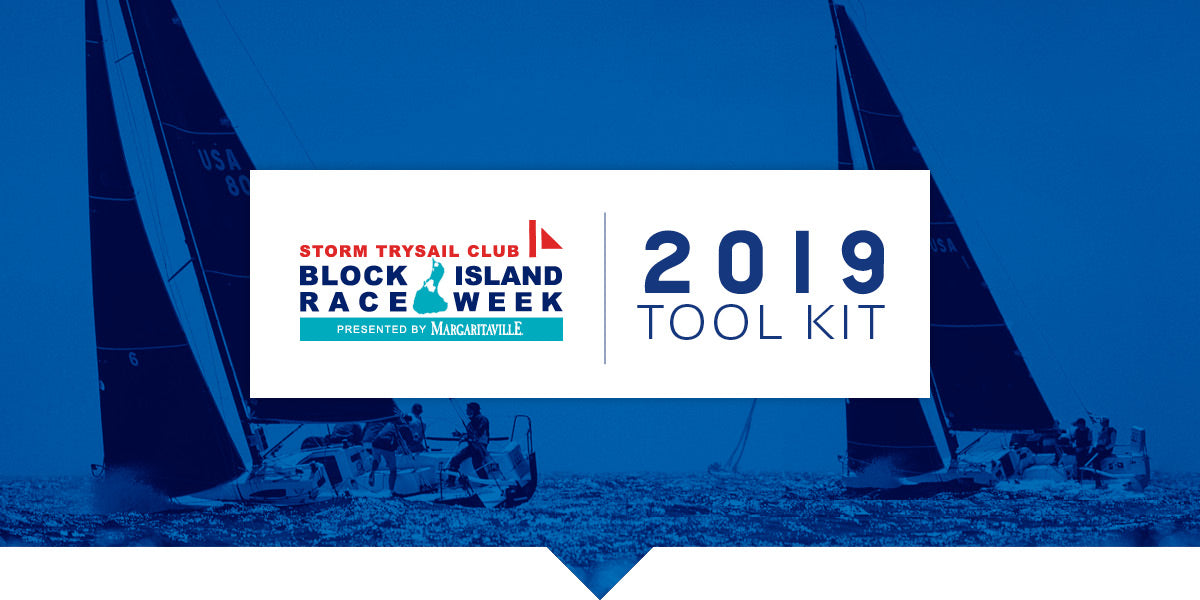
BLOCK ISLAND RACE WEEK TOOL KIT
Tools To Get Your Team Race-Ready
Block Island Race Week is just around the corner. Our experts created this Tool Kit to help your team prepare for racing in one of the most idyllic sailing destinations on the east coast.
Navigating Island Waters
Long time Block Island Race Week participant and local expert Todd Berman gave us his tips and tricks for dealing with the ever complex waters around Block Island.
Onboard Communication
Onboard communication for yacht racing is a key factor for performance, no matter what type of sailing. We have some suggestions to keep your boat moving through the water and around the corners more efficiently with better communication.
Fine Tune With North
Find your groove. Get your numbers. Be confident in all wind conditions. Here are the North Sails Tuning Guides for your boat.
J88 | J105 | J109
Register For Free Daily Weather Forecasts
North Sails and Gowrie Group have partnered up with our expert friends at Sailing Weather Service to provide complimentary daily weather forecasts. Register now and receive these daily updates sent directly to you each morning.
Maintaining Speed Throughout The Range Of Conditions
Whether it's your first Block Island Race Week, or you are a veteran, it's hard to anticipate the ever-changing conditions. North U Expert Bill Gladstone explores Angle of Attack in moderate air trim and also techniques for de-powering in heavy air and powering-up in light air.
READ MORE
READ MORE
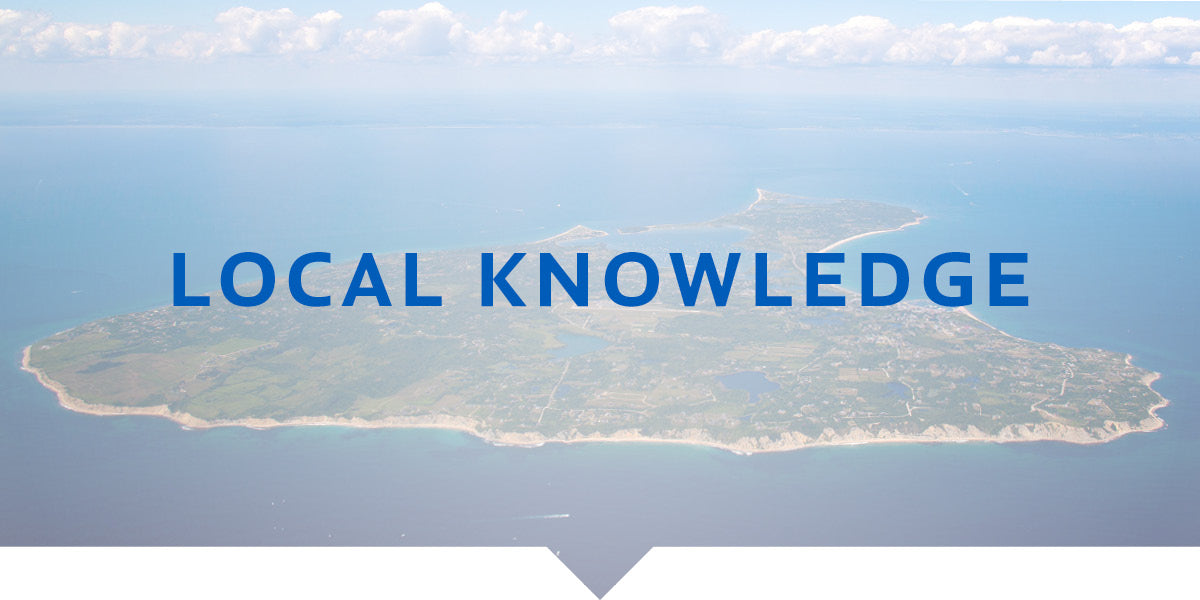
BIRW LOCAL KNOWLEDGE WITH TODD BERMAN
TIPS FROM EXPERT TODD BERMAN
Todd's Take On Block Island Race Week And What You Should Expect While Racing
We talked to local expert and North U. Coach Todd Berman to get his perspective on sailing at Block Island Race Week. Having sailed his first race week as a thirteen-year-old back in 1977, and sailed in almost every race since, who better to give us some local tips on navigating such a complex island with tricky tidal and current related factors you need to think about ahead of time.
Block Island – What Makes Sailing In These Waters So Unique?
Block island is an exercise in versatility. It’s the nature of June sailing in New England. The first thing I think about when preparing for Block Island Race Week is that you need to have a fundamental understanding about the tidal picture of how the water flows around both sides of the Island. Block island is in a very interesting position, where to the west of the island, most of the water flows in a north/south axis – this is the water between the southwest corner of Block Island and Montauk. Then to the north side of the island where there's the buoy, 1-B.I and ultimately Point Judith, where all the water that is flowing through that gap and is flowing in an east/west axis. Essentially, you have this weird phenomenon where the water splits in two different directions, one going north/south, one going east/west.
When you come into the the Salt Pond from the sea, and you get that first whiff of the beach plums. It, to me, feels like I'm home. Block Island Race Week has become like a totem in my life.
Understanding where your racing circle is, will go a long way in helping you gauge what is likely to happen on your particular course area with the tide. That’s a really important piece of advice I cannot emphasize enough for this regatta.
There are a couple of fundamental overarching things that I do when it comes to the tide at B.I. There are lobster traps all around. One of the practices that I think is essential at race week, A-L-W-A-Y-S, always, make an observation and a mental note about the direction of the tide. From your experience sailing anywhere with tides and currents, and what you believe to be experiencing with observations of fish traps, lobster buoys, anchored marks or the buoys on the race course -- are all the same. All of these will tell you what the tide is doing, and at Block Island, you need to observe these indicators all the time.
The Infamous Around The Island Race – Tips & Tricks
This is an extremely difficult race and sometimes tends to be the race where people’s week fall apart. If you're really good at Windward Leeward racing and you've had great success at Charleston Race Week or Key West Race Week, where it is Windward Leeward racing, Block Island trips you up when now you've got to race around this island. Many teams go into the week with the great finishes, only to be caught out by the Around The Island Race – the pothole waiting to blow out your tire. There are six key points to talk about for this race.
These points are founded upon going counterclockwise in a wind direction between 205 and 230 degrees true wind direction. On any given day, that's the rough range of wind direction.
First Beat Of The Race
Prior the race you have to know what the tidal conditions will be at your next mark. The navigator and the tactician should have a discussion about knowing the bracket of time where you'd likely arrive at a mark so that you can know what the current will be doing there. What the current does at the major rounding points in this race typically defines your tactical and strategic norms.
On the first beat, the conventional wisdom is to start on starboard and sail closer to the island to pick up more wind velocity. And in a flood tide, the incentive to stay to the left of the straight line, to go closer to the island is stronger. Right at the end of that leg, R-4 is the big bell buoy that you're really setting up to round, and that's typically where you go from beating to now either an A-sail or a spinnaker. The last 20% of that first beat can get really dicey just from a wind velocity and sea state perspective because, for the very first time you’re heading out into almost open ocean there. On the flood tide, you almost have to approach R-4 from the port tack lay line.
On the ebb tide, the starboard tack lay line is much more forgiving. If the water is flowing south, you can get out into more open water and you'll be fine on your approach. But on the flood, it's a significantly different perspective.
Rounding R-4
This leg is based on traffic management and not getting too high, or too low. You’ve rounded R-4 and now you’re going to reach along the south end of the island. The danger of sailing low of the rhumb line and getting too close into the island is that the wind lifts up over the island and you can get lighter winds in shore. However, there is also a risk about getting too far offshore to the south of the rhumb line because as you get further east, you have to sail lower, and it's slow. This is a leg where I like to just go fast as close to the rhumb line as I can. Traffic management is a real challenge on this leg because the boats are still pretty compressed and it's hard to find clear lanes of wind.
Next Turn –Southeast Corner
This is typically a jibe from starboard broad-reaching to port-reaching, which takes place at the southeast corner. The exact tactics of the southeast corner are typically determined by real-time conditions and where the markers are .The Storm Trysail club place one or more inflatable orange markers out there. The southeast corner is not a government mark rounding, it's an inflatable mark that's put out there, and depending on where that inflatable is placed, it's just good sailing, there's no magic, formula for the southeast corner.
*be careful about getting too far east because the wind can get lighter out there.
Racing toward Port – The Longest leg
This is the longest leg of the around the island race where you’ve turned the corner and are on port. This is a 12-mile leg so it’s very important that you have the right spinnaker up. We typically change to the reacher before we do the final jibe onto the long leg, and actually sail the last 1% of the previous leg with the wrong spinnaker. This means that when we jibe onto the long 12-mile leg, we have the right spinnaker up and don't have to do the change while we're reaching hard.
For this long leg along the east end, you have got to know your predicted apparent wind angle way ahead, you've got to have an advanced prediction of that so you can know what spinnaker you want. You will also need to know what the tide is doing at 1-B.I, which is the next mark you're going to. This is the single most important tide management leg.
If you're doing that stretch in an ebb tide, on the last 1/3 of the leg, which means the water is flowing to the east, you can never, let yourself get swept to the east side of the rhumb line. In addition to that, you need to expect that the velocity of eastbound current you will encounter increases dramatically as you approach 1-B.I. You could be two miles away and have a knot on your port beam, but when you're 200 yards way, you could have three knots on your port beam. Peak velocity at 1- B.I can get close to three knots
Riding The Tide On The Longest Leg
In an ebb tide, eastbound flowing water, you can sail above the rhumb line and ride the sand spit down, and almost have a trailing current for the last part of that leg. You sail more distance, but at the end you come in with fair current behind you and, that's great. You don't sail down the rhumb, you sail a great circle to the west side of the rhumb line. That's what I like to do in an eastbound ebb tide.
In a westbound, flood tide, it's not as important not to get swept east because as you get out further north, you have all this water carrying you, west and you approach one BI with fair current pushing you up to the mark. If the water is flowing west at 1- B.I, it's a much easier proposition. You don't want to get caught high of the mark fighting down into that current.
Rounding & Exiting From 1-B.I
Now you're heading up, and your beating again, and it’s in the ebb tide. People tend to tack pretty quickly onto starboard to get into shallower water between 1- B.I and Block island under the normally correct theory that current runs weaker in shallower water. However, the shape of block island is such that the water sort of piles up. As the water that's flowing east hits the part of the island between the salt pond and the end of the sands spit at the north light, it gets up. There is a lot of current is being focused into that little shallow spot.
You want to stay on port for a fair bit of time until you can really quite easily clear all the frothy water that is flowing over the sand spit at this point. Lots of boats tend to tack on to starboard to get into the shallower water right away. And that rarely works.
Take the scenario and the tidal scenario and reverse it. Let's say it's a flood tide, so the water at 1-BI is flowing to the west. This is particularly fun when the wind is strong from the southwest. You have tide against current, and what I try to do is stay on port as long as I can, and if you go maybe three or four minutes on port past 1-B.I, you get into extremely deep water , approx. 100 feet or more. You will notice that the sea state gets huge. So again, a little bit counter intuitive, when you get into that really dramatic sea state, you know that you're on the strongest positive current escalator. Even though the waves are huge and you might be pounding a little more from that sea state, which feels slow, you should remember you're on this huge tidal escalator pushing you toward the finish.
One of the things that you can really see is the sea state change as you exit 1-B.I. and you're heading towards the west. You can just watch the sea state build and build and build, and then before you know it, you've hooked into that beautiful tidal river to take you to the finish.
READ MORE
READ MORE

2019 ROLEX GIRGALIA RACE RECAP
A MUST-DO SUMMER EVENT FOR CLIENTS AND NORTH SAILS EXPERTS
Our Lofts In France And Italy Combine Resources To Be On-hand And Onboard For This Fun And Demanding Week-long Event
📸 ROLEX/Carlo Borlenghi
The 67th edition of the Rolex Giraglia Cup finished last weekend and North Sails powered top finishers across the numerous classes, including overall winner Caol Ila R. Originally a 241-mile offshore race, this Mediterranean classic attracts hundreds of sailors and has grown to include both inshore and offshore racing. While the racing is always competitive on the water, the fun starts once the boats hit the dock at the end of the day.
Boats sailing at the 2019 Rolex Giraglia range in size and the event attracts a mix of professional race crews and amateur sailors. Maxi 72 Caol Ila R won big this year, taking home the ‘Trofeo Challenge Ruota Dentata’ for the best corrected time in the offshore race, and the ultimate honor of being named overall winner. Caol Ila R, with owner Alex Schaerer, is one of the many teams who have added a new North Helix sail to their inventory. Developed through North’s specialized Load Sharing Technology, Helix is an innovative self-supporting structure, which delivers a versatile, fast and forward-projecting reaching sail. Caol Ila R’s Rolex Giraglia win follows closely on the heels of their class win at the Rolex Capri Sailing Week.
📸 ROLEX/Carlo Borlenghi
Additional North Sails clients in the ORC Racer class also found success during the event. George David’s Rambler 88 was the offshore winner in real time to claim the ‘Trofeo Levainville’. Rambler 88 also won the ‘Beppe Croce’ for the first boat to round the Giraglia rock. Sir Peter Ogden’s Jethou sat on top of the leader boat in the Inshore IRC O Racer Class.
“Historically, these Code Zeros were light upwind sails but the Helix sail is more versatile. I’d want the Helix sail for reaching every time.”
Like Caol Ila R, Jethou has unlocked a new level of performance with the new North Helix sail, which eliminates the need for heavy torque cables. An early adopter of the product, Jethou took delivery of the Steve Calder designed sail in 2018. According to the trimmer Joey Newton, Helix has become the team’s go-to reaching sail. “We use this sail as a catch-all reaching sail,” explains Newport. “Historically, these Code Zeros were light upwind sails but the Helix sail is more versatile. I’d want the Helix sail for reaching every time. The way the whole sail loads up and that it can be trimmed easily using small tack line adjustments are all positive.”
Rolex Girgalia served as the third event of The Nations Trophy Med League 2019. North Sails-powered Swans outperformed their competition, sweeping every podium position in the Club Swan 50, Swan 45 and Club Swan 42 classes. ClubSwan 50 Stella Maris placed first in the ORC Class and won the coveted ‘Nucci Novi Challenge Trophy’. As a team new to the ClubSwan 50, owner August Schram was pleased and somewhat surprised with Stella Maris’s success. “We started this campaign less than a year ago at the Copa del Rey Mapfre,” commented Schram. “In under a year we have won a major race, which is way above anything we could have imagined.”
📸 ROLEX/Carlo Borlenghi
READ MORE
READ MORE

DOUBLEHANDED TEAM WINS THE ANNAPOLIS TO NEWPORT
DOUBLEHANDED TEAM WINS ANNAPOLIS TO NEWPORT
Taking Home Line Honors & Sportsmanship Trophy
📷Will Keyworth
Sailing the innovative 32-foot Beneteau Figaro 3, Laurent Givry and Sidney Gavignet raced from Annapolis to Newport in just under three days. They say nice guys finish last, but for the 2019 Annapolis to Newport Race, Laurent Givry and Sidney Gavignet won line honors over the entire 23 boat fleet - and they were also awarded the C. Gaither Scott Trophy for Sportsmanship by Annapolis Yacht Club's Race Committee.
"It was totally unexpected," Laurent says, still digesting his quick transition from self-described "regular guy" to a name in the week's sailing news. "I was quite shocked, but very, very happy, obviously."
Laurent grew up sailing on the south coast of France and moved to the United States in 1991. He took delivery of his Beneteau Figaro 3, La Défonce, in the fall of 2018. Over the winter, while North Sails designers in France were doing their homework and testing new designs to prepare for the professional Figaro circuit, Laurent told North Sails Annapolis expert Will Keyworth that he wanted to buy the new sail package. “To me it was important that I am part of this batch,” Laurent explains, adding that his new upwind inventory is 3Di RAW. “My boat is exactly to the rules for the class. I buy everything like the class Figaro. So when they make a bunch of sails for the Figaristes in France, they make mine too. Exactly the same.”
The new mainsail is much flatter, he says. “The shape of the gennaker is much flatter as well. And the clew is much higher on the new A2. I’m very happy with my new set of sails, and also happy they were designed by a French designer. Will did everything right for me, so I’m very grateful.”
Laurent gives full credit for the line honors victory to teammate Sidney Gavignet, a retired professional on the shorthanded sailing circuit. “Sidney is the best person. Because we are French, we have a very close connection, and I learned from him to be a better sailor. I was always trimming my mainsail much too open on the top. Now I will definitely take a reef instead of twisting more.”
The team at North Sails has also been a big help, he says. “Anything I need, they do it. I ask for something, it's done. I always buy my sails from North Sails, because I have a very good service.”
📷Will Keyworth
And there’s plenty more to learn. “I want to become better, I want to learn all the time. The day that you say that you’re good, it’s over. Do I put all myenergy into it? Yes, no question about that. I'm doing my own tuning, doing everything myself. I love it, you know, so I'm really into it 100 percent, no question about that. This is who I am as a person—I don’t do stuff halfway. Go full in, or nothing.”
While resting up between the Annapolis-Newport finish and the start of the New York Yacht Club Annual regatta, Laurent’s made several new friends. “I'm meeting lots of very famous sailors. And those guys are like me, they’re regular guys, even though they’re very famous in the sport. They’re very keen to share their experience. They teach me, they tell me tricks. Steve Benjamin, I met him two years ago. I have a few beers with him, we have a great laugh. Next thing you know, he’s sending me an email with all the tricks, all the current. And I'm a nobody! It’s super cool,” he continues. “It’s like in a movie.”
What’s next for Laurent, Sidney, and La Défonce? “There is great news—we’ve been invited by the Chicago-Mac to go compete there. Everything is going like in a dream, like in the movies!” he repeats. The boat will be trucked to Chicago, after a careful rig check and thorough cleaning; “I have salt everywhere.”
“I'm a better sailor today than I was a year ago,” Laurent concludes.
“It’s a great sport. I’m a regular guy, maybe not a beginner anymore, but I am not a big shot. My goal is to sail with very, very good sailors. So I can progress. This is what I want to do.” Nice guys can sometimes finish first after all.
📷Will Keyworth
READ MORE
READ MORE
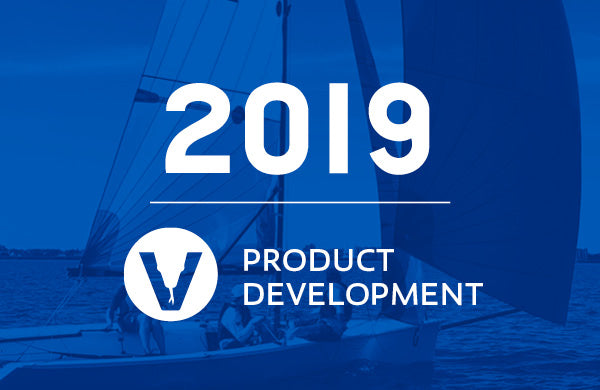
VIPER 640: 2019 PRODUCT DEVELOPMENT
VIPER 640: 2019 PRODUCT DEVELOPMENT
New Class Leader, New Mainsail, Many Upgrades
When it comes to finding extra speed, extra durability, or better usability for our products, North Sails is never satisfied. That’s why we’ve made important upgrades to our Viper 640 sails that will give you a better sailing experience as well as an advantage on the race course.
New Class Leader
J/22 World Champion Jackson Benvenutti is the new Global Viper 640 class leader for North Sails. Jackson won the 2017 Viper North American Championship sailing with Marcus and Andrew Eagan, and has wins in many one-design classes. “While Zeke Horowitz is sailing in multiple classes, we felt it was important to have Jackson dedicated to the Vipers, a very important class for North Sails,” said Tim Healy, North Sails One Design President.
Jackson will attend the Summer Regatta at the Mobile Yacht Club and the Weatherly Regatta in Gulfport before heading to California for the Worlds in August. After that, he’ll sailhe 2019/2020 Sarasota Winter Series.
New Mainsail Cloth
Our sail designers have recommended a new cloth for the championship-winning M-7 mainsail. We are upgrading the cloth to the North Sails exclusive Xi-18 laminate, which holds its shape longer than the current Pentex®, improving both durability and performance. The new M-8 main features the exact same shape as the M-7, no tuning changes are necessary.
Recent Sail Upgrades
We have also made three improvements to the Viper sails: :
Self-attached clew blocks keep the clew from twisting when weather sheeting.
Adjustable gaff batten
Extended bolt rope to eliminate pre-feeder snags when adjusting cunningham
Enjoy your Viper sailing season! Contact Jackson with your Viper 640 questions.
📸 Peter Crawford
READ MORE
READ MORE

UK NATIONALS VICTORY WITH G-3R SAIL
UK NATIONALS VICTORY WITH G-3R SAIL
North Sails Clients Take Over The Podium
Streaker UK Nationals Champion, Martin Penty 📸 Karen Langston
The Streaker UK Nationals brought of a mixed bag of conditions at Portland Harbour, with Martin Penty claiming the title using North Sails G-3R sail. Congratulations to all North clients, who took the top four places with the G3-R and G3-L sails performing well and winning every race. With a healthy 31 entries, the regatta was held at the 2012 Olympic venue, Weymouth and Portland National Sailing Academy (WPNSA) which offered fantastic facilities.
Friday was windy but three races were sailed. Saturday was gusting up to 40 knots so racing was cancelled and Sunday was very light, approximately 3-6 knots. Martin Penty and Steve Blackburn (first and second overall) had near untouchable boat speed in these light conditions on Sunday, both using North Sails G3-R sail.
Browse our range of Streaker sails or talk to Class Expert, Thomas Gillard.
📸 Karen Langston
Tom Gillard 📸 Karen Langston
Steve Blackburn 📸 Karen Langston
Tom Gillard 📸 Karen Langston
Chris Jones 📸 Karen Langston
READ MORE
READ MORE

NEW S-5 STEALTH MAINSAIL
NEW S-5 STEALTH MAINSAIL
The Powerful And Versatile Go-To Sail
📸 Brett Hord
The secret is out… the new and competitive North Sails Stealth S5 Mainsail can now been revealed having already been successful for top Paper Tiger sailors, Derek Scott and Hayden Percy. The sail helped Scott, North Sails Paper Tiger Class Expert, win the 2019 New Zealand Paper Tiger Nationals and Percy win the 2019 Paper Tiger International Series in Napier.
Throughout the summer, Scott has been testing the new-shape mainsail which has been developed from the success of the S-4 shape. “It has more power in the light, but you can still flatten it off in heavier conditions. It’s going to be the go-to sail for all Paper Tiger sailors,” he says.
The sail is made from the same Contender Max sail cloth used for easily Stealth designs, but has an improved corner patch to reduce wear and fatigue in the tack and clew areas. It is also lighter than earlier designs.
As well as being lighter than earlier designs, the new S-5 Mainsail has an improved corner patch to reduce wear and fatigue in the tack and clue areas.
Scott has raced the sail in a mix of conditions, including the 2019 Nationals at Wellington’s Evans Bay Yacht Club where the fleet faced 10 to 30 knots. Scott achieved first and second place in all eight races, becoming the 2019 Paper Tiger National Champion. Former National Champion, Hayden Percy, then used the sail at the International Series over Easter. With a mix of Australian and Kiwi boats, Percy took gold, proving himself in the light conditions and Scott took silver.
“Last year when we went to Melbourne for the same event, we found we had more speed than the Australians, but since then we’ve sold numerous North S4 sails over there. Skippers using that sail finished in the top seven positions at the Australian nationals.”
This year, 10 of the Australian teams were using the North S4 for the internationals, but the Kiwis had their new weapon which proved much faster — the S5. The international was sailed in very light, tricky conditions, which made it difficult for the heavier Australian crews, but throughout the summer season, the S5 has consistently proven itself to be a high performer.
Scott, one of the lighter sailors in the class, was keen to develop a new sail since starting sailing the Paper Tiger two years ago. “I could see that there was a need for a more powerful sail to cover the heavier weight range of the sailors,” he says. “We started developing a deeper sail, and then after testing, we found it was working well for all sailors of varying weights. We began designing the new S-5 for heavier sailors, but it turned out to be a good all-round sail for everyone. It can still be flattened off easily while also creating more power when needed.”
“We began designing the new S-5 for heavier sailors, but it turned out to be a good all-round sail for everyone. It can still be flattened off easily while also creating more power when needed.”
Learn more about the S-5 Stealth Mainsail or talk to Class Expert, Derek Scott.
📸 Brett Hord
📸 Brett Hord
READ MORE
READ MORE
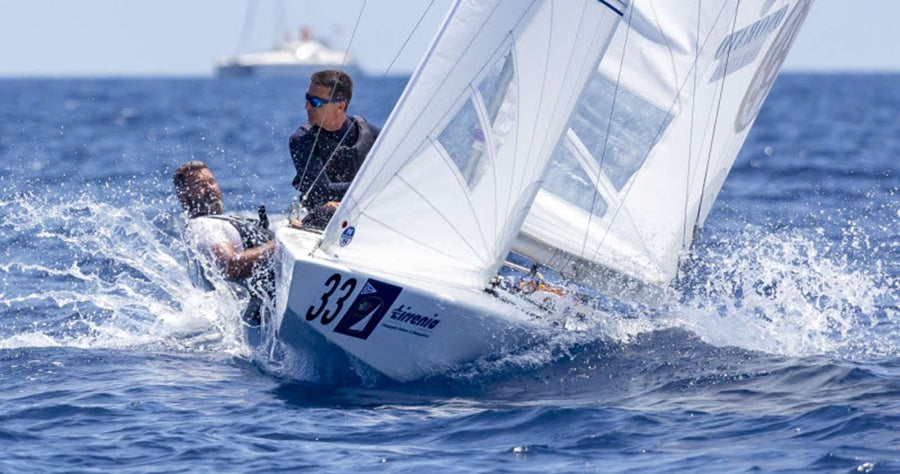
ENRICO CHIEFFI NAVIGA A PORTO CERVO CON VELE NORTH SAILS
ENRICO CHIEFFI NAVIGA A PORTO CERVO CON VELE NORTH SAILS
Il campione del mondo star del 1996 torna in campo nell’affollato mondiale della Costa Smeralda.
📸 Borlenghi
Parte in questi giorni a Porto Cervo il Campionato del Mondo classe Star, la nota regina dalle barche a chiglia. L'evento è organizzato dallo Yacht Club Costa Smeralda in collaborazione con l'International Star Class Yacht Racing Association (ISCRYA). Tra i 65 protagonisti che arrivano da 20 nazioni spicca tra gli italiani la presenza di Enrico Chieffi, uno dei migliori talenti della vela italiana che partecipa con uno spirito Corinthian con il prodiere Manlio Corsi.
Chi è Enrico Chieffi? L’inizio della sua favola è a Marina di Carrara, dove lui e il fratello Tommaso cominciano a navigare assieme. La prima vittoria è il campionato del mondo classe 470, poi a cascata arriva tutto il resto: altura, America’s Cup, Olimpiadi. Ma soprattutto nella carriera di Enrico conta la stella d’oro che decora la sua randa, bel ricordo della vittoria del campionato del mondo Star in Brasile a Rio davanti a Mark Reynolds e Torben Grael . Enrico Chieffi, dopo anni di vita da manager all’interno di Nautor’s Swan ha scelto di tornare in acqua per questo mondiale che inizia domani a Porto Cervo, un evento che torna dopo 30 anni, unico per partecipazione e spettacolo. Ecco le sue risposte e le sue motivazioni prima della partenza.
Enrico come mai questo ritorno in Star?
"Puoi anche mettere da parte le passioni, le puoi sopire, ma rimangono tali e prima o poi tornano. In realtà ho continuato a navigare in Star, soprattutto con gli amici di Viareggio dove c’è una piccola flotta. Quest’anno è una anno ricco per l’Italia, con gli europei (vinti da Robert Scheidt a Malcesine sul lago di Garda) e il mondiale di Porto Cervo. Con la mia stella d’oro posso esercitare il diritto a partecipare (wild card) senza selezioni. Ora che la classe è uscita dal circuito olimpico è molto più umana, la partecipazione è meno intensa e ci sono tanti appassionati come me. Tengo a dire che non sono più un professionista …. Il mio allenamento invernale è stato andare a sciare tutti i week end".
Come sei arrivato a scegliere vele North per la tua Star?
"Quando ho deciso per questa stagione ho comprato tre giochi di vele diversi tra cui uno North Sails. Avevo bisogno di capire in che direzione era andata l’evoluzione delle vele in questi anni, per partire da dove erano arrivati gli altri. Ho trovato qualità e vele fatte molto bene. L’evoluzione per la Star è stata principalmente legata, rispetto ai tempi dei miei risultati, dalla limitazione del peso massimo dell’equipaggio, che non esisteva. Io e Roberto Sinibaldi che eravamo in linea con il peso dei primi dieci migliori al mondo pesavamo 214 kg, ora il peso massimo non supera i 200 kg. Una quindicina di kg in meno fanno una differenza enorme sull’assetto della barca, di conseguenza tutti i materiali sono studiati per questo peso inferiore".
Quale gioco hai scelto?
"I tre giochi erano tutti composti da belle vele, ma le North Sails si adattano meglio al mio modo di regolare la barca, con il sistema albero e sartie piuttosto rigido. Allora avevo messo a punto un sistema che mi consentiva di andare molto forte, mi è rimasto quel modo di andare in barca e le North mi sono piaciute per come si adattano a questo mio modo di navigare. E’ un prodotto molto curato nei minimi dettagli".
Il tuo è un gioco vele standard?
"Diciamo la verità: un ‘amatore’ come me non chiede nessuna personalizzazione, compra quel che è disponibile. La Star è talmente malleabile che puoi raggiungere con tutte le regolazioni che vuoi con quello che hai. In Star trovi i più grandi campioni di tutte le generazioni e di tutte le provenienze: vuol dire che ha qualcosa di magico ed è il risultato del fatto che la barca è cosi sensibile e raffinata. E’ una barca a chiglia relativamente lenta e fare all’interno della flotta giuste tattica e strategia è un’arte: si gioca al vero gioco della vela".
Enrico, Nautor’s Swan ha appena lanciato il nuovo 36, cosa vi aspettate?
"Anni fa abbiamo scelto di realizzare barche da regata di alte prestazioni, che hanno riposizionato Nautor’s come marchio. Continuiamo a realizzare delle barche da crociera veloce, dove abbiamo fatto quasi un passo indietro verso barche più confortevoli. Il 36 completa la linea verso il basso e risponde alla nostra visione legata alle regate one design di alte prestazioni che culmina con il Nation Trophy di Palma dove quest’anno avremo oltre 40 barche. Tanto per indicare qualche numero il 36 in poppa raggiungerà i 18 nodi, il 50 passa regolarmente i 20".
Che vele avranno gli Swan Club 36
"Abbiamo scelto un pacchetto vele limitato: una randa due fiocchi e il gennaker. Ci saranno pochi cambi autorizzati per anno, vogliamo contenere i costi. Per lo sviluppo dei tagli abbiamo fatto un consorzio con le quattro velerie più importanti del mondo. Ognuno ha fatto un gioco di vele e valuteremo tutti assieme i risultati. Le regole della classe non impongono vele one design, le vele sono libere e dunque ogni armatore può scegliere le sue. Devo ammettere che i velai per noi sono una fonte di potenziali clienti, per le loro numerose relazioni".
Enrico Chieffi
READ MORE
READ MORE

NORTH SAILS TO HONOR FOUNDER AT SUPERYACHT CUP
NORTH SAILS TO HONOR FOUNDER, LOWELL NORTH, AT SUPERYACHT CUP
2019 ‘North Sails Boat Of The Day Award’ In Memory Of Sailing Legend
North Sails is proud to announce an all-new award at the prestigious Superyacht Cup. The ‘North Sails Boat of the Day Award’ will be handed out to the superyacht who has the best daily results on Friday, June 21. In its inaugural year, the North Sails trophy will be dedicated to the memory of Lowell North, who recently passed away and is recognized as an inspirational figure who shaped the culture of North Sails and the sailmaking industry.
This year’s award will commemorate one of the most popular characters in sailing at an event which is the longeest running superyacht regatta in Europe. Lowell founded North Sails in 1957 with a commitment to using a unique science-based methodology to develop faster sails, revolutionizing the sport along the way. His analytical approach to sailmaking is the backbone of North design and is the foundation on which the brand pushes boundaries of technology and design, resulting in cutting edge products for Superyacht. The North Sails patented 3Di technology has been a game changer in the Superyacht industry, which has always been an early adopter of innovation.
North Technology Group CEO Tom Whidden, who will race on Bequia in the Superyacht Cup, commented, “North Sails have a long-standing partnership with the Superyacht Cup where we power so many of the boats racing in Palma and work with teams to get podium finishes. We wanted to create an award that helped us showcase success within the Superyacht fleet and, following the passing of Lowell North in June, it felt like dedicating this year’s award to him would be a fitting way to recognize his legacy and celebrate his contribution to the sport. We look forward to presenting the award to the winner in memory of a great man to whom we all owe so much.”
The award will be presented on June 21 by North Technology Group CEO Tom Whidden and Quinny Houry, Head of North Sails in Palma.
The Trophy is a beautiful, limited-edition crystal Admiral ship’s decanter with Sterling silver neck, which comes with crystal glass tumblers with Sterling silver bases that the winner will be able to retain for life.
Lowell North was famous for sporting a floppy sun hat and this iconic image became synonymous with the great man. As a tribute to his memory, the trophy winners each year will also receive commemorative floppy hats for all the crew.
READ MORE
READ MORE
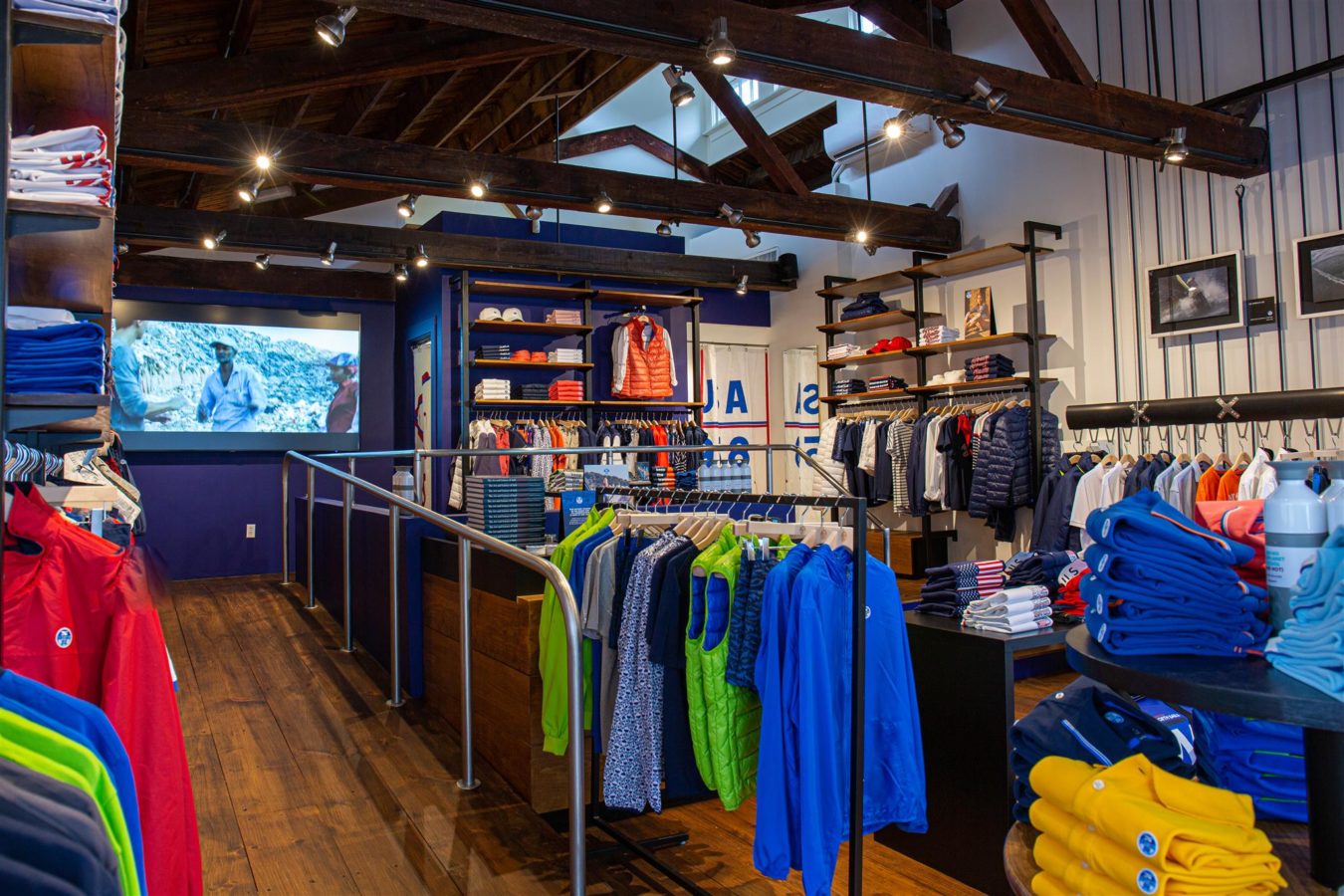
NORTH SAILS OPENS US FLAGSHIP SPORTSWEAR STORE IN NEWPORT
NORTH SAILS COLLECTION OPENS US FLAGSHIP STORE
Locals & Sailors Gather To Celebrate The New Location In The Home Of Sailing
📷Allison Barrett Photography
North Sails Collection, renowned for its lifestyle clothing and sailing crew collections in Europe has opened a new US flagship sportswear store in Newport, RI .The new store location is significant, placing it in the heart of the North Sails global headquarters and the hub of East Coast sailing. To celebrate the opening of the Flagship store, located on Bannister's Wharf in downtown Newport, North Sails invited the local sailing community to see the collection, meet the local team, and enjoy drinks and hors d’oeuvres provided by the Clarke Cooke House. North Technology Group CEO Tom Whidden attended the grand opening to sign copies of his recent book, The Art & Science Of Sails.
Featuring both the men's and women's lifestyle lines of the brand, the store reflects the spirit of exploration and the most playful aspect of sailing, as well as emphasizing the performance function of North Sails products.
Newport is an ideal setting to display the North Sails Collection mood, reflecting the two spirited factions of the sailing world: those of recreational and competitive mindsets. A mix of light and high performing styles come in a range of typical sailing colors - red, white, blue and yellow - while ocean blues, coral, orange and lagoon greens also add seasonality and high summer focus.
📷Allison Barrett Photography
North Sails continues to create sustainable designs throughout the collection: jackets, T-shirts, and swimwear made from recycled materials are enriched with shark imagery and graphics with the aim of raising awareness of conservation efforts. While NSX-Performance styles perfectly merge technical fabrics and details with style and comfort for everyday challenges.
The new Newport store also offers the North Sails Crew Collection, the most technical part of the collection intended for sailors and sea lovers. A line of high-performance products with proven cuts, tailored fits, and innovative materials. All the garments can be customized with team names and logos to make them unique.
The store is located in historic Bannister's Wharf, the iconic waterfront area of Newport, a city with a rich sailing connection and sporting heritage. The store will cater to the diverse and active community of sailors in the region who are regularly racing and cruising in the waters off Rhode Island, and tap into the busy schedule of world-class sailing events hosted in Newport.
📷Allison Barrett Photography
Thanks to a specially developed design concept, the store was planned down to the last detail to highlight each individual item of clothing: the shop windows immediately capture the attention of the consumer who is led into the North Sails world through bright environments and sleek, light lines outlining an architectural style in perfect harmony with the brand image. The fittings consist of steel structures while the original wood roof and floor — without any plastic materials used in the construction — reflects the mission of North Sails to educate consumers to embrace the change and protect the seas from plastic pollution, season after season.
Visit North Sails and shop the collection at 16 Bannister's Wharf, Newport, RI, 02840. Contact number : 401-324-5750
📷Allison Barrett Photography
📷Allison Barrett Photography
📷Allison Barrett Photography
READ MORE
READ MORE
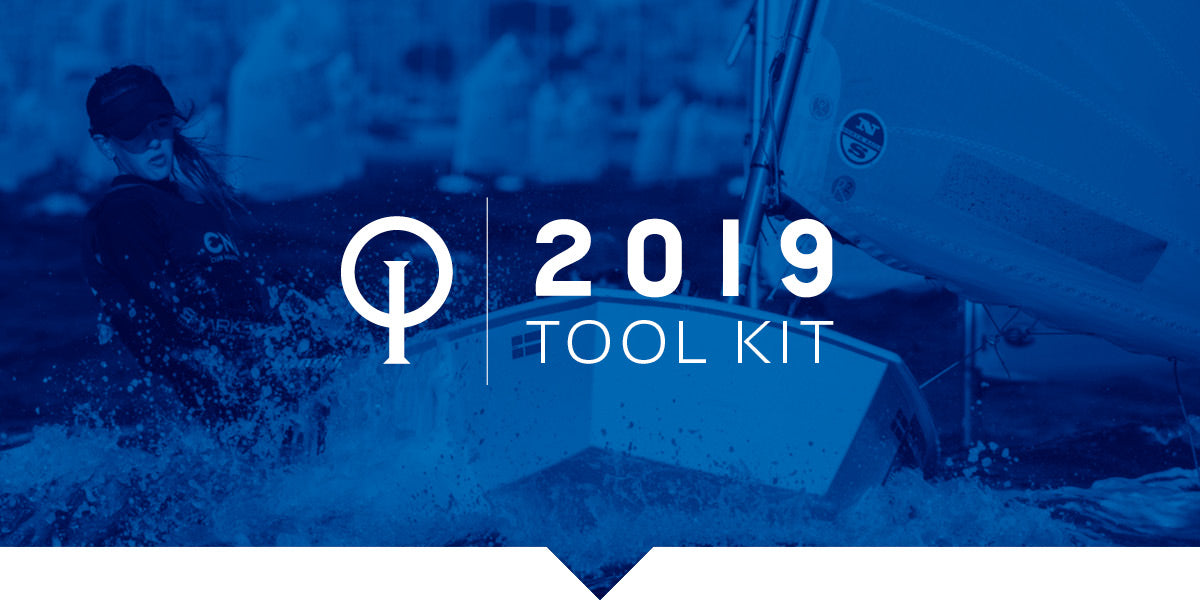
OPTIMIST WORLDS TOOL KIT
Get Ready For The Opti Worlds. There is no better performance test of an Optimist sail than the results it produces. Around the world, kids are winning regattas with North Sails.
READ MORE
READ MORE

LORO PIANA SUPERYACHT REGATTA
LORO PIANA SUPERYACHT REGATTA
A Showcase of Success For North Sails Clients
📸 Carlo Borlenghi
The Loro Piana Superyacht Regatta saw North Sails clients do a podium sweep across the three fleets. These results showcase another example of North Sails delivering a new level of performance to superyacht racing.
Sir Lindsay Owen-Jones’s Magic Carpet 3 collected three bullets to win the Performance Class. This Wallycento recently took delivery of a North Helix sail in advance of Palma Vela a few weeks ago. Using Palma Vela as their “dress rehearsal,” according to tactician Jochen Schümann, Magic Carpet 3 was able to dial in their performance to fly past the competition.
In the cruising division, Silencio*, Mariette of 1915*, and Meteor battled it out for four days, with owner Nikita Bourtakov on Silencio*, taking the win after scoring three bullets. Nikita commented; “I’d like to thank the Yacht Club Costa Smeralda and Loro Piana for creating this amazing platform where people with a shared passion can come and enjoy sailing, we had four days of amazing sailing. I’d like to thank the crew, which was really international, for getting us through the race and achieving this result. We are definitely going to be back next year.”In the Southern Wind division, Grande Orazio* came out on top, just two points ahead of Kiboko Tres and AllSmoke to win the division trophy. This was Kiboko Tres first event, which went well as they consistently improved over the course of the regatta and even won race two. Owner and helm of Grande Orazio* Massimiliano Florio was humbled by his overall victory commenting; “Winning is always nice. Sardinia is an ideal place for sailing, with its courses between the islands and the continuous changes in the wind. I would like to dedicate this victory to the engineer Willy Persico, an almost father-like figure who believed in me and accompanied me on this journey. For me, it is an honour to have brought Grande Orazio to victory.”
📸Carlo Borlenghi
READ MORE
READ MORE
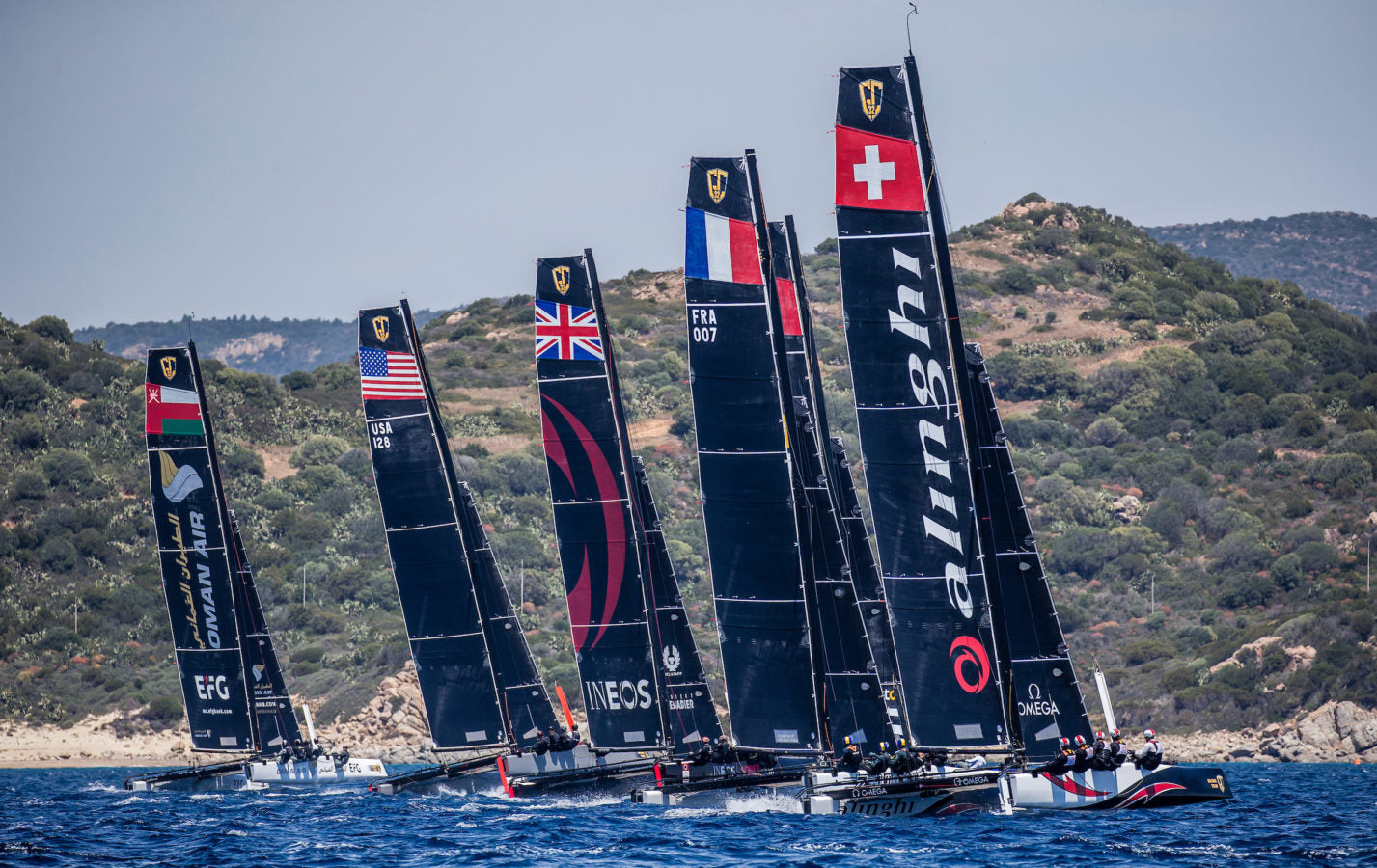
GC32 CIRCUIT: FULL SPEED AHEAD
GC32 CIRCUIT: FULL SPEED AHEAD
Pro & Amateur-helmed Teams Merge On GC32 Flying Catamaran Circuit
📸 Sailing Energy
While the America’s Cup may have migrated to foiling monohulls, foiling catamarans remain very much alive and kicking with the GC32 and the GC32 Racing Tour. This year the circuit absorbed the GC32 teams from the Extreme Sailing Series including Alinghi, Red Bull Sailing Team and Oman Air and with at least ten boats now regularly competing, and entries from afar afield as Australia, Argentina, and the USA, the GC32 Racing Tour is back firing on all cylinders.
North Sails has supplied GC32 teams with their one design sail wardrobe since the first examples were launched in 2012. At the time Laurent Lenne and Andrew Macpherson were conceiving the boat with designer Martin Fischer, they worked hand in hand on the sail plan with Gautier Sergent at North Sails France.
Then, as now, the sail plan hangs off a ‘classic’ catamaran rig with a rotating wing-section tube with a substantial section – 320 x 140mm – to allow luff tension to be maintained, with a single diamond and shrouds leading aft to each hull. Forestay and gennaker attach to a tubular bowsprit that extends forward from the mast step.
A wing, like those found on the America’s Cup catamarans, was never seriously considered, partly due to their logistical headaches, but mainly because the boat was conceived to be attractive both to pro and owner-driver teams. While the typical catamaran rig described might take a little getting used to for say a Melges 32 team, it is much less daunting than a full wing. Besides, the primary focus for new crews is learning how to use the foils and make the boat fly. Fortunately for its size, the GC32’s foils are large, and this makes it surprisingly easy to ‘fly’ the boat and promotes stability with very little impact on speed. Reaching, the boats have been known to touch 40 knots.
The GC32 has just four sails – 55.3 sqm mainsail, 24.17sqm J1, 19sqm J2, and a 88sqm gennaker. Fairly early materials evolved from 3DL to RAW 3Di in carbon, same for the gennaker.
“The biggest development has been with the gennakers,” says sailing legend Bruno Dubois, former head of North Sails France and North Sails Europe VP. Dubois was in Villasimius, Sardinia for the first event of the 2019 GC32 Racing Tour, managing the CHINAone NINGBO team, skippered by New Zealander Phil Robertson and with a crew otherwise identical to that of China’s Sail GP F50.
📸 Sailing Energy
An influx of America’s Cup teams to GC32 between San Francisco and Bermuda saw some using their gennakers in light conditions upwind – now common practice. Dubois explains: “The gennaker has a pretty straight exit and you can see people sailing upwind with the luff flogging, but they are using roughly 80% of the sail area. You don’t point as high, but it can get you out of trouble. As soon as it is flogging too much, typically in 7-8 knots, they roll it and go to the J1. That flogging, and when you furl upwind is when the gennaker, takes a beating.”
Teams are permitted five sail buttons annually, the fifth being for a spare gennaker. Typically top teams replace their sails annually, however, teams dipping into the circuit with chartered boats – like CHINAone NINGBO – round up secondhand sails from other teams. In Villasimius the Chinese were using a two year old main and gennaker. “I am surprised how nicely they’d held their shape,” said Dubois. “They are hi-tech sails but seem to go from season to season with no real problems.”
After a small hiatus last year over how the GC32 Racing Tour and ESS might unite, now this is resolved, the circuit for flying catamarans in which you don’t need an Olympic medal to steer, is on the ascent again. It is run by an active Class Association, with a familiar industry figure Christian Scherrer managing it. The Class received World Sailing recognition in 2017 and is now allowed to hold World Championships, the second of which takes place in Lagos, Portugal over 26-30th June.
“The good thing with the GC32 is that it has its own niche between the small foiling boats and the big ones,” concludes Dubois. “That is why it is so attractive to both private owners and pro teams or America’s Cup or SailGP teams who want to train between events as we are. The boat is so forgiving – we have three Chinese on board out of five crew and it is the perfect opportunity for them.”
📸 Sailing Energy
📸 Sailing Energy
READ MORE
READ MORE

NORTH POWERED RS21 PERFORMS STRONG AT CHICAGO NOOD
NORTH POWERED RS 21 PERFORMS STRONG AT CHICAGO NOOD
Chicago Based USA 1 Takes Top Spot
Christian Koules, racing onboard USA 1 in the RS21 fleet with Judy Lutz and Alex Newton Southon, from North Sails Chicago recaps the weekend of racing at the 2019 Helly Hansen Chicago NOOD.
The newest addition in the RS lineup is the RS21. I had the opportunity to sail in the new fleet at the Chicago NOOD series this past weekend. The 2019 NOOD series was a difficult one. Friday was promising, with a nice northeast breeze filling early on in the day, sailors were excited for champagne conditions. That excitement was quickly dulled, as a thick fog rolled in, reducing visibility to one hundred yards. Race committee made an on-shore postponement call, and sailors waited anxiously on land for the fog to lift. Unfortunately, at 1:30p.m. race committee flew the AP over A flag, or the no racing today flag. This did not stop most of the J/70 and all of the RS21 fleet from heading out and getting some great medium breeze practice in. The RS21 fleet was able to run four, two lap races. The J/70 fleet was able to get off three practice starts and three full 2 lap practice races.
Saturday offered a range of different conditions for racers in all circles. The breeze began as a strong northerly, consistently in the 8-12 range, but as the sun rose over the city the breeze clocked to the right and pressure dropped to a light 5 knots. The sea state was kicked up from the northerly early in the day, so it was a light and lumpy five knots. As the day trekked on, the breeze shifted back left again, and the velocity increased to a stellar 15 knots and sailors once again had the opportunity to try their luck in the bigger breeze.
Saturday night was a textbook Chicago NOOD party, with sailors from every fleet congregating at Chicago Yacht Club Monroe Station for the Mount Gay Rum Party. The competitors enjoyed the blustery Chicago spring weather, and rousing stories from the day. A highlight of the night was certainly the RC boat racing. The Dragon Force 65 is a fleet that has taken off in Chicago, with almost twenty RC boats entered into the regatta. Consistency was key in the fleet, and Val Smith walked away with the win, with an impressive score line, and only two races out of the top five.
Sunday began with almost no breeze, and the forecast looked disappointing. Rainstorms south of the city appeared to be consuming most of the breeze in the morning, and the sun struggled to peak out from behind the thick cloud coverage. Race committee made the call and sent all fleets out promptly at 10 a.m. As competitors sailed out, the breeze began to fill nicely, with puffs of ten and twelve knots becoming regular occurrences. Hopeful the breeze would stay consistent, all fleets started the first race of the day. As the fleets all approached the windward marks, the breeze dropped quickly to an unsailable one to two knots. As the breeze was dropping a thick fog also began to roll through the course, which made racing almost impossible. Shortly after the race was called and once again AP over A was flown and the fleets were all sent in, thus wrapping up the 2019 Chicago NOOD series.
The RS21 is a phenomenal sport boat, and I’m glad I had the opportunity to sail them, against difficult competition. Although the fleet was small, there was a strong international presence, and the team I sailed with spent most of the regatta duking it out with the Japanese team. The RS21 is a simple boat. The deck and all rigging has been designed with simplicity in mind, making it the perfect club boat, or go fast boat, for those who just enjoy ripping around on a breezy Sunday afternoon. The cockpit is wide open, and the carbon fiber rig is designed with only one set of spreaders. Arguably the most convenient of all the features on the RS21 is the integrated engine set up. The hull is designed with a drop-down engine, where you release a cleat, push the motor into place and put it into gear. This is easily one of the most flawless integration of boat and engine I have ever seen. My only gripe with the boat is the Vang-sheeting angle. In my opinion, sport boats like the RS21 should have the Vang lead back to the driver or main trimmer, not only for safety but also for speed. The Vang on the RS21 dead ends at the mast, which means if you need to crank on more Vang or blow it in a spin out, you’re out of luck. Aside from the Vang positioning the RS21 is a very well thought out and agile sport boat. Given the opportunity I would recommend everyone sails them.
Chicago NOOD 2019
North Winners
1st
Victory / J/70
1st
Vytis / J/105
1st
NoMaTa / PHRF
2nd
Das Boot / Beneteau 40.7
2nd
Soulshine / Beneteau 36. 7
2nd
Warlock / J/111
2nd
Heartbreaker / PHRF 1
3rd
Kashmir / J/111
2rd
Erizo de Mar / Beneteau 36.7
3rd
Painkiller / PHRF 3
3rd
Natalie J / PHRF 52
3rd
Inferno / Farr 40*
3rd
Windsong / J/88*
North Sails Rally Winners
ORR 1 - 2nd
Night Train*
ORR 1 - 3rd
Aegir
ORR 2 - 3rd
Badge
PHRF 2nd
Jahazi
PHRF 3rd
Ob La Di
ORR Cruising - 2nd
Mise en Place
* Denotes Partial North Sails Inventory
READ MORE
READ MORE

NORTH SAILS DOMINATES BAYVIEW ONE DESIGN
NORTH SAILS DOMINATES BAYVIEW ONE DESIGN REGATTA
Bayview One Design Regatta 2019
Overall Boat of the Week, Jim Allen, winner of the Lightning Class. Photo Credit: Skip Dieball
Racers eagerly lined the docks for the 2019 Bayview One Design Regatta at Bayview Yacht Club the first weekend in June to kick-off a race filled weekend.
What a great event. Even though the weather didn't cooperate for the whole weekend. Congrats to Race Chair Nathan Hollerbach, Bayview Yacht Club and all the Volunteers on a great event. North Sail is pleased to see all of our customers have a great time on and off the water. We had many accomplishments on the water that it is hard to highlight them all.
North Sails Detroit local expert Karl Kuspa shares;
One team that really caught my attention was the Kirkman sons Michael and Conner. They sailed the family J70 in this weekend finishing 5th but winning two races. The average age of their crew was about fifteen. How exciting. Of course we also need to acknowledge Jim Allen who won the Lightning Class in his boat powered by North. His performance earned him Overall Boat of the Week.
We were pleased to see how many people took advantage of us bringing Andreas Josenhans (AJ) in for post-racing debriefs. He did a lot of one on one consultations with boat owners and crew; there was a line all weekend to talk to him. What a great resource, we appreciate AJ coming in for this event and sharing his years of experience.
Local sales expert Geoff Moore, racing on a Beneteau 36.7, also mentioned the benefit of having AJ on site for racers to connect with post-racing and learn from.
Photo Credit: Element Inc
North powered J120 "Hot Ticket" owned by Mike and Bob Kirkman Photo Credit: Element Inc
North powered J35 "Blackhawk" owned by Tim and Amie Ross Photo Credit: Element Inc
Bayview One Design Regatta 2019
Star
2nd
Compulsion / Terry Gibney
Lightning
1st
Atom / Jim Allen
2nd
USA14867 / Ernest Dieball
3rd
USA15545 / Todd Wake
Beneteau 36.7
3rd
Patriot / Ken Sharpe
J120
3rd
Kairos / Greg Baker
PHRF A
2nd
Spitfire / John Marentette
Tartan 10
3rd
Taz / Hanson Bratton
C&C 35
1st
Contender / Gary Graham
Cal 25
1st
Pagan Baby / Merc and Eric Hollerbach
J70
1st
Pale Horse / Jake Christy
2nd
FM / Todd Sackett
4th
Hot Ticket / Michael Kirkman
* Denotes Partial North Sails Inventory
READ MORE
READ MORE

BEN KELLY JOINS THE NORTH SAILS BRISBANE TEAM
BEN KELLY JOINS THE NORTH SAILS BRISBANE TEAM
The sailmaking veteran focuses on multihulls for Australasia
Ben Kelly joins North Sails in Brisbane
Ben Kelly has been working with racing and cruising multihull clients for twenty-four years, but he grew up sailing skiffs and dinghies. "People always say, "Oh, you're a cat sailor," he explains."And I say, "No, I'm not. I'm a sailor." I still love to jump on all sorts of boats. But it’s a little bit of an awakening, when skiffies and other sailors realize, "they're not all weird over here." After so many years in the sailmaking business, it’s easy to forget that Ben originally planned to study architecture. Instead he apprenticed at the sail loft owned by friend and mentor Colin Metcher—because "life just looked too much fun as a sailmaker," he says with a laugh. "On my school holidays, I worked to try to pay back all the sails we dreamed up for the various boats I was sailing. I was pretty handy at making my own sails, and I loved it. I just got sucked into the creative side, learning the art of building strong but light sails." In 2004, Ben and his wife bought the business; after a few years, they changed the name to Sailtech Sails Australia, to better capture an increasingly national customer base. Around the same time, Ben was invited to sail on Trilogy, a Grainger 31. "Here in Australia, we have a huge range of multihulls that sail to a rating rule called OMR, a bit like IRC. The fleets include a wide range of boats and a mix between inshore and offshore racing, a bit of an Aussie thing." Over the next ten years, Ben helped Trilogy win seven national multihull championships and also won national titles aboard Voodoo Spirit and Mad Max. Along the way, he developed a specialty in multihull sails. "I really enjoyed going fast and working with a small team to get results," he explains. "It just became the type of sailing I mostly do." By 2012, Ben had realized that future sailmaking success would require connection with a global brand, so he sold the loft to Quantum Sails. In 2015, he took over management of the Australasia area as director of sail design; a year later, he won first prize in an internal company competition for customer service, which made it possible to take his family on a four week trip to Europe. Meanwhile, competing with North Sails was becoming increasingly difficult. "It was very hard for us to sell against a team of highly skilled people that offered state of the art products with ever-increasing durability," Ben explains. "North is working hard on low-stretch and durable options that perfectly suit my clients. I started to see the potential of being part of that, which would help me help my customers." Ben’s departure will shut down the sail loft where he’s worked since childhood, so the move is definitely bittersweet. "I've been involved with this business, this actual business, since I was ten," he explains. "Colin’s kids were my friends, and we all sailed together. But North has great systems and great people, and they are acknowledging what I specialize in and the success I’ve had. I can be more successful with that platform." He’s also excited about the rapid growth of multihull sailing. "In Australia, you can't ignore the Mum and Dad sailors. I feel like I’m in a great position to broaden the footprint I work with and generate a path for multihull sailors to get really good racing and cruising sails, and work with really good service teams." Ben and his wife have a nine year old son who, like his parents, loves being outdoors. "Mountain biking, sailing - he comes out with me on customers’ boats." Proudly, Ben adds, "He’s been spoiled. He’s done 20 knots lots of times." Ben’s next regatta will be Airlie Beach Race Week, sailing on one of the four Extreme 40s based in Brisbane. "It's a lot like sailing skiffs with training wheels," he says. "All four are my customers, and all four will meet for the first time in the Whitsundays. And then we're going to Hamilton Island Race Week. That is going to be a serious amount of fun." Whether off at a regatta or in his new office at the North Sails Brisbane loft, Ben says his focus will remain on customer service: "Each and every one of those guys is incredibly important to me." He’s also excited to share the multihull experience. "There's some really good sailing to be had, and in recent years there has been more sailors experiencing what multis have to offer." Last but not least, he admits that he’d love to be dropped onto Francis Gabart’s big tri Macif for a day. "Sailing fast, it’s so addictive!"
READ MORE
READ MORE

ORC WORLD CHAMPIONSHIP
ORC WORLD CHAMPIONSHIP
Clients Win Two World Titles In Sibenik, Croatia
📸 regate.com.hr
North Sails clients had a top-notch showing at the 2019 ORC World Championship, held in Sibenik, Croatia, sweeping the podium in both Class A and Class B. Sibenik served up fantastic racing conditions, with a mix of offshore racing and windward-leeward races making an exciting challenge for all participants.
In Class A, Skipper Marco Serafini on the TP52 XIO was crowned World Champion. Sandro Paniccia’s Scuderia 50 Altair 3 finished second, followed by Roberto Monti’s TP52 Air Is Blue in third.
In Class B, the Swan 42s came out hot, taking all three podium spots. Massimo de Campo’s Selene* won overall, taking the Class B World Championship title. Alberto Franchi’s Digital Bravo was second, while Andrea Rossi’s Mela finished third.
North Sails was a proud sponsor and official sail supplier, supporting sailors worldwide with onshore support and Certified Service, led by the North Sails team in Dugopolje and Sukošan. Due to the windy forecast, the client support was significantly valued over the course of the regatta.
North Sails Expert Giovanni Cassinari raced on the Class A winner TP52 XIO and reported that his entire team was very pleased with their performance. XIO is a 2012 generation TP52, and the team has maintained her original sail plan configuration. By winning all the inshore races and placing second in the distance race, XIO swept Class A with a 12 point lead.
📸 regate.com.hr
“We were by far the fastest boat in our class,” said Giovanni. “We stayed conservative on the starting line, organized a game plan for our maneuvers so they could be executed without any hangups. When it came to tactics, we always tried to be one step ahead.”
Winning all but one race, the team knew they would likely win the regatta—but that didn’t mean they got lazy. Giovanni was responsible for tuning the mast and trimming the mainsail, and he says they were always sailing the boat to its maximum potential. “The trimmers would work very hard to stay in sync and were ready to make even the slightest adjustments to keep the tactician happy, so he could continue to put our boat in the best possible place on the racecourse for us to stay in the lead.”
When it came to tactics, we always tried to be one step ahead.
North Sails was a proud regatta sponsor as official sail supplier, and the North Sails team in Dugopolje and Sukošan supported sailors from all over the world with both dockside support and Certified Service. Giovanni commented, “Due to the windy conditions we experienced throughout the regatta, the loft support onsite was greatly appreciated.”
Congratulations to our clients on great racing and a big thanks to our North Sails local experts in Dugopoljie and Sukošan for being hands on to make sure our clients were race-ready.
📸 regate.com.hr
📸 regate.com.hr
READ MORE
READ MORE

WHEN THE CAT'S AWAY
WHEN THE CAT'S AWAY
Another Successful Year For The Catamaran Guru Rendezvous
📷 Catamaran Guru
In 2018, our friends at Catamaran Guru initiated the first annual All-Catamaran Rendezvous, drawing over 30 boats to join in for a couple of days of sailing, activities, socializing and fun. After such glowing success, the 2019 event, held May 26th - 29th attracted more Catamarans and over 100 excited sailors for the second annual Rendezvous in Abaco, Bahamas. North Sails Catamaran expert and Fort Lauderdale loft manager Bob Meagher attended the rendezvous to spend time with the fleet, assisting with on-boat inspections of sails, and delivering tips & tricks for getting the most out of these popular boats. Owners of Lagoons, Leopard, Prouts, and many more enjoyed a week of workshops, parties and camaraderie.
📷 Catamaran Guru
At the end of the week, Catamaran Guru leaders Stephen and Estelle Cockroft presented the Hopetown Junior Sailing Club with a generous donation of $2,000 in support of the new generation of sailors. To conclude the week, some boats lifted anchor from Marsh Harbor and headed to cooler climates in the North, while other planned to spend some quality time exploring the Bahamian waters before returning home to South Florida.
We couldn't have asked for a more enjoyable week. Getting on board these fun boats, helping out with all aspects of the sails, and getting to know the sailors was a pleasure. Seeing people living their dream and exploring new waters is what it's all about and we're happy to be there to see it with them.
Bob Meagher, North Sails Loft Manager, Fort Lauderdale
The growing success of the last two years means that the 2020 Rendezvous will be in high demand. If you would like to join in 2020, please continue to check in with Catamaran Guru for updates on dates and sign up information. Bob and the team at North Sails are excited to continue supporting the event and all boats and crew year round, so if you have any questions on your sails or want to find out how North Sails is optimized for Multihulls, please do not hesitate to talk to your local team.
READ MORE
READ MORE
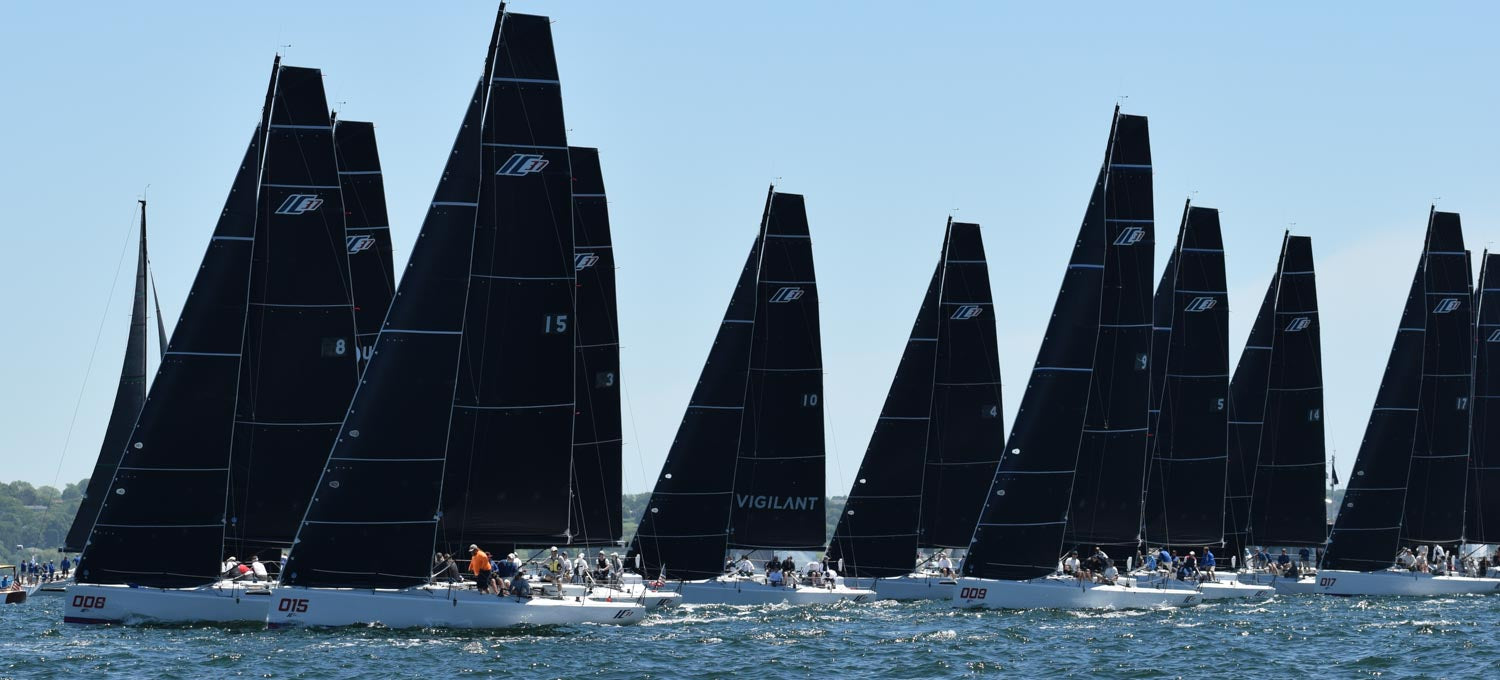
MELGES IC37 TIPS: VOLUME TWO
MELGES IC37 TIPS: VOLUME TWO
What We Learned at The Leukemia Cup
📸 Elizabeth Elder/New York Yacht Club
It can’t get more exciting than this for the Melges IC37 fleet and the New York Yacht Club members. All nineteen teams lined up for the Leukemia Cup for their first “official” regatta. Congratulations to Cory Sertl and Peter Denton’s Das Blau Max for crossing the finish line first.
As the teams figure out the boats, we noticed that the gap between mid-fleet and podium performance is small and getting smaller. Small improvements can make all the difference and means minutes off the course. Here are the takeaways from our experts Ken Read, Kimo Worthington and North U Bill Gladstone:
Spinnaker Sets
The jib is fairly large compared to the spinnaker size which makes it hard to set the spinnaker due to backwind from the jib. Mark the spinnaker halyard with a piece of tape so the mast person pulling up the halyard knows when they have “rung the bell”. As soon as the mast person says “made”, in light air under 10 knots TWS, the jib halyard is released immediately and completely, un-cleating the jammer and smoking the luff down the headstay to get the kite to fly properly, but not before the mast person says “made”. In over 10 knots TWS, a complete release of the jib sheet on the “made” call will ensure that the kite fills properly and immediately. Then, trim in the jib slightly if your intention is to use it as a staysail. And keep in mind, under 10 knots for sure is too light for a jib staysail. 10-12 is marginal. Over 12 is likely.
Jib Trim
“I personally think that the jib track starts all the way inboard and only moves out when the mainsail starts too luff due to excess backwind,” explained Ken Read, Melges IC37 Guest Coach & North Sails President. “I didn’t see many with the car all the way in yesterday. I raced in with a boat in the final race with the long upwind leg and found our boat to be quite fast with the car all the way in.”
Due to the shape of the cockpit, the jib trimmer when trimming to leeward, sits well outboard from the clew of the jib. This makes an optical illusion for the jib trimmer as the lower part of the jib is very round and looks to literally be pointing back towards the middle of the boat. That is actually not the case. The lower leech of these jibs is quite open to allow for the jib to be sheeted quite far inboard so take advantage of the lead positioning and keep trying to sneak it inboard.
📸 Melges Performance Sailboats
Runners During Tacks
In fresh breeze, with the runners loaded hard, it pays to trim the new runner on before the old runner is eased – the goal is to transfer the runner load rather than ease one side and reload the other side. This requires that the tactician loads and grinds the new runner before the helm goes down, as the old runner needs to be eased promptly as the bow goes through the wind. (When it is windy enough to require this, there should be at least two crew behind the driver – usually tactician and floater.
Marking the runner with tape near where the line goes around the winch at max load helps to keep the runner trimmer’s head down grinding instead of looking up at the main to see how much is on.
Halyard
Play with the controls, constantly. Jib halyard tension directly affects shape and often it is an overlooked control as the breeze picks up or dies down. Keep the cabintop winch loaded with jib halyard when going upwind to allow for fine tuning as velocity shifts happen – clutch stays open. On final approach to windward mark, the pit person closes clutch, swings legs in, transfers load from cabintop winch to clutch and preloads cabintop with spin halyard ahead of hoist.
Mainsail Trim
In light air carrying the boom just above centerline allows for a proper twist profile without having the main fall into the jib. Don’t get carried away with this. A boom width above center seems to work; up near the runner is too much. Unless running very deep, actively trim main when reaching. It is very easy to ease too far out and lose any advantage from a properly trimmed main.
Spinnaker Drops, Step By Step
Timing is everything, clear actions are everything else. First step: put your strongest person on the takedown line, ready to go in the cockpit. Second step: if you have an extra body, someone down below acting as squirrel forward and to starboard helps to gather the sail down below (faster and cleaner douse). Third step: a decisive turndown to unload kite should be timed at the exact instance when a douse happens. Blow sheet and halyard while takedown line is being hauled; all load is now out of sail and belly is aimed at the hatch. When foot and belly is under control, blow the pole while bow team is gathering tack – this helps bring pole in. When all under control, finally blow the tack. Pole should be in, tack following suit.
Your resource page for the IC37 by Melges
Sunday Pre-Racing DockTalk with Ken Read
https://www.northsails.com/sailing/wp-content/uploads/2019/06/Melges-IC37-Class-YT.mp4
READ MORE
READ MORE